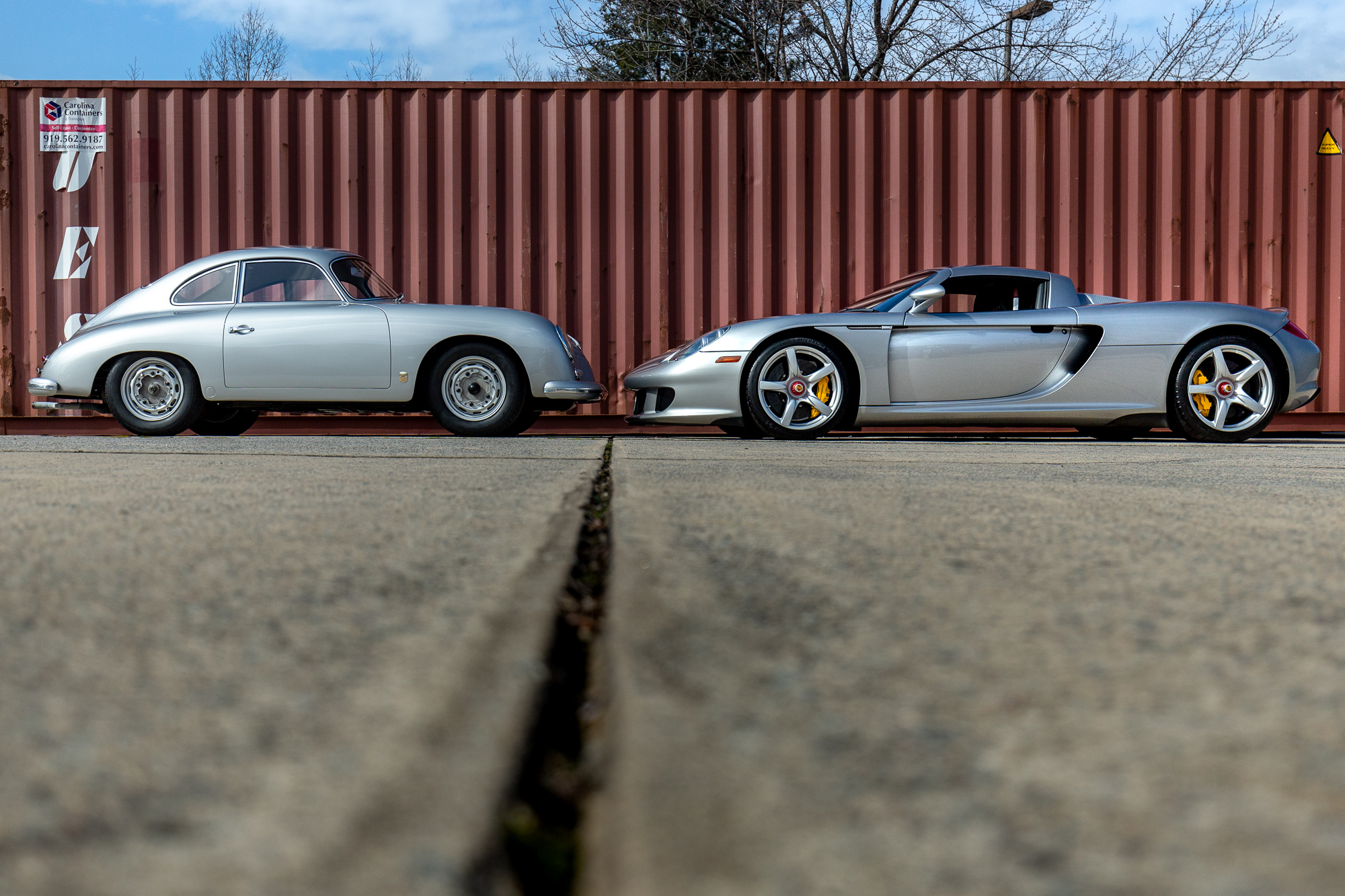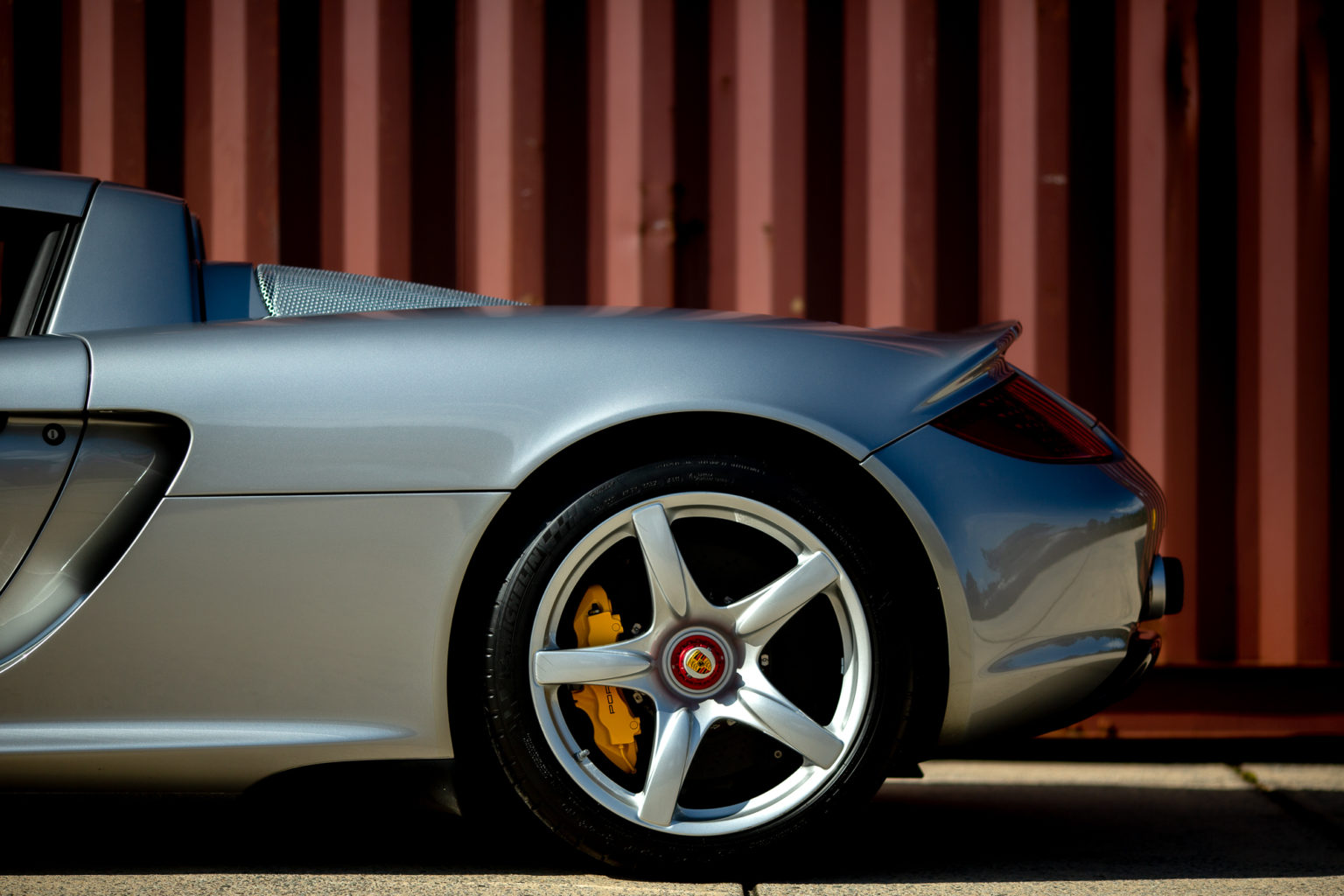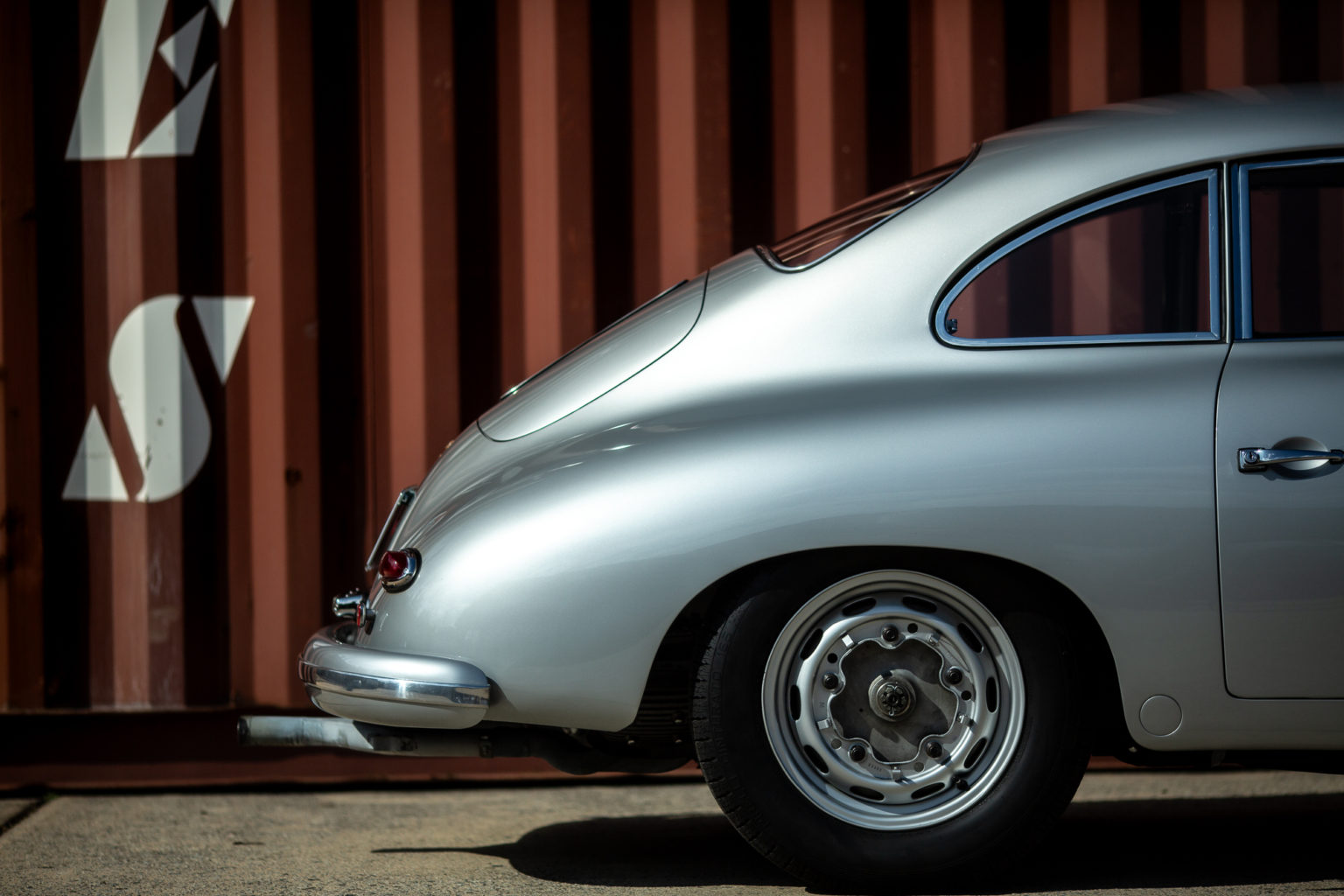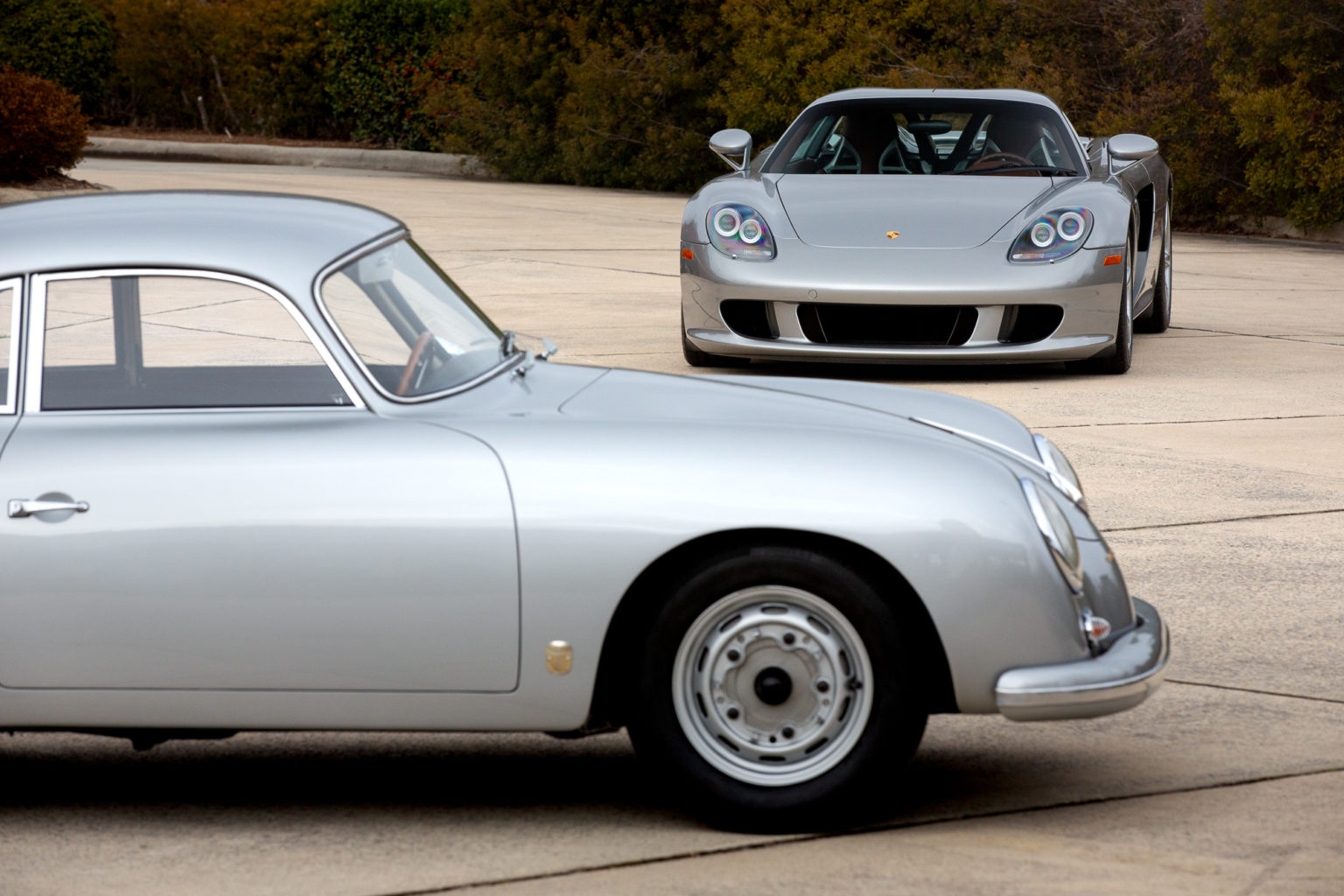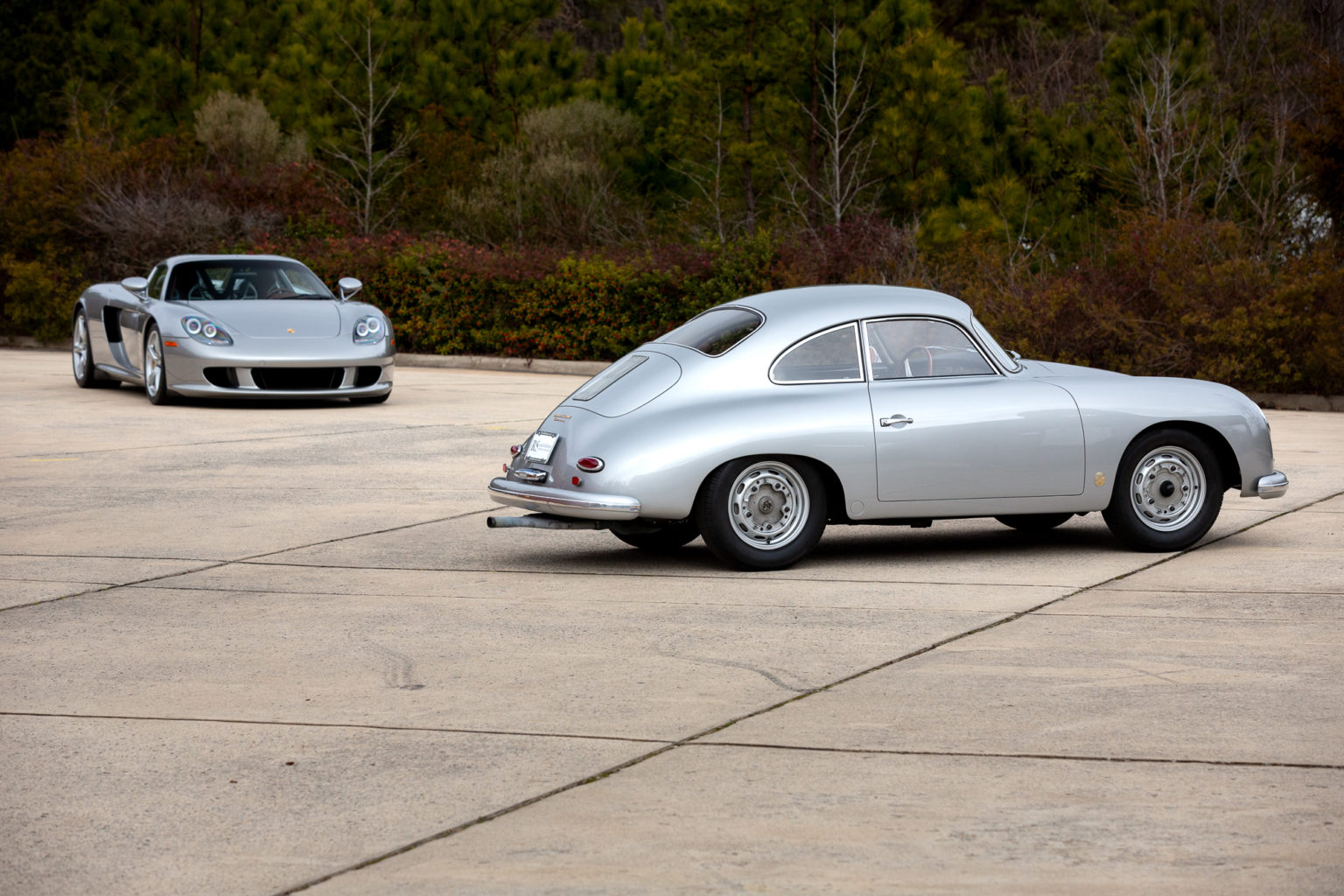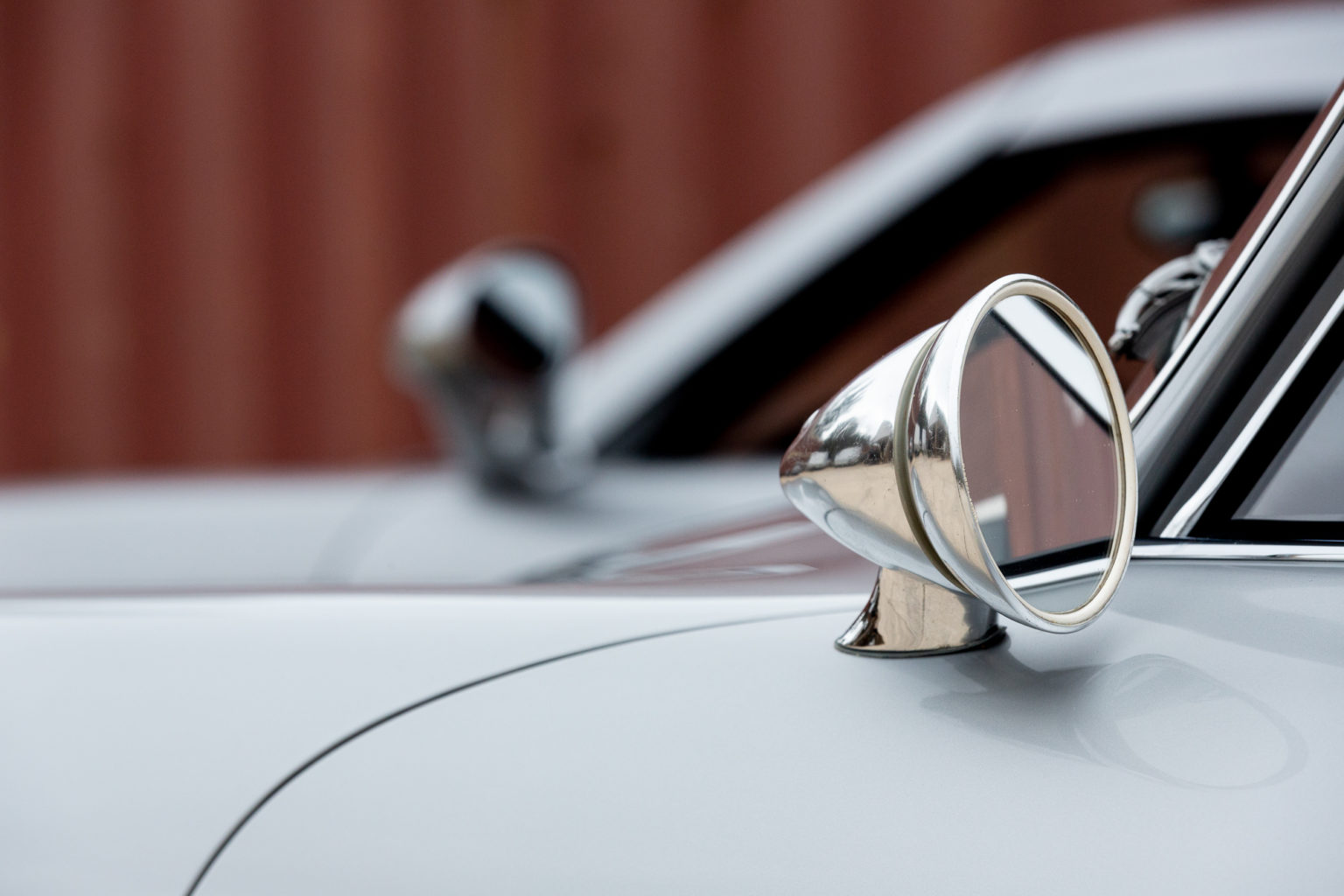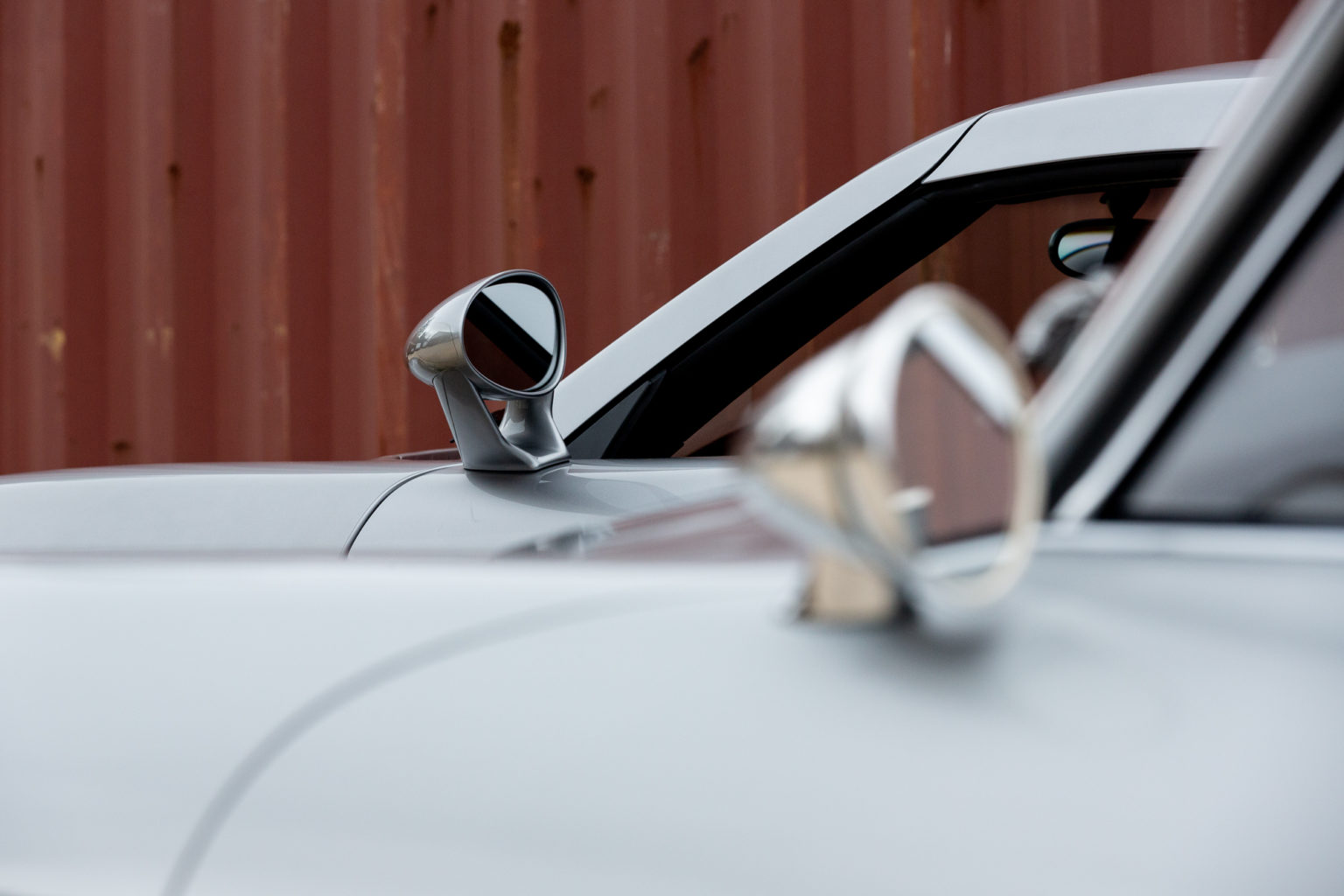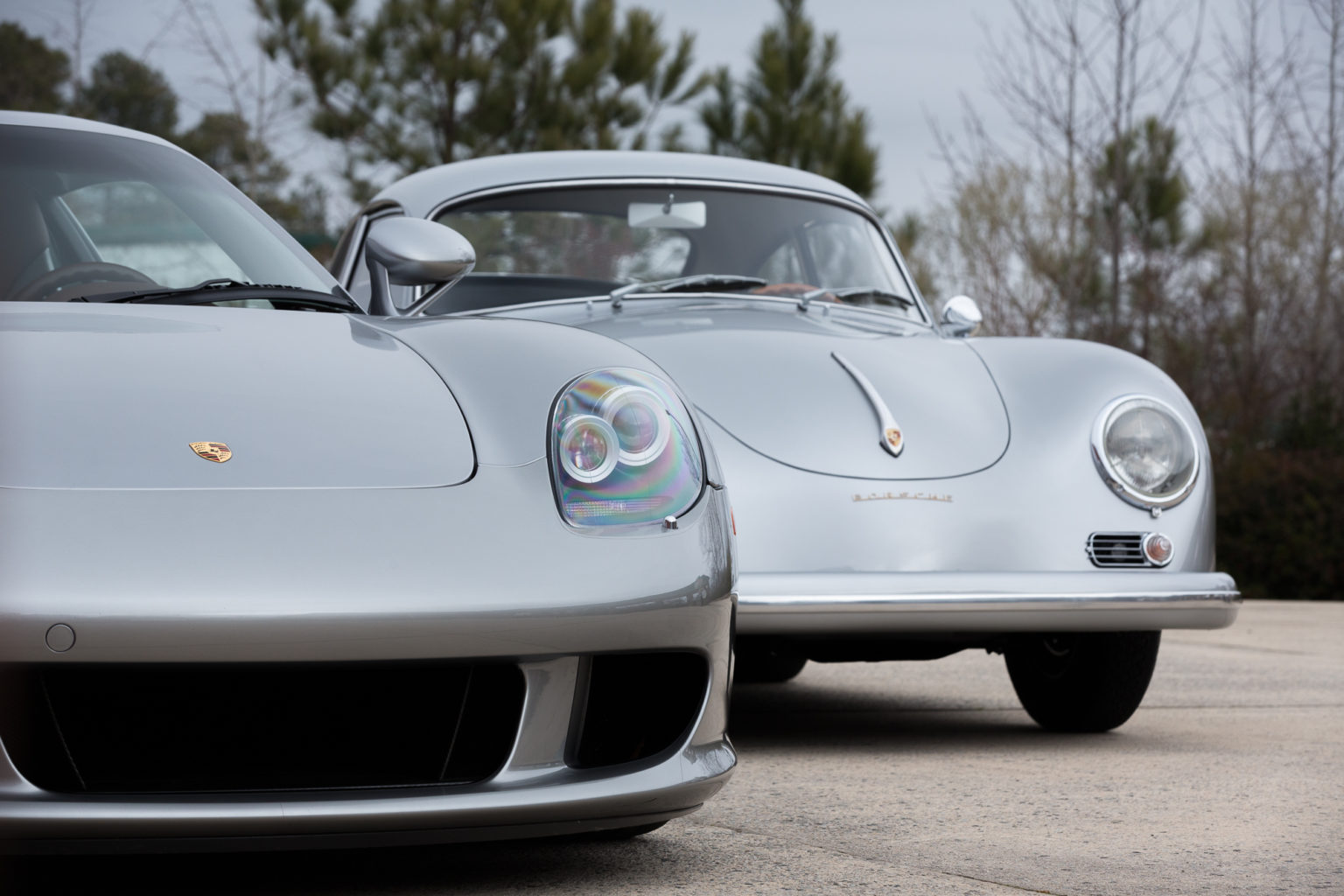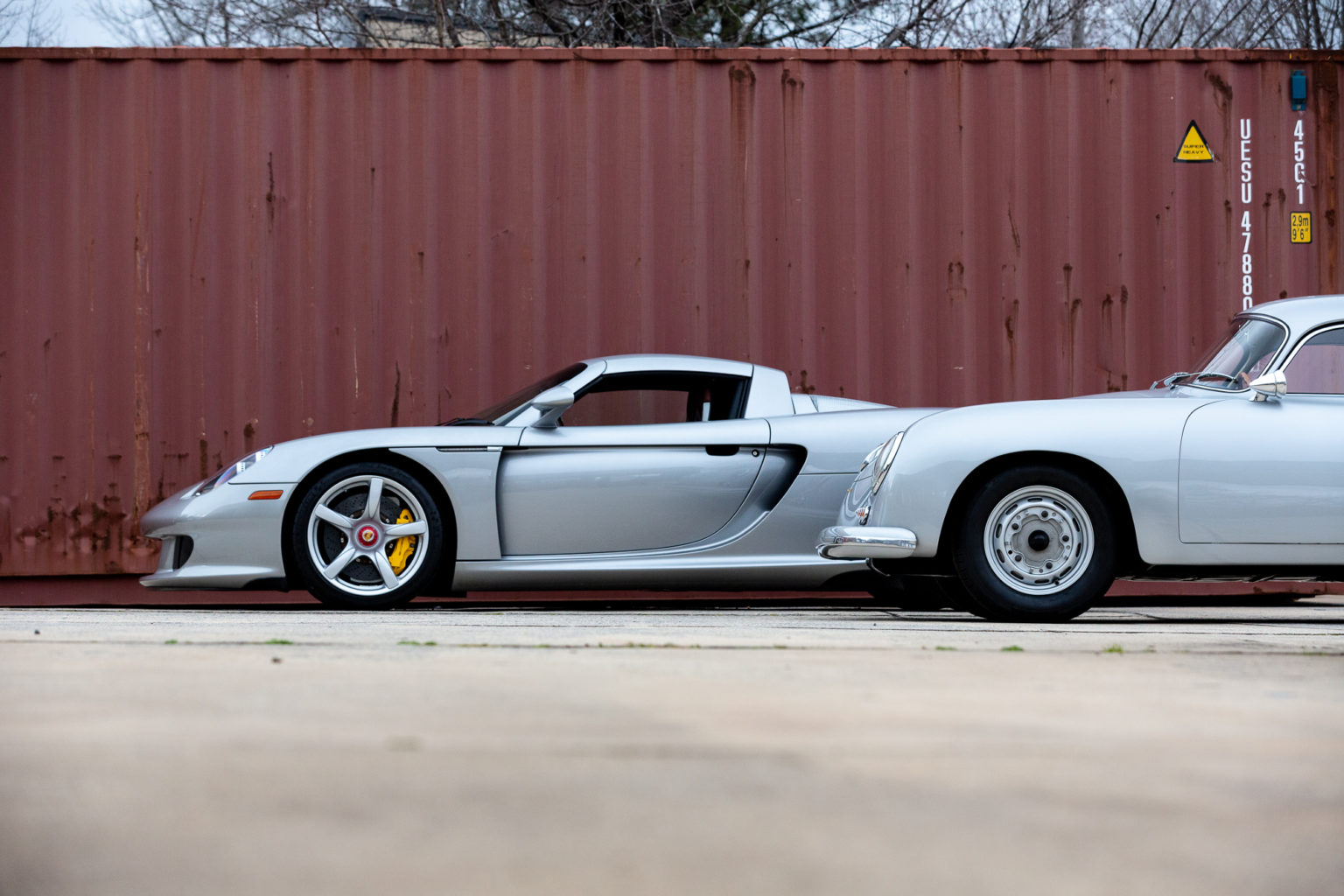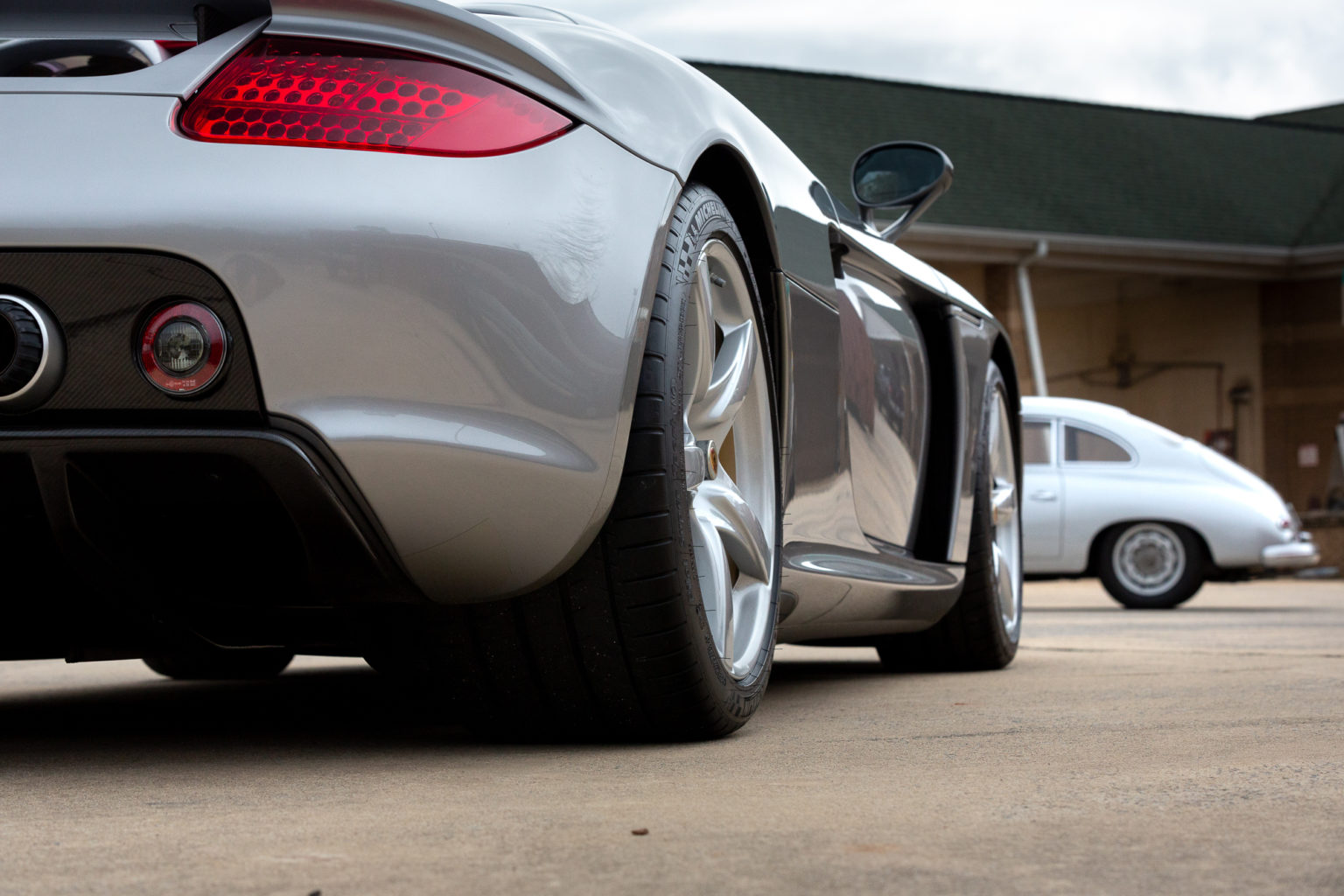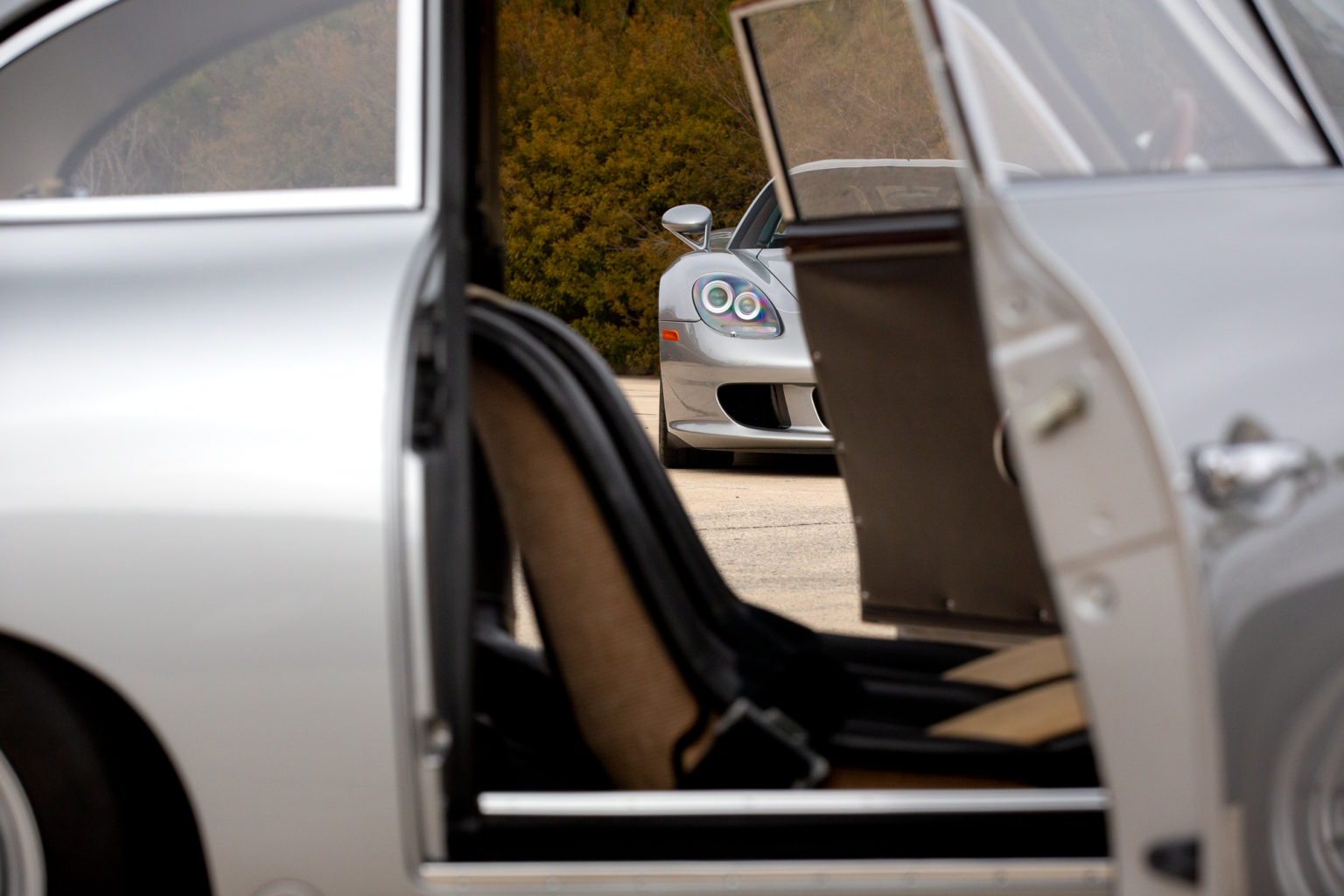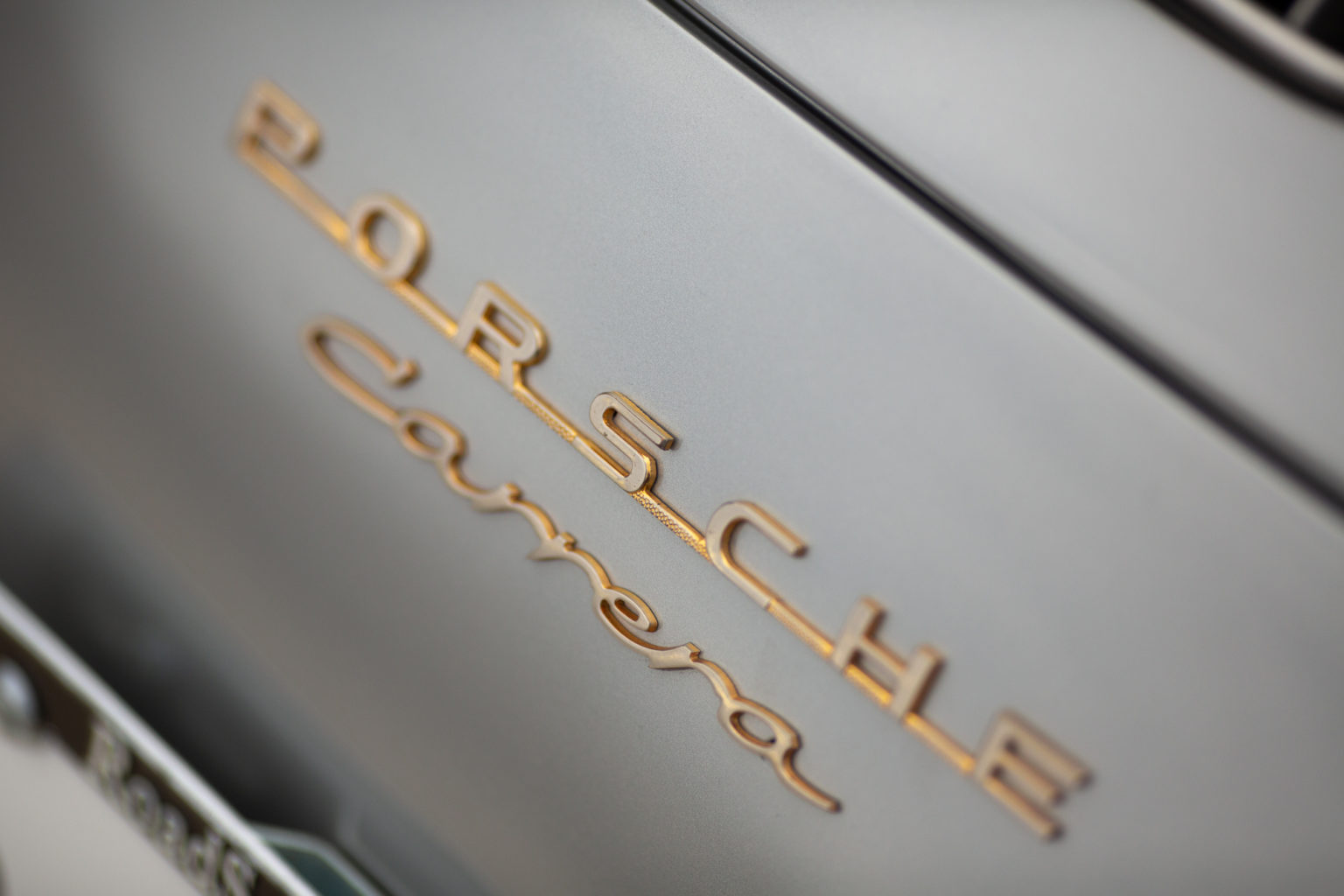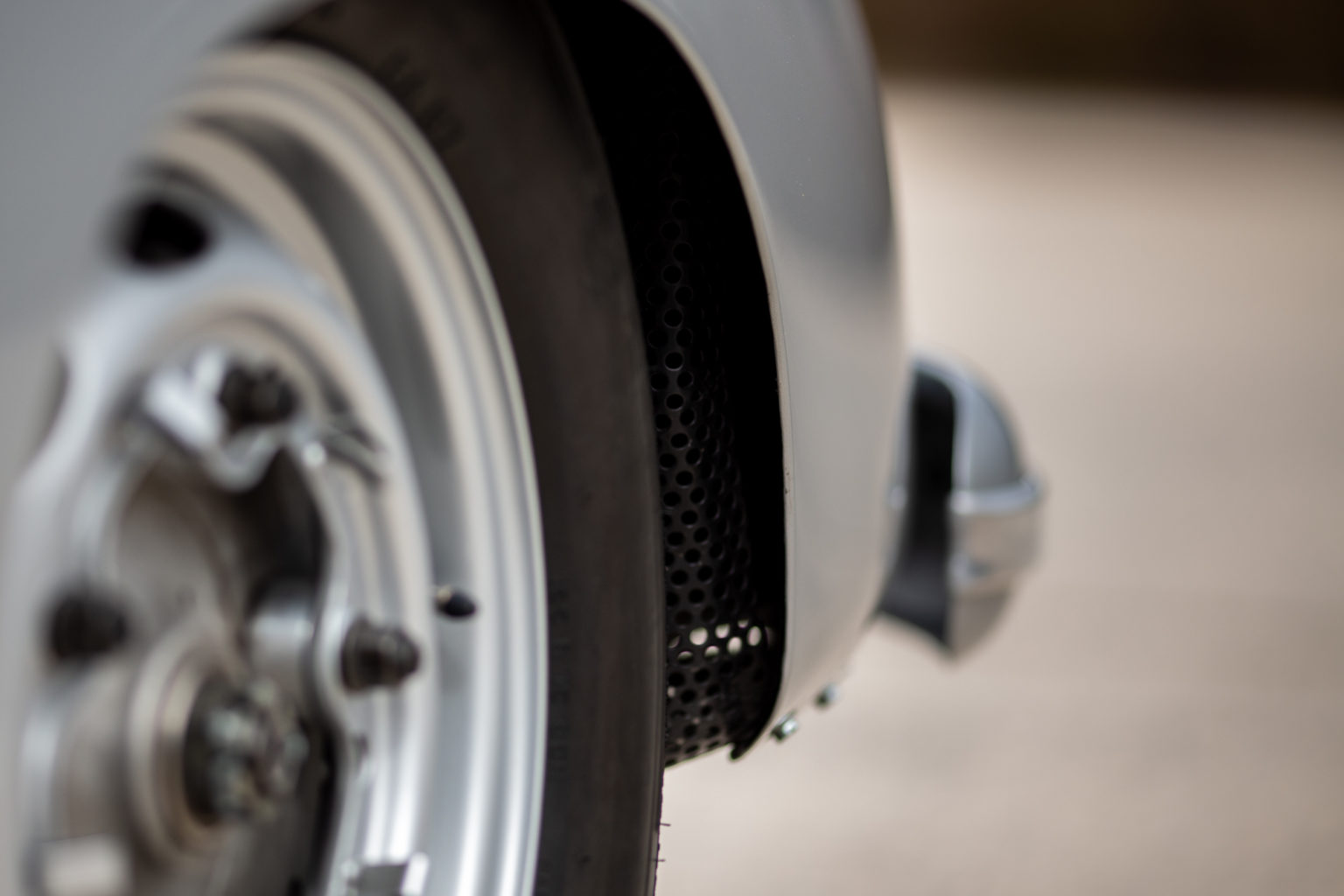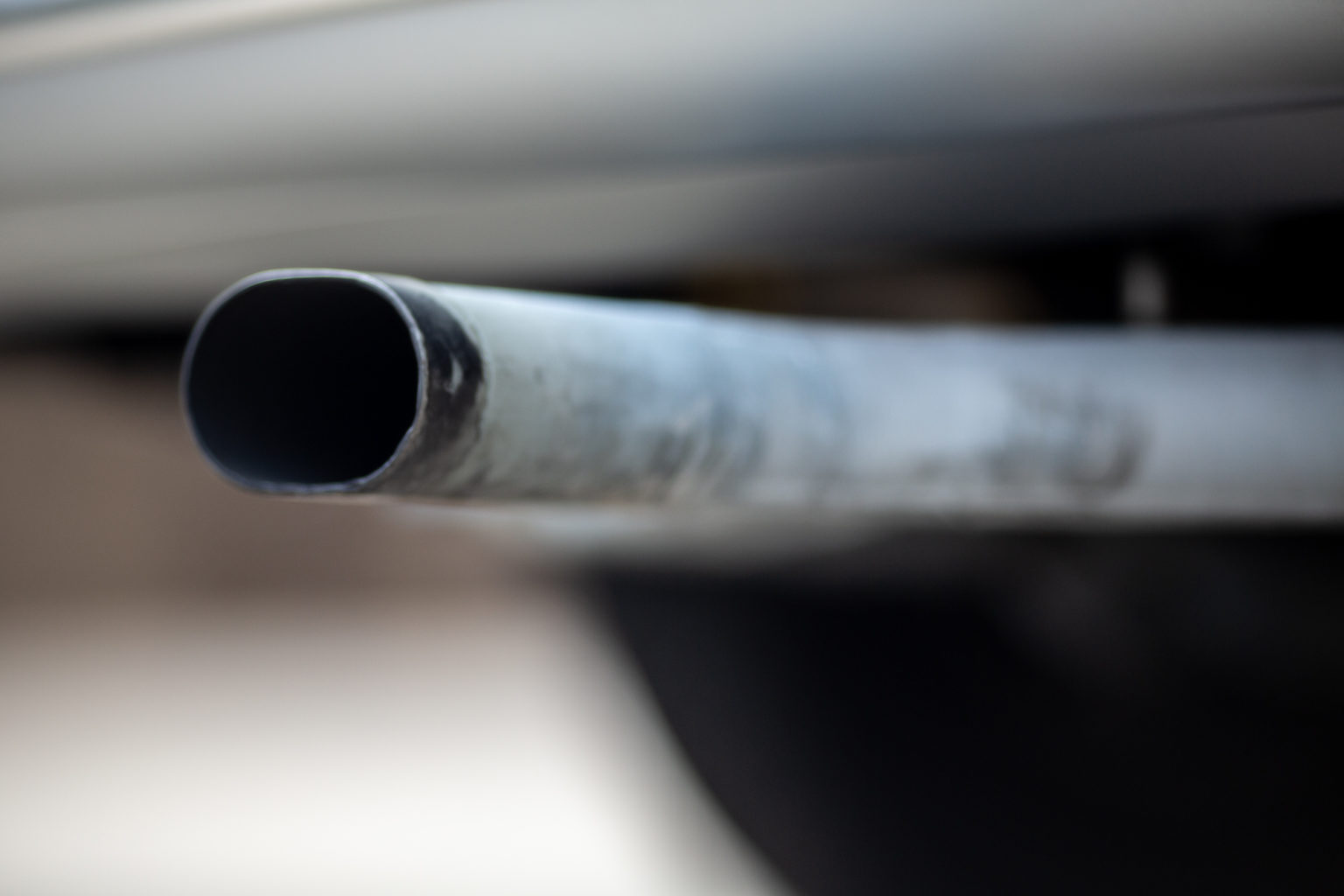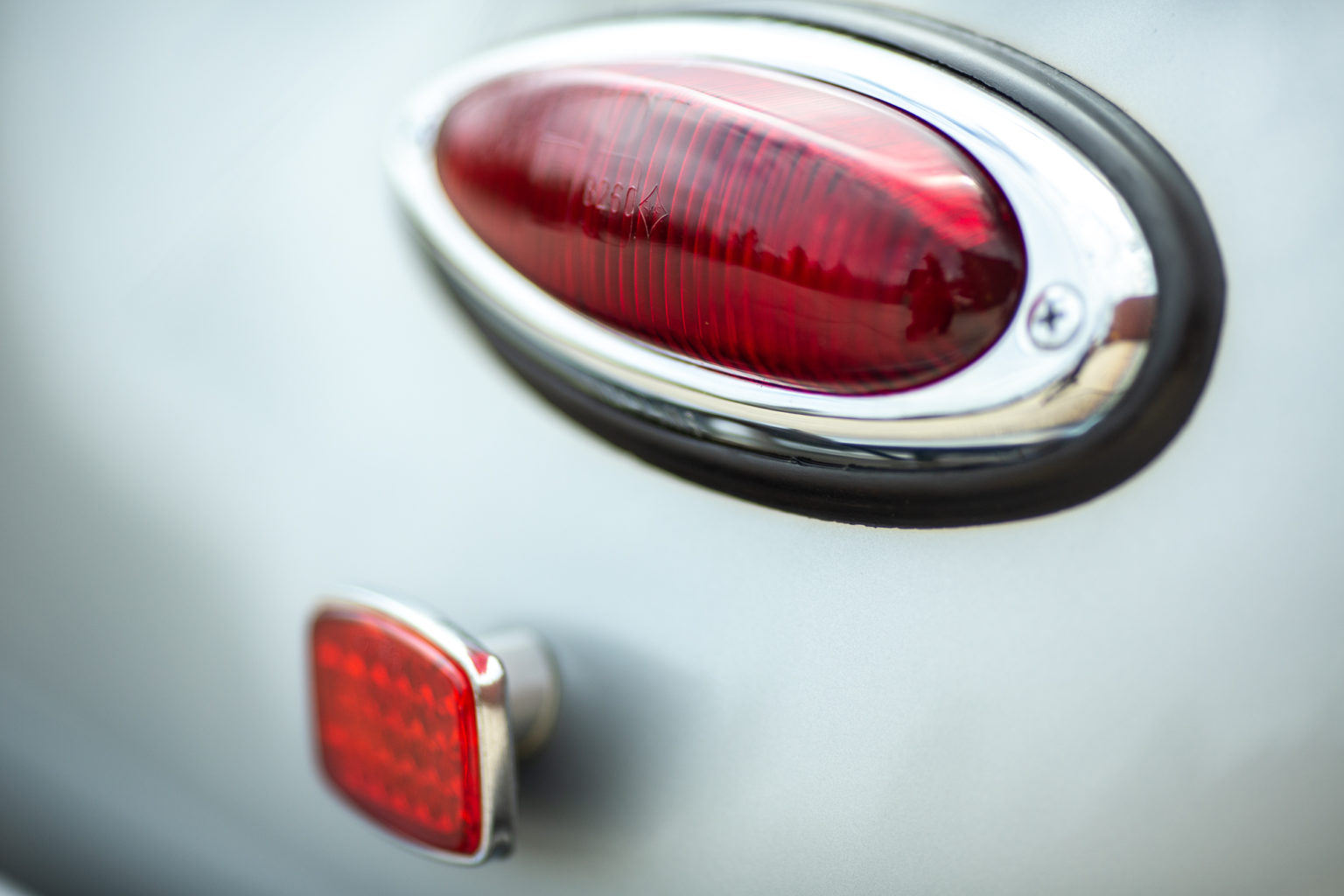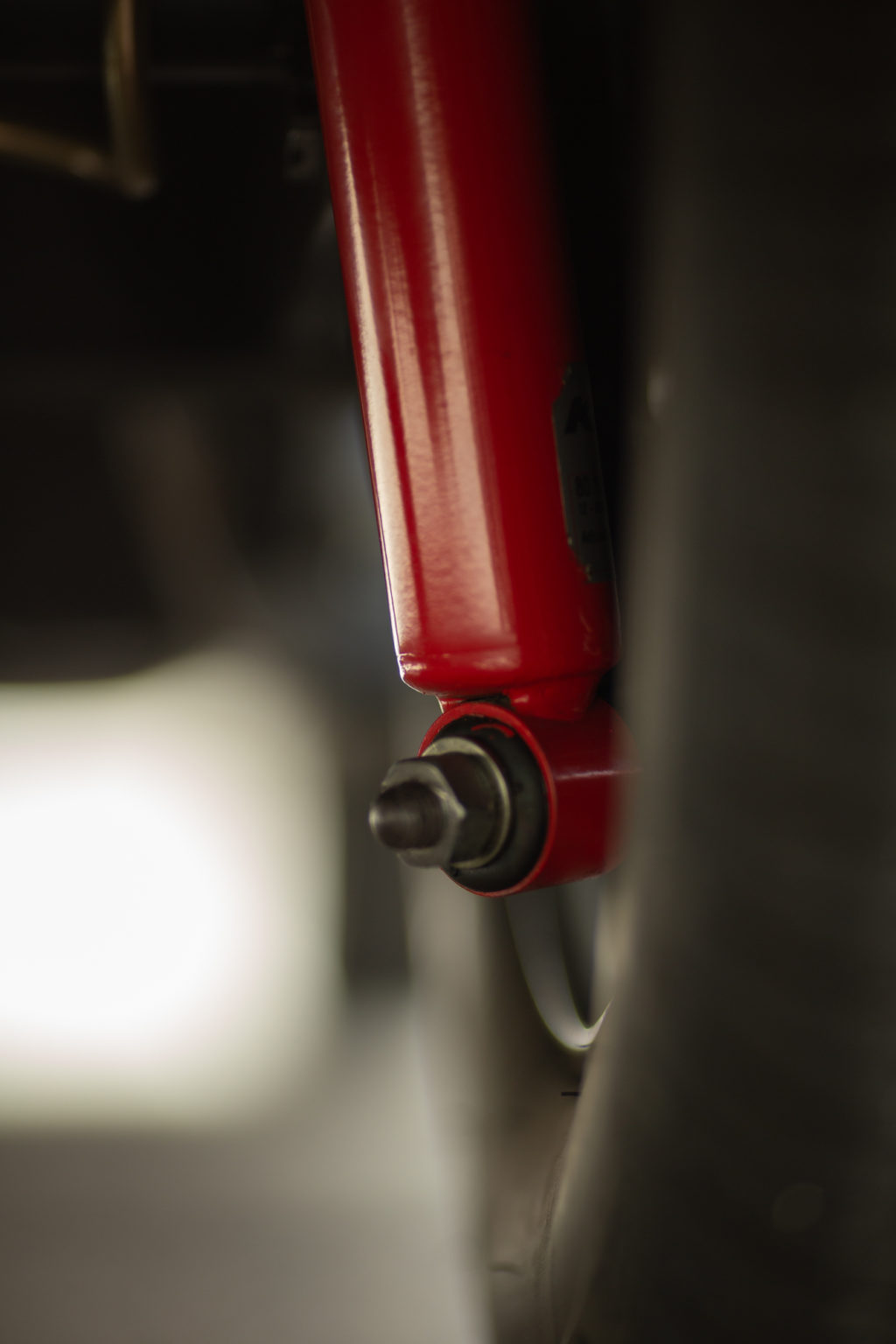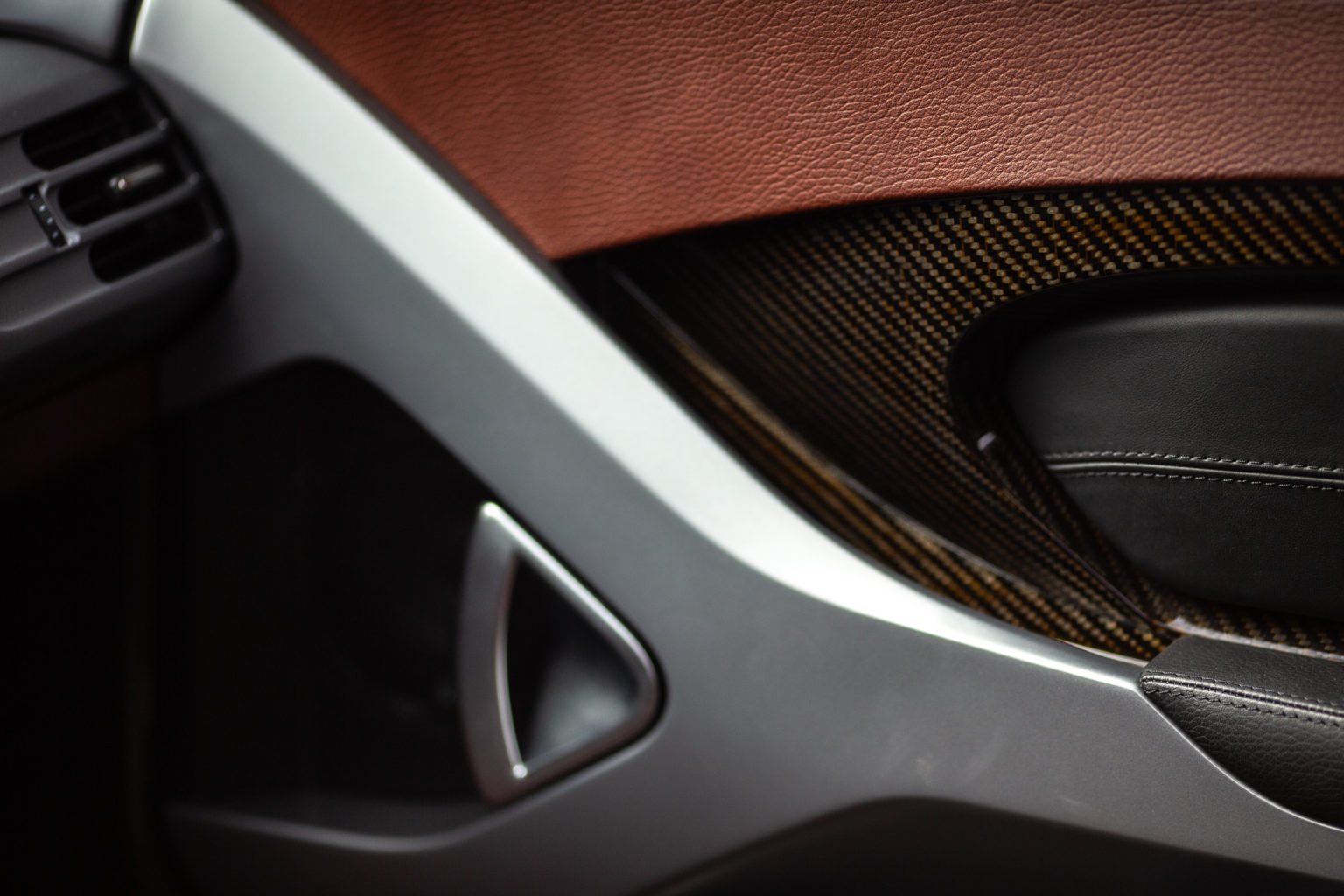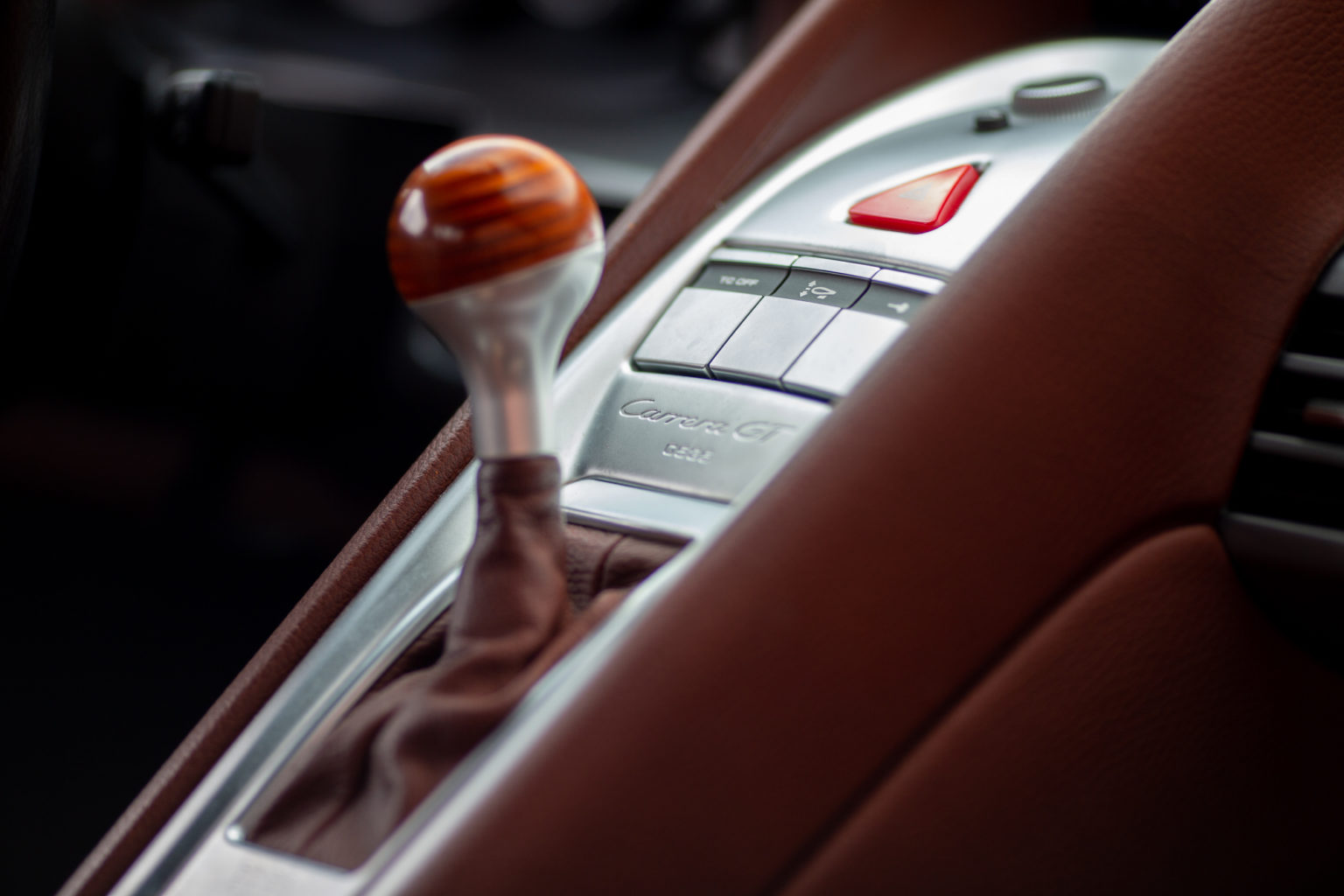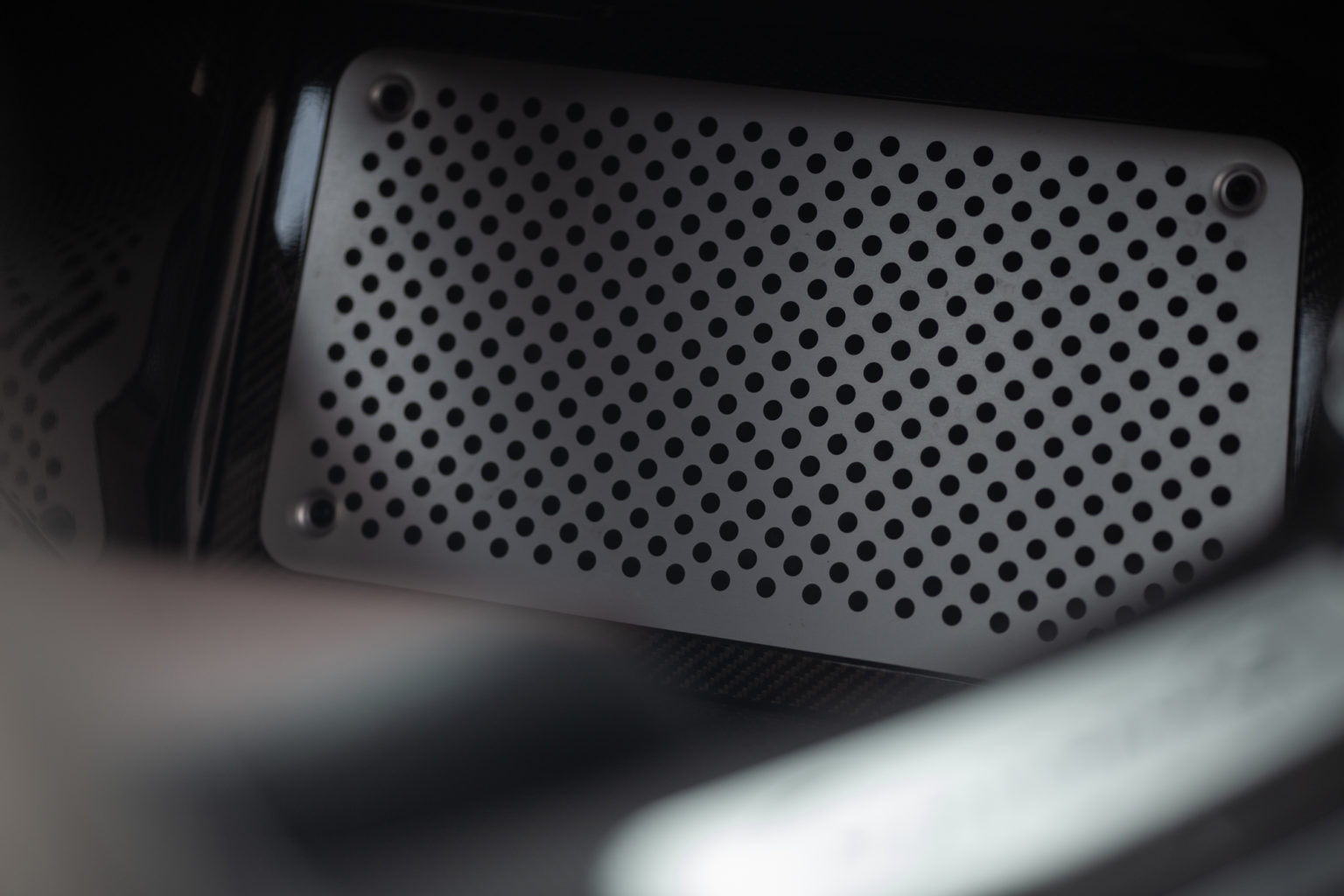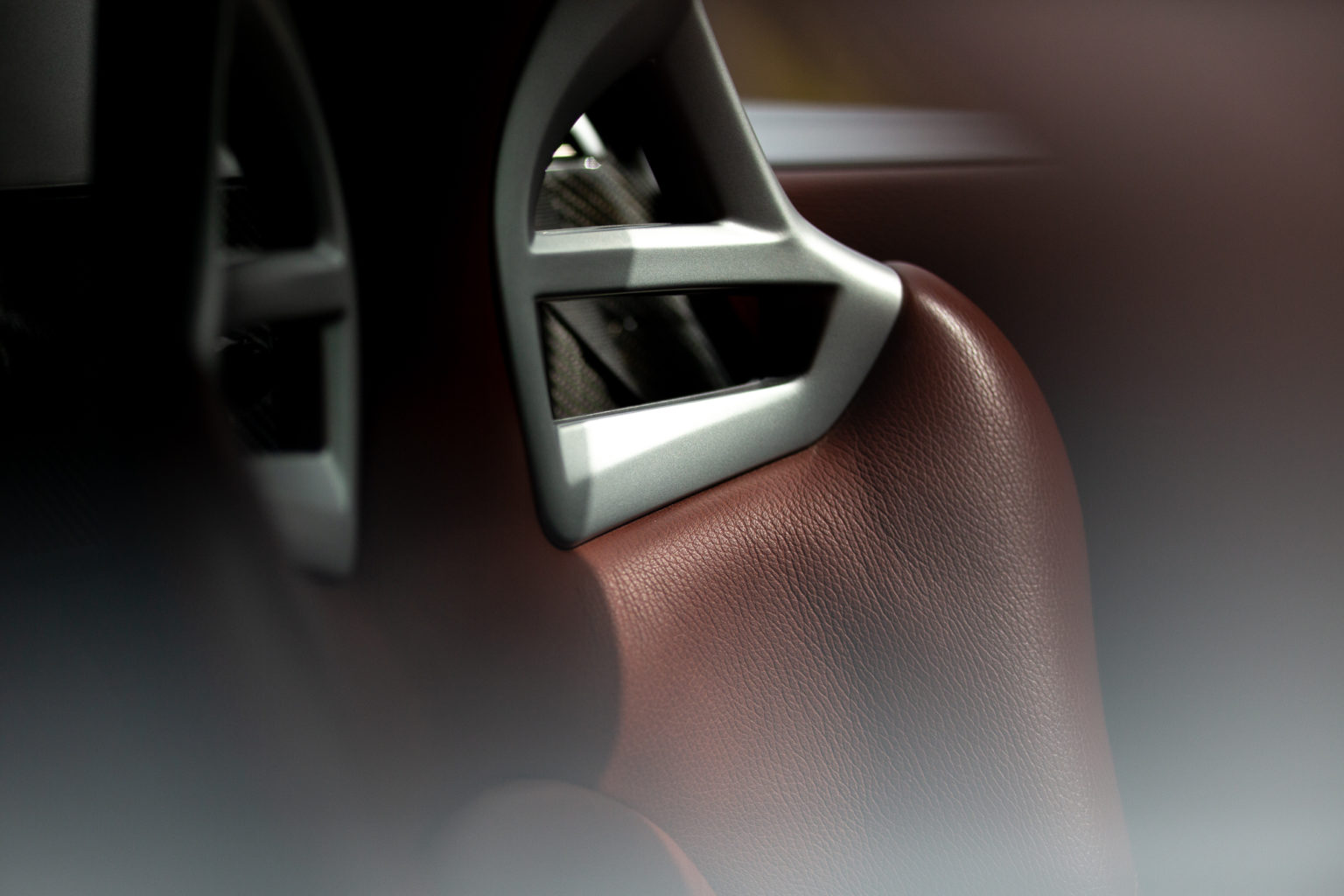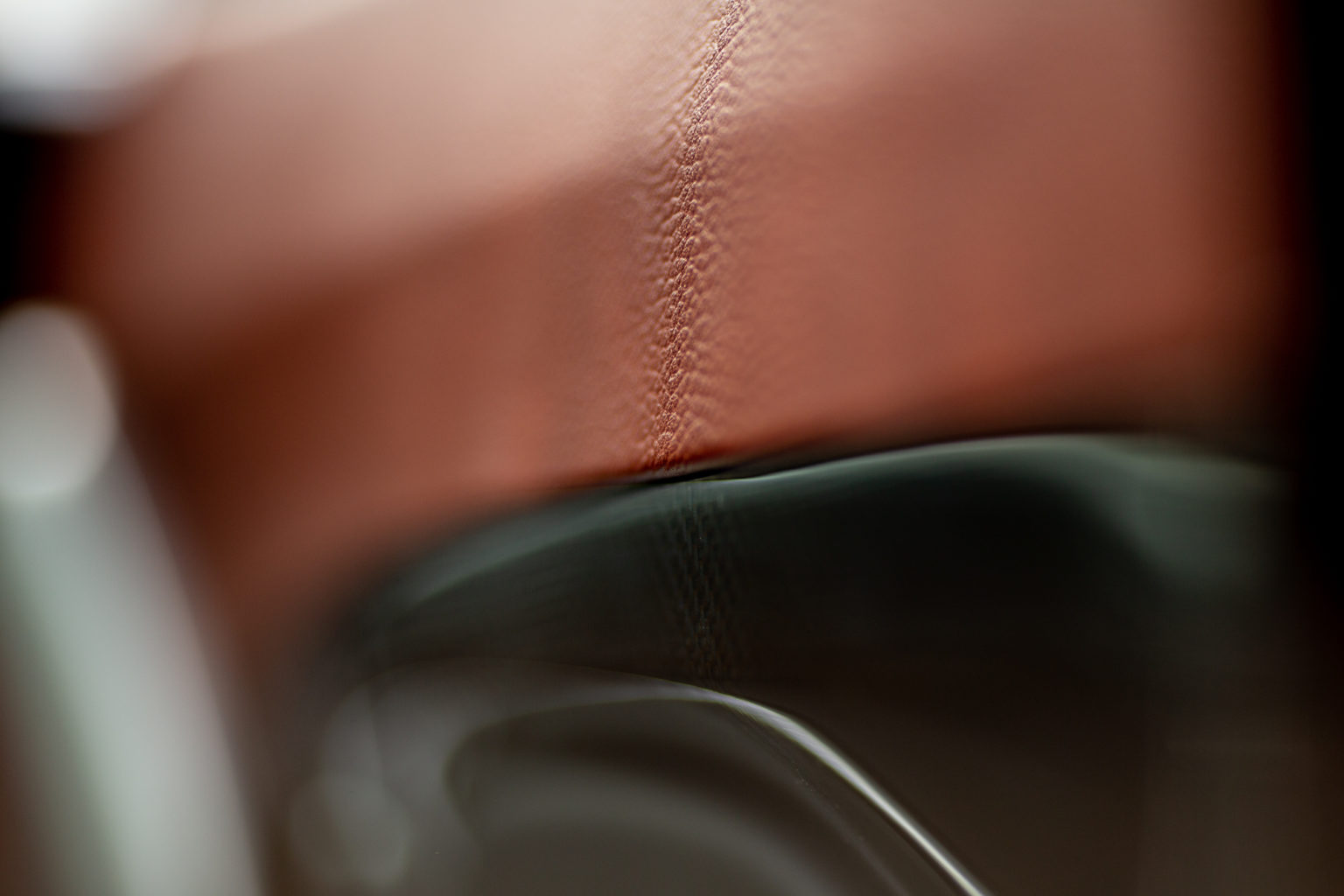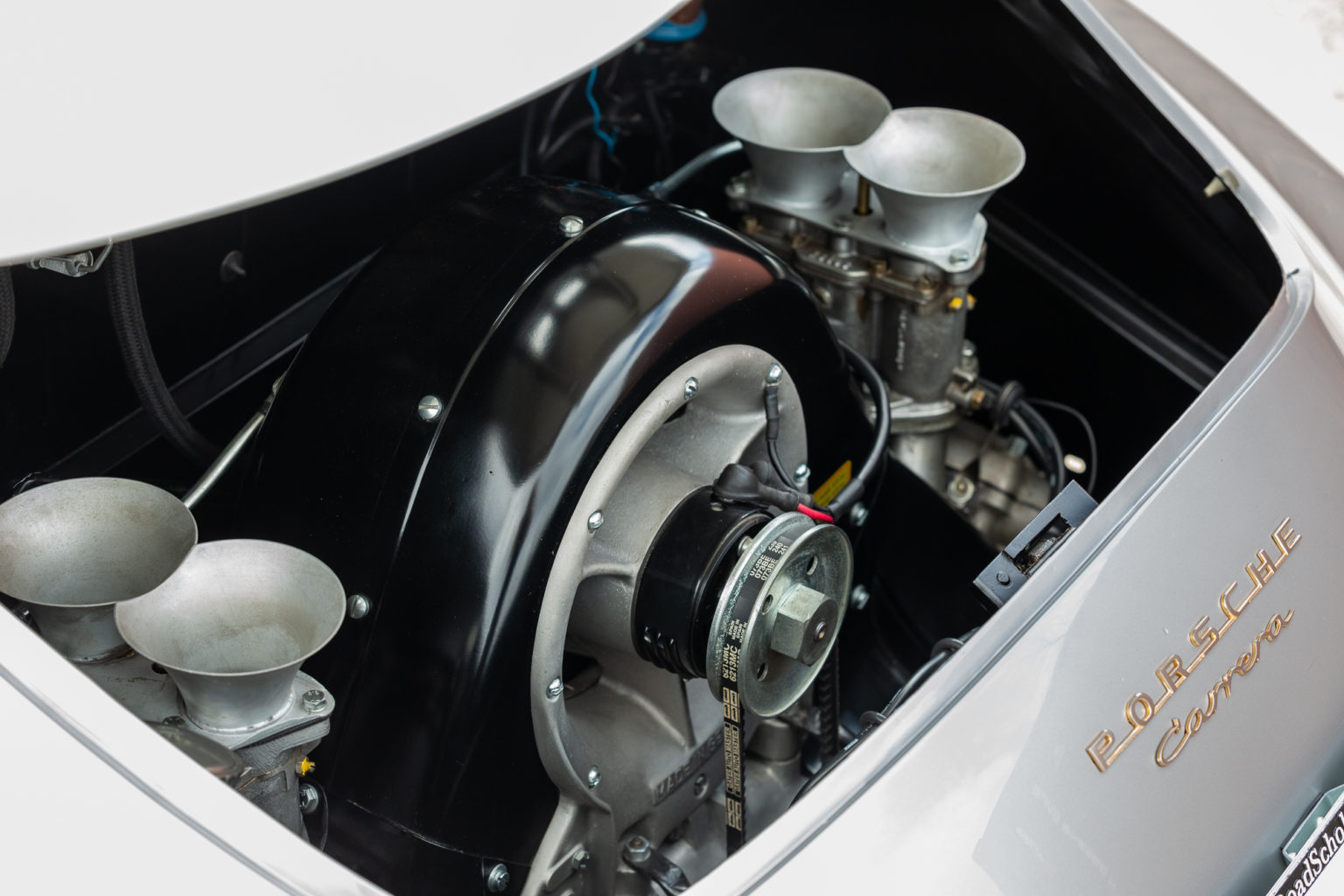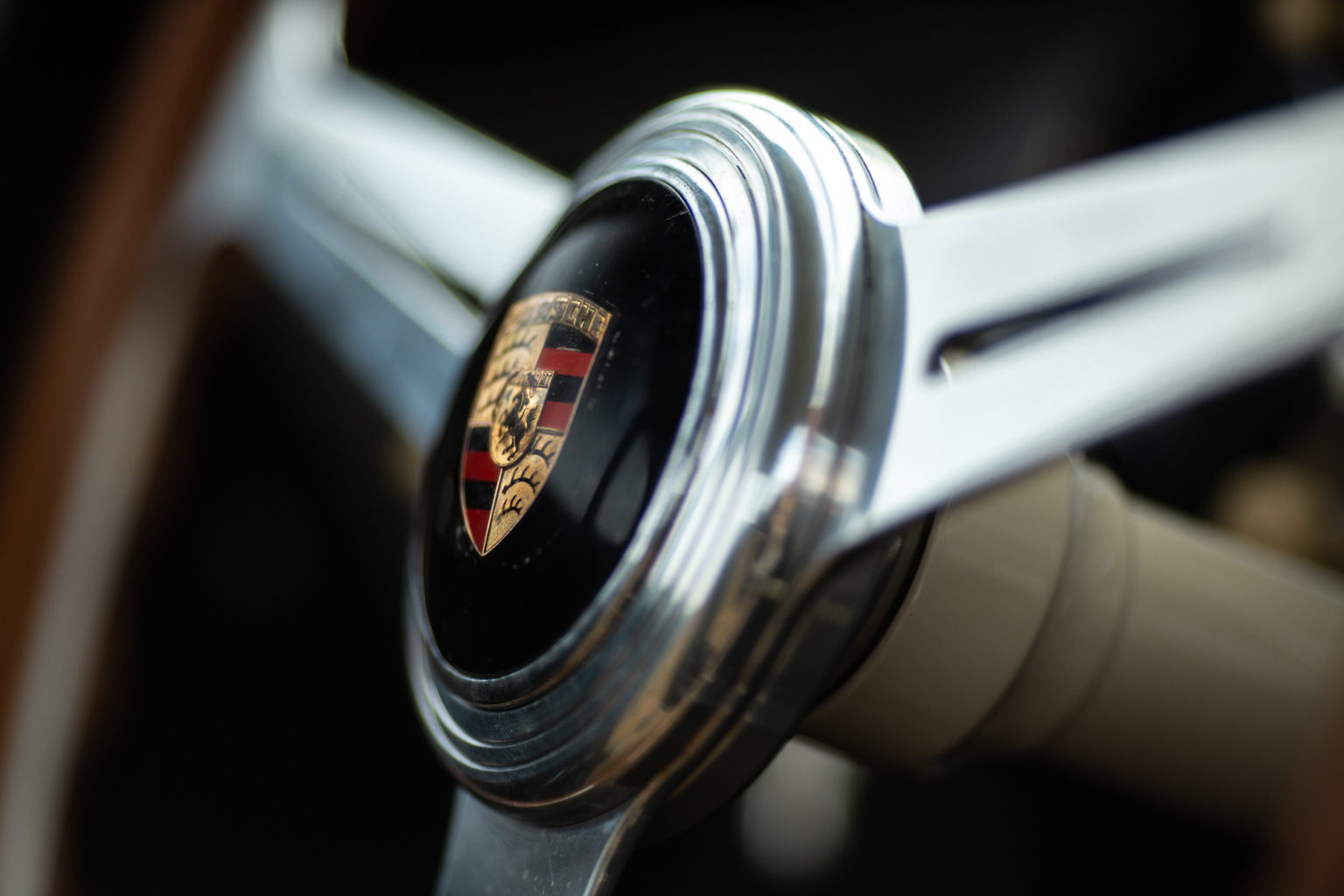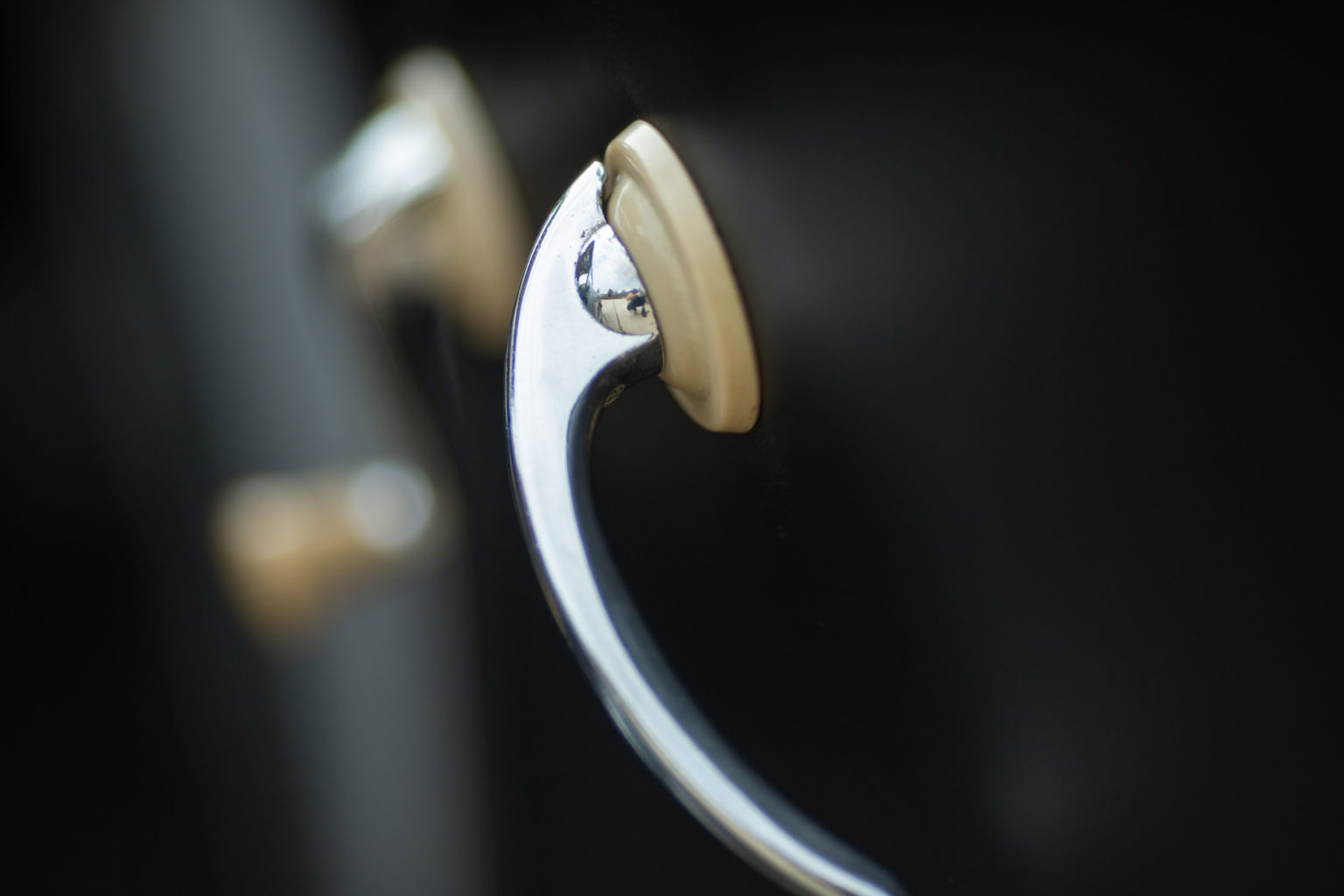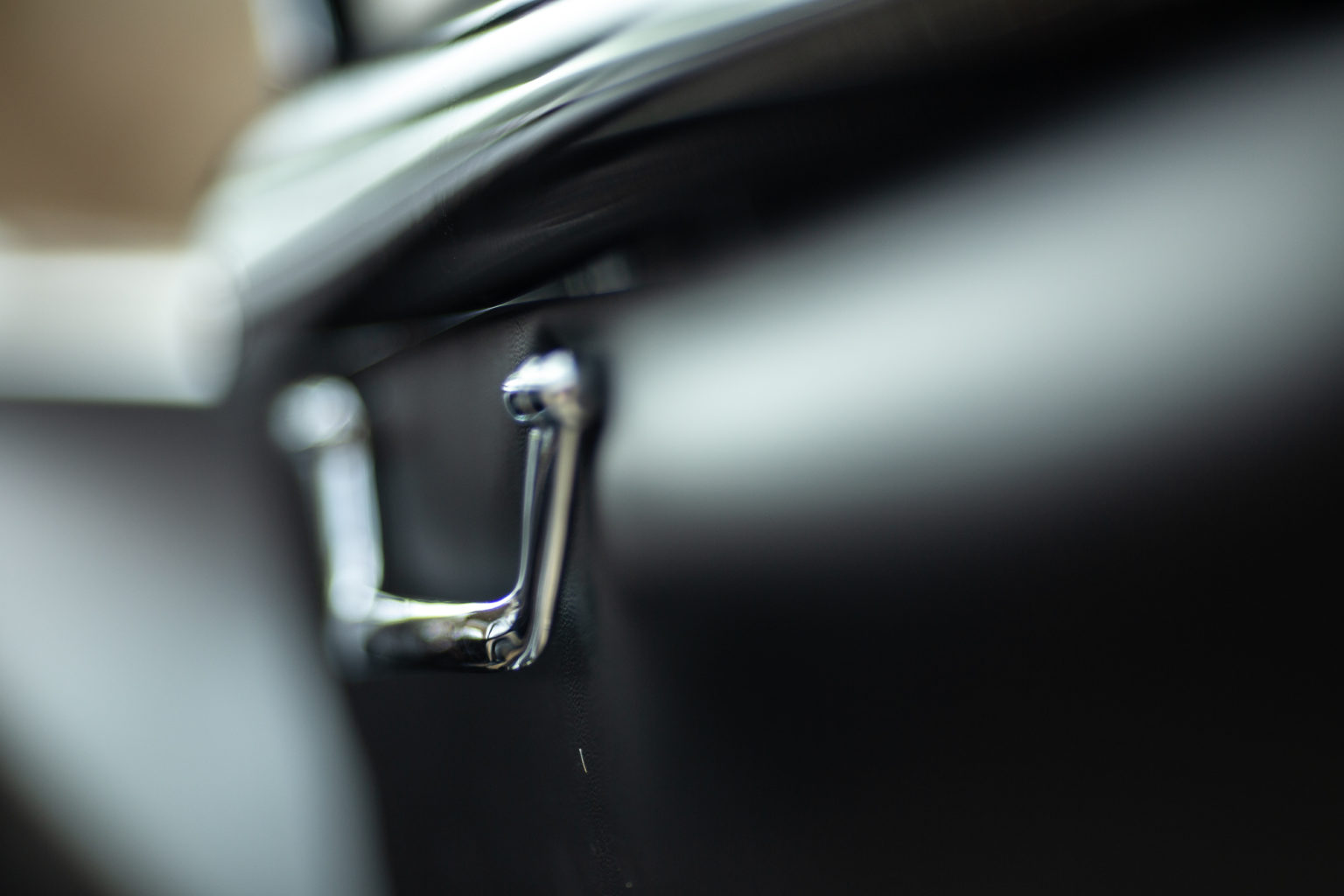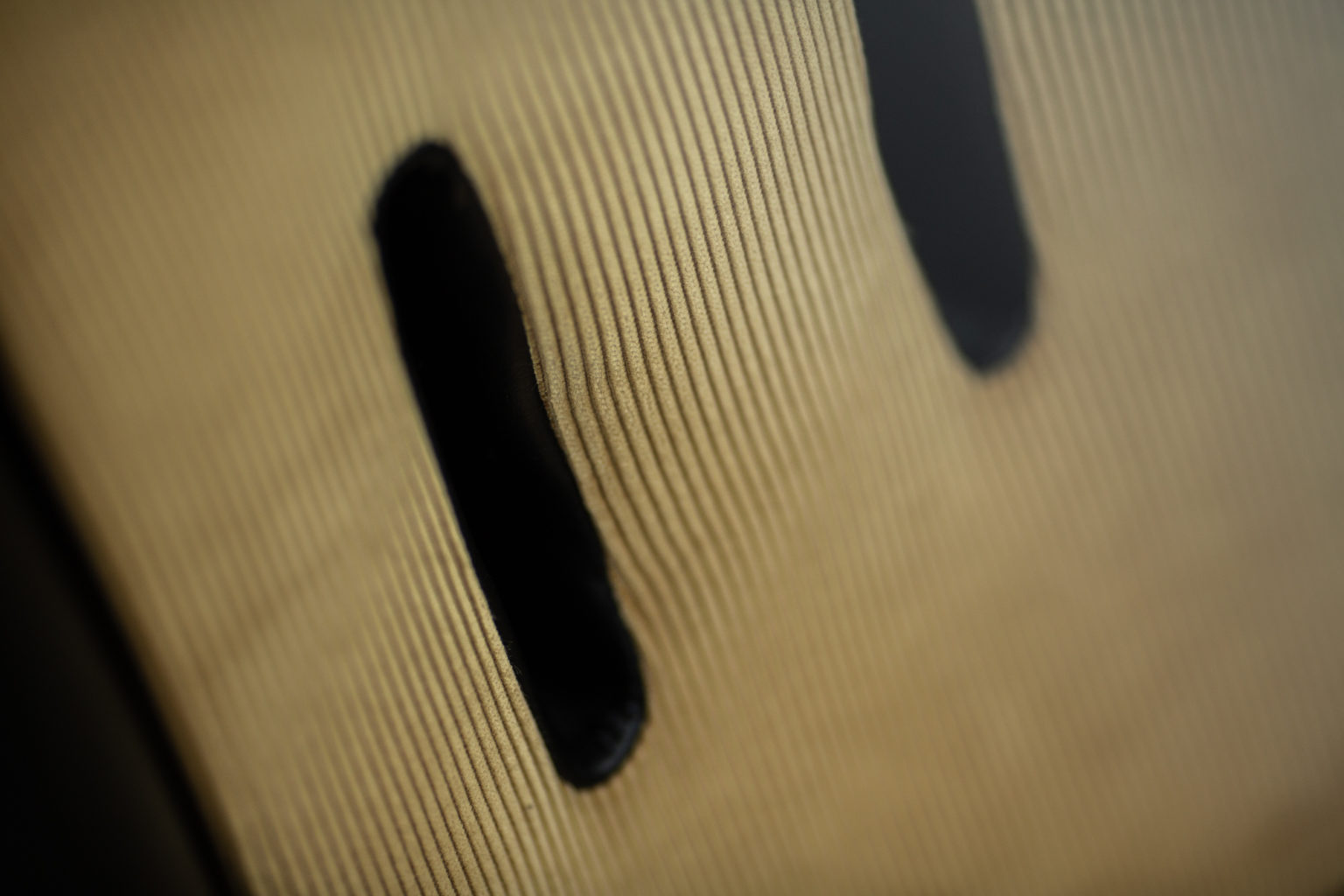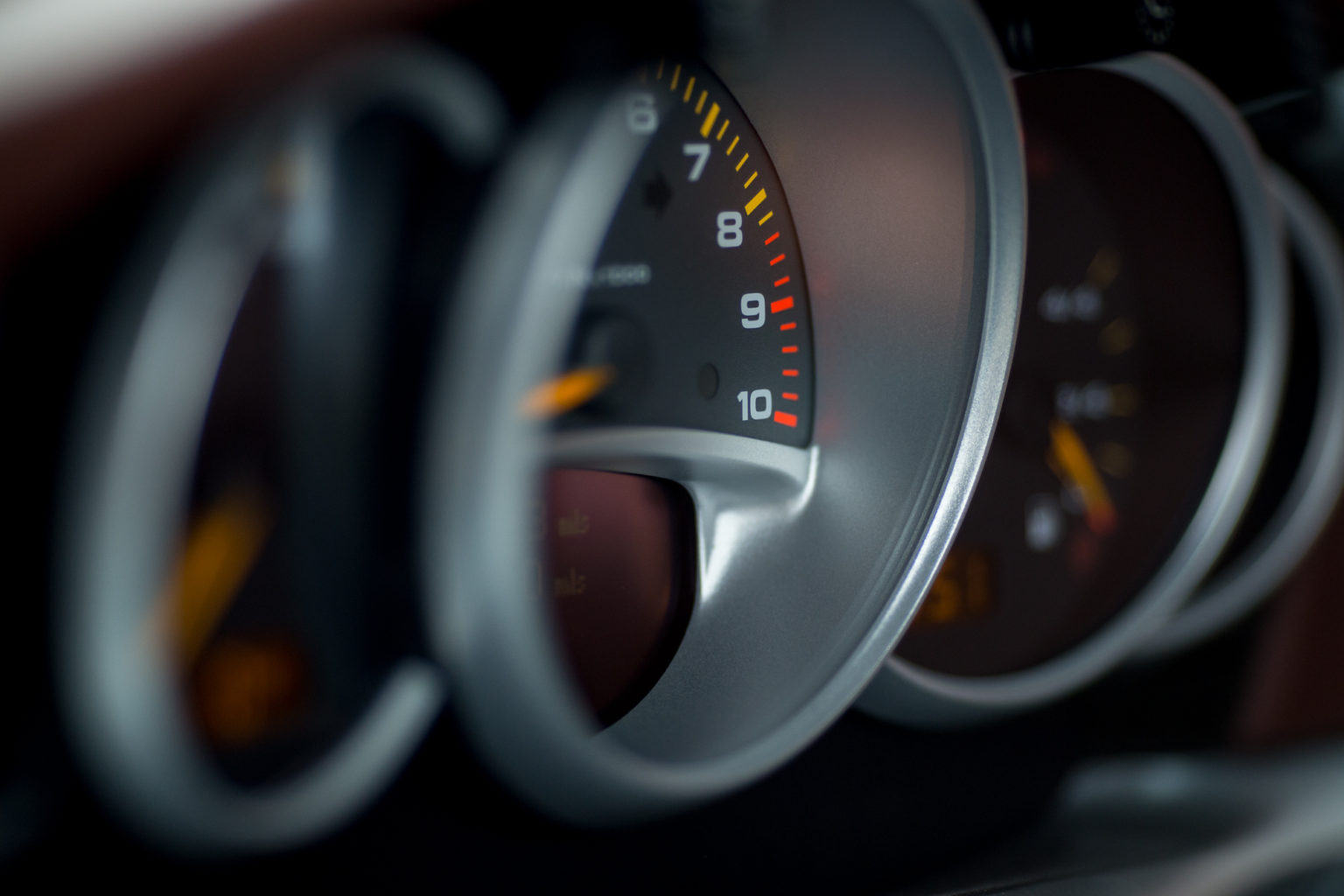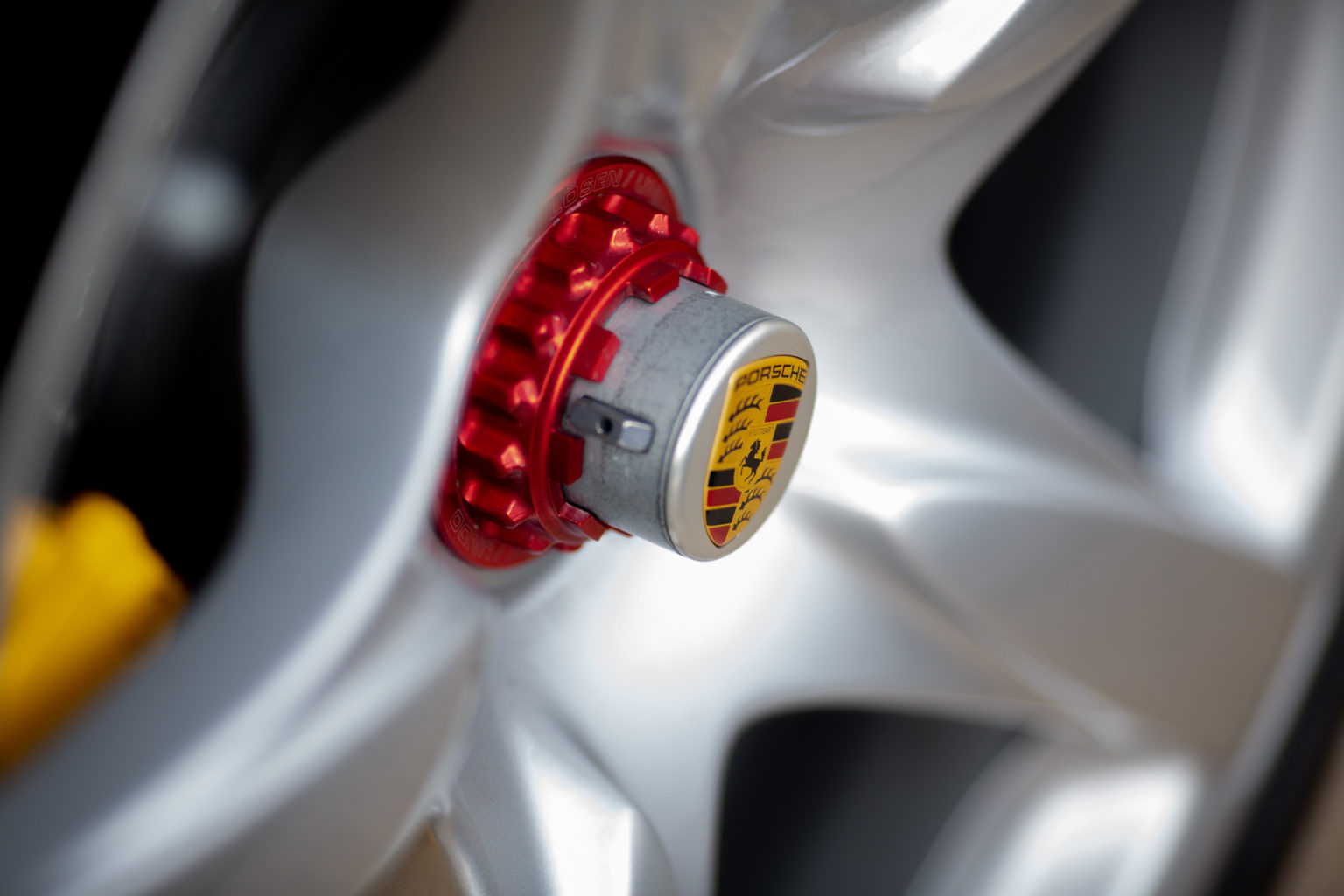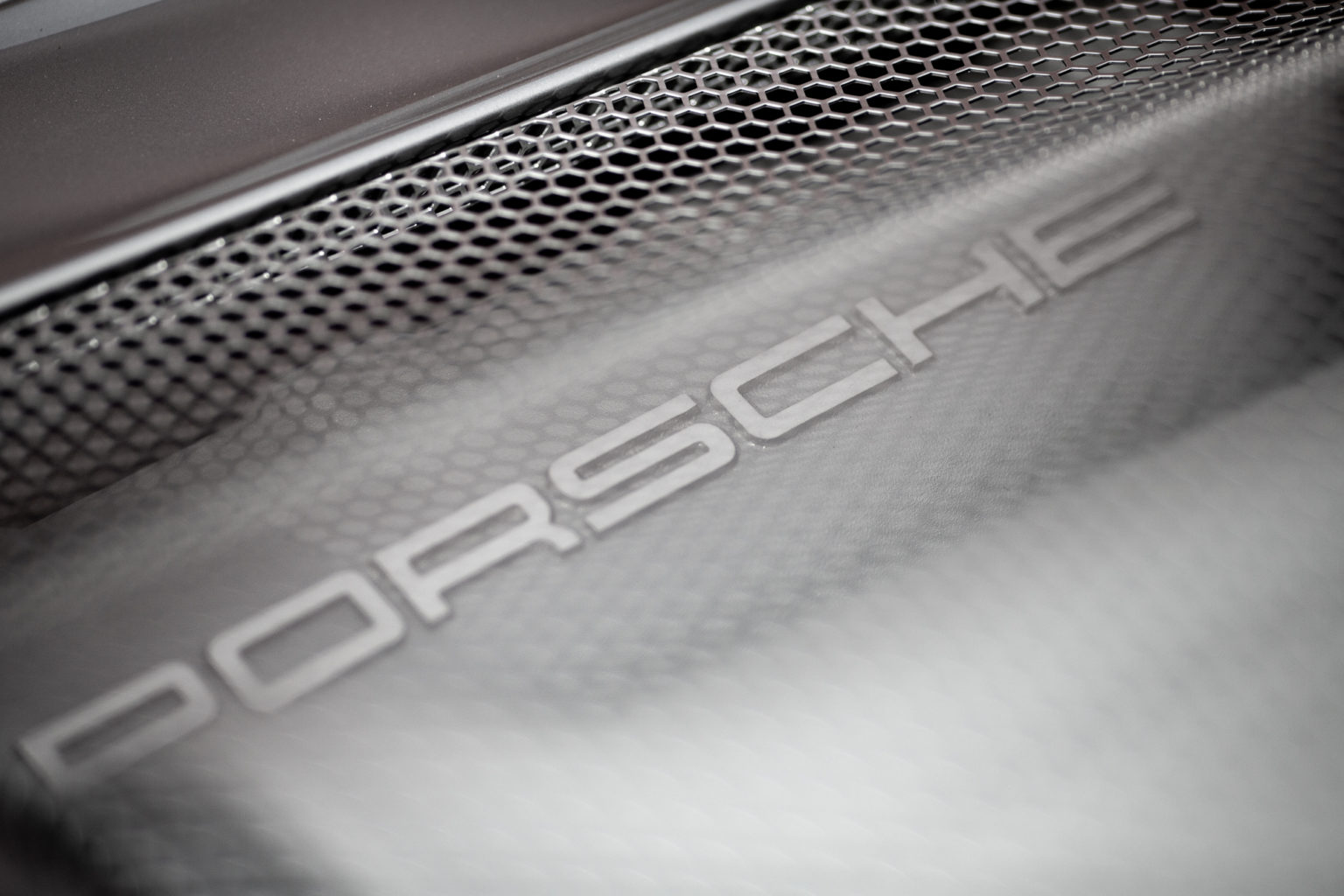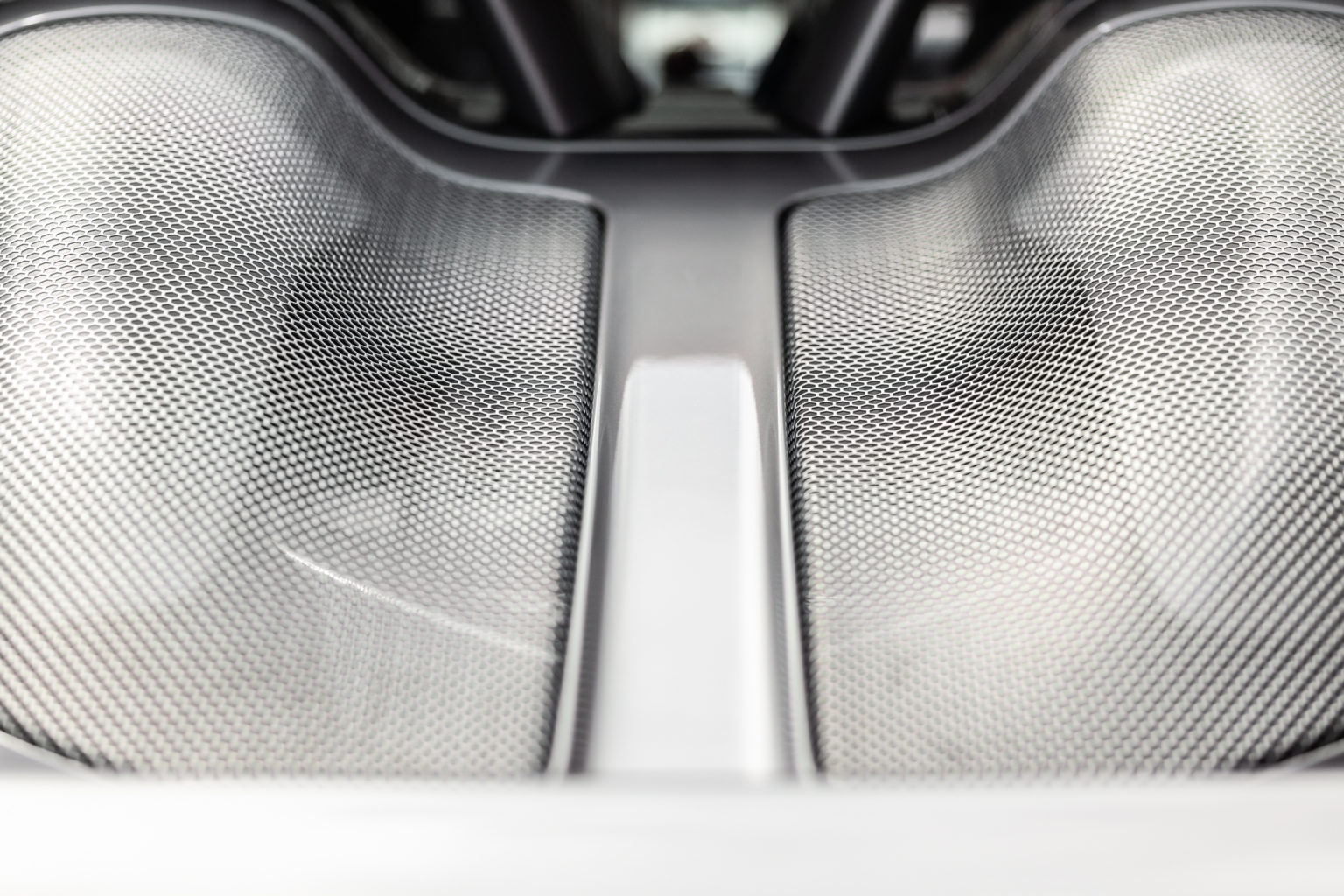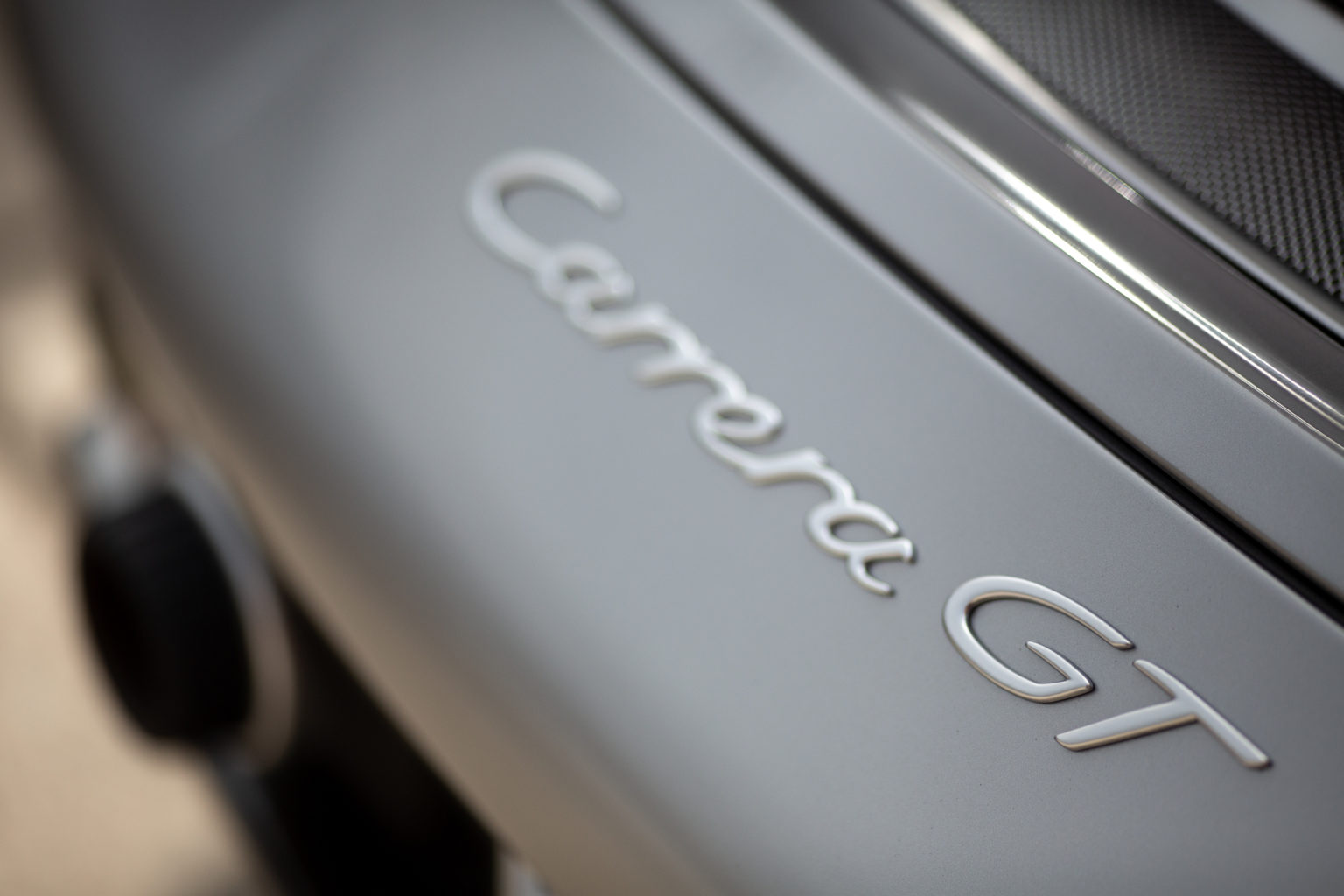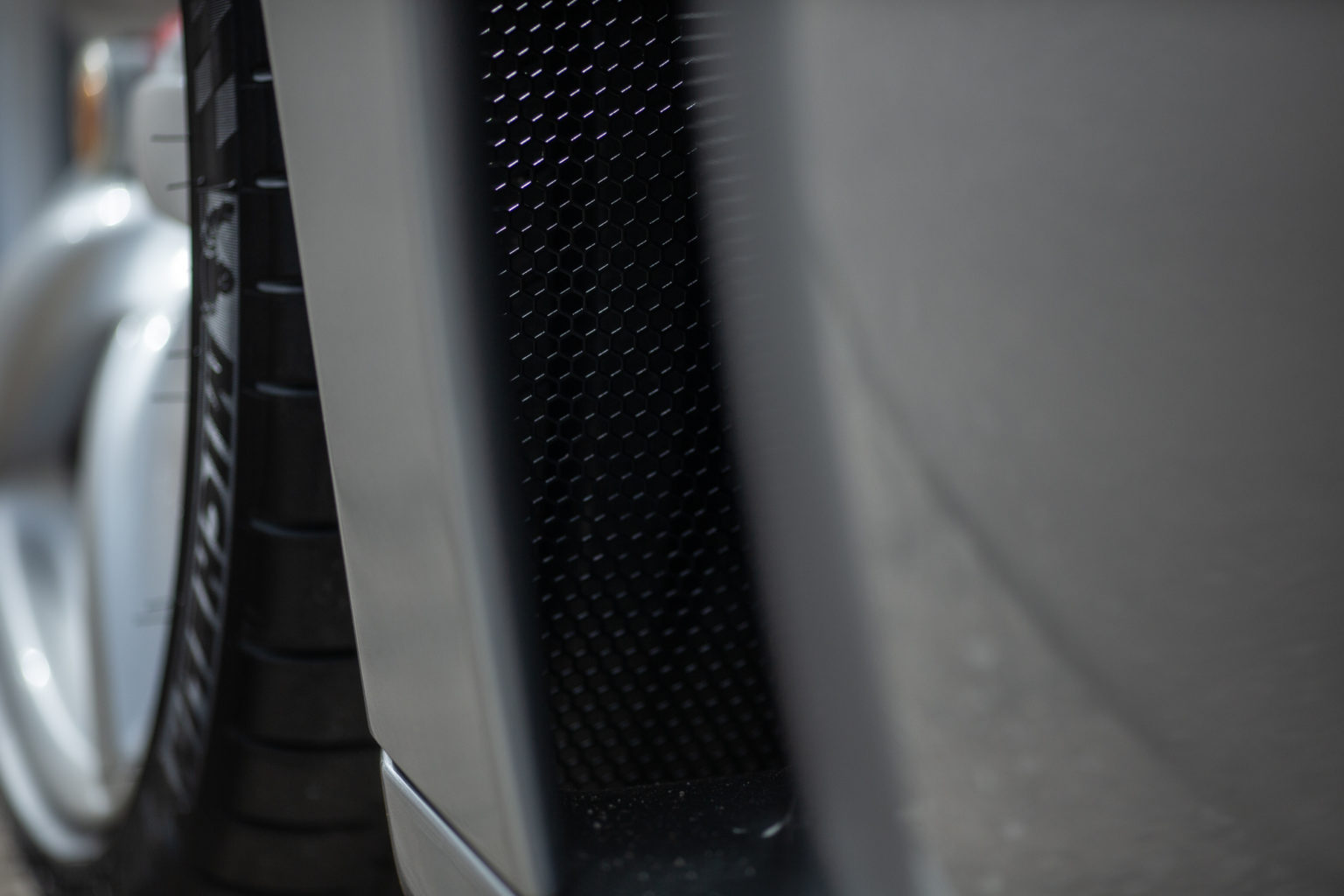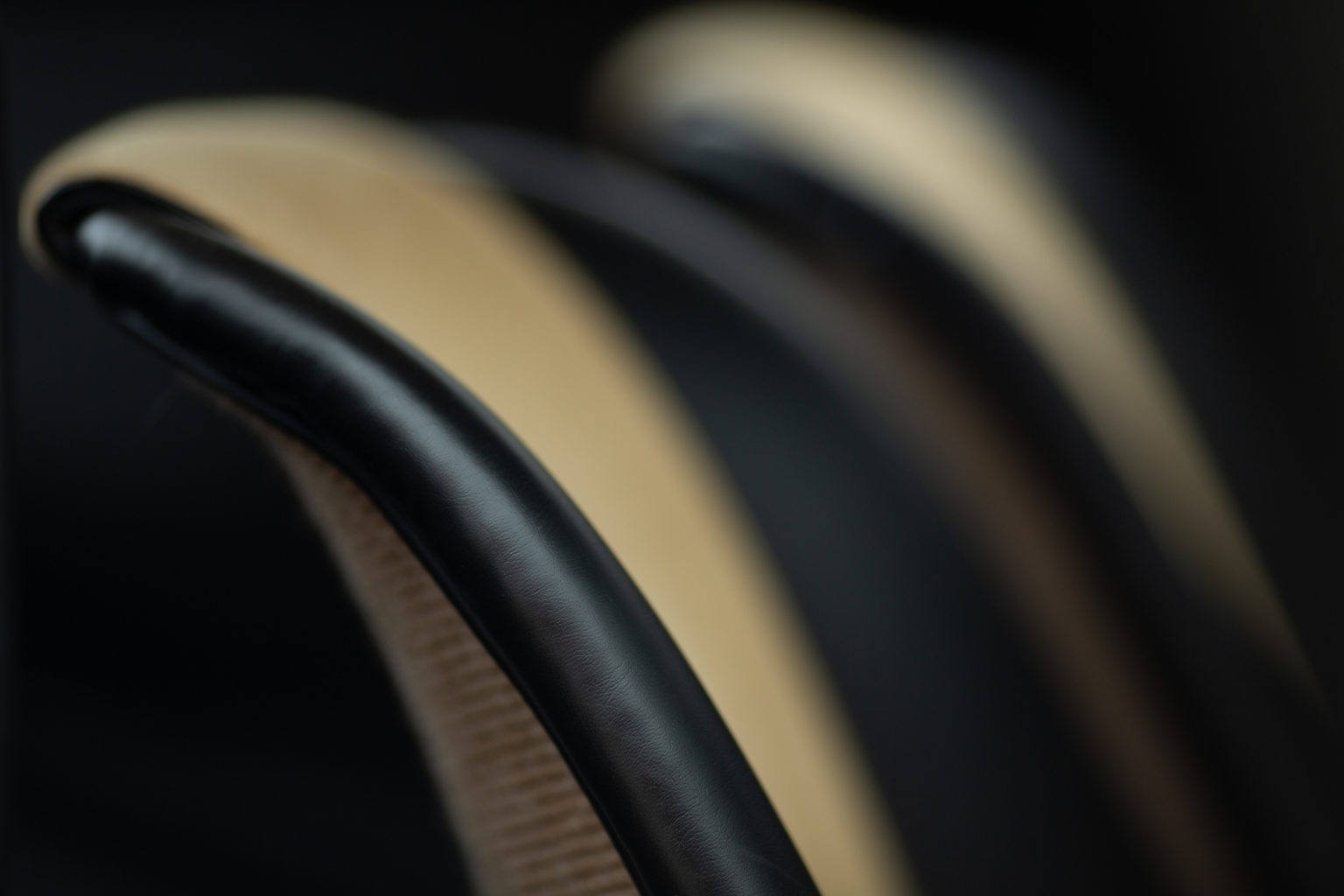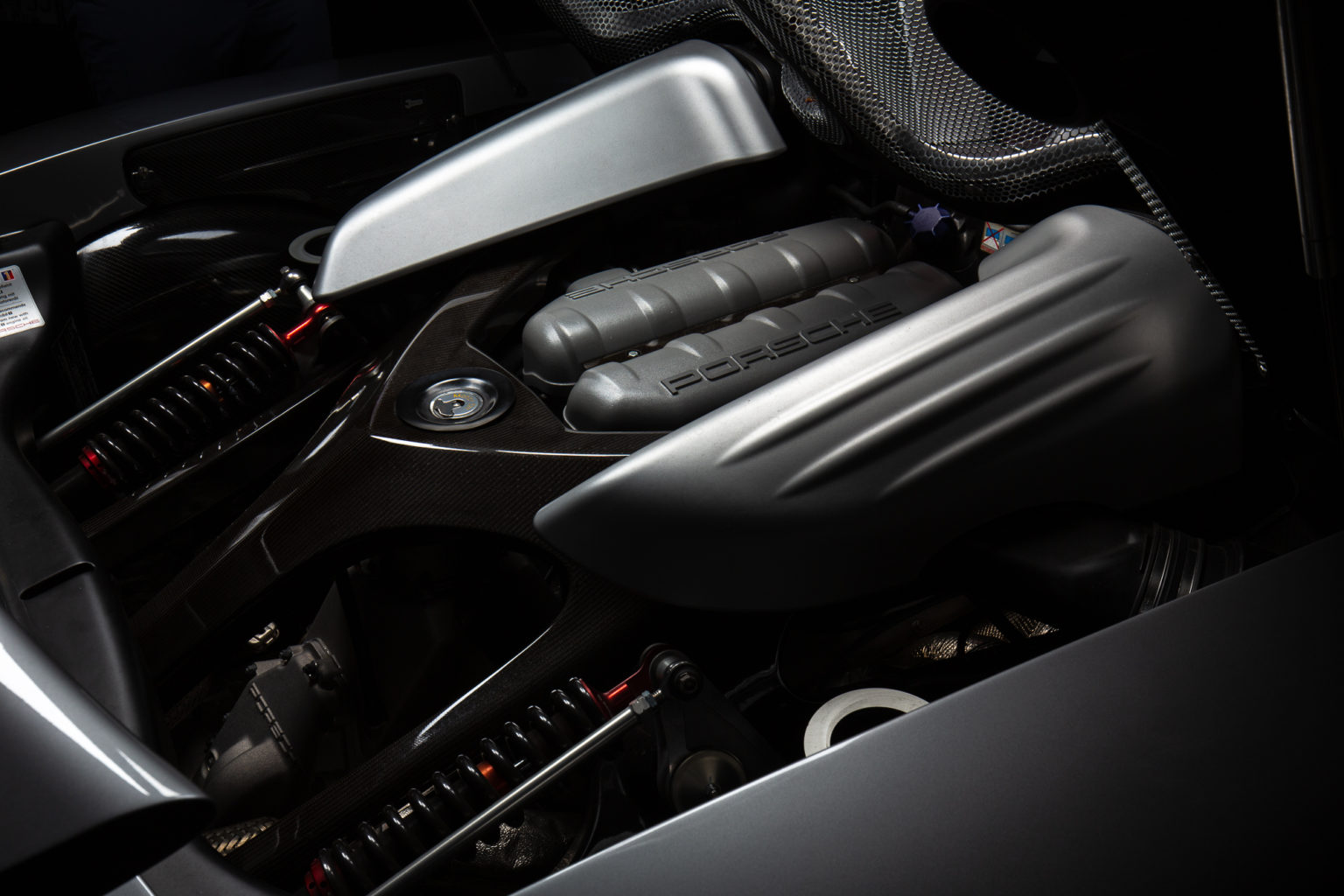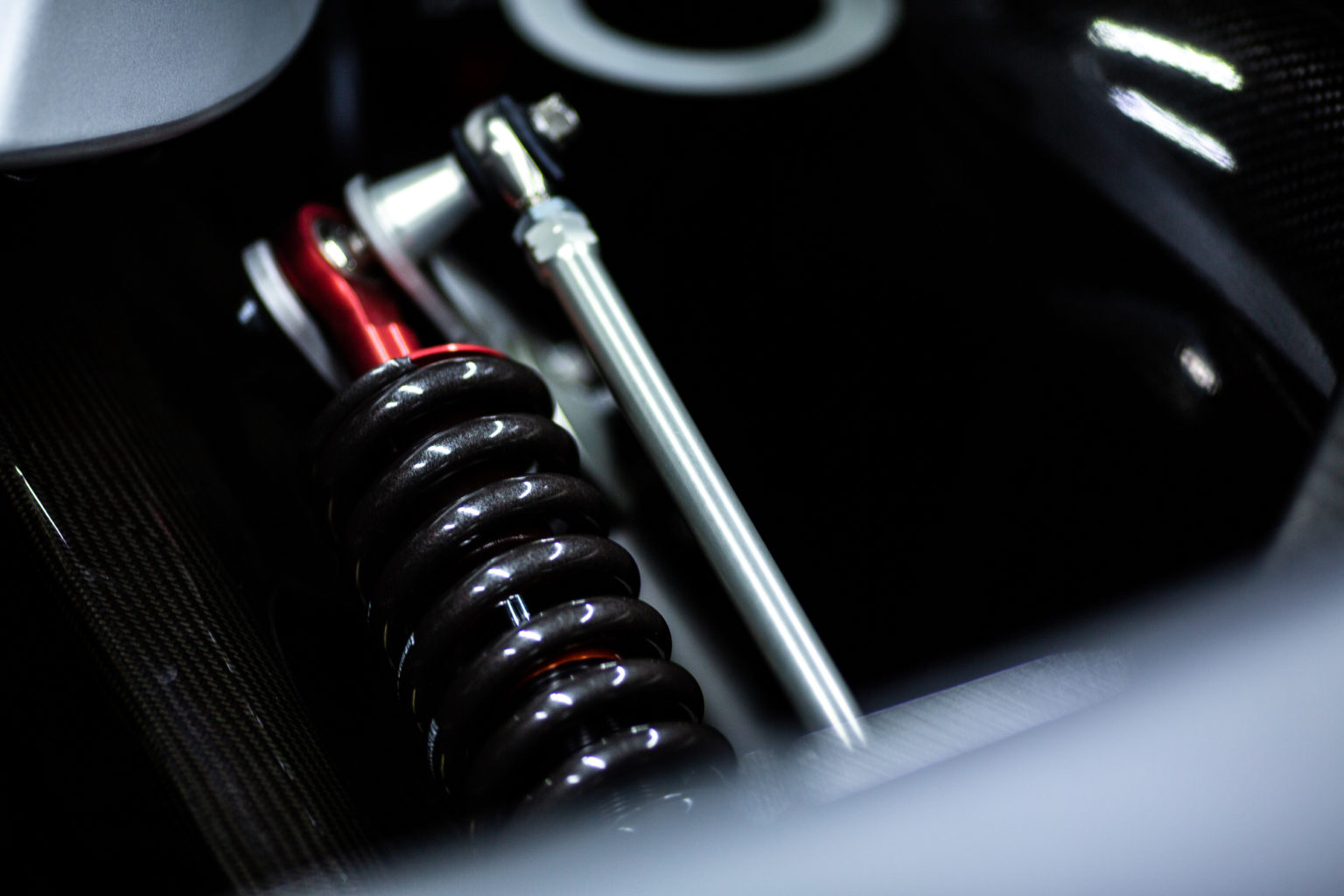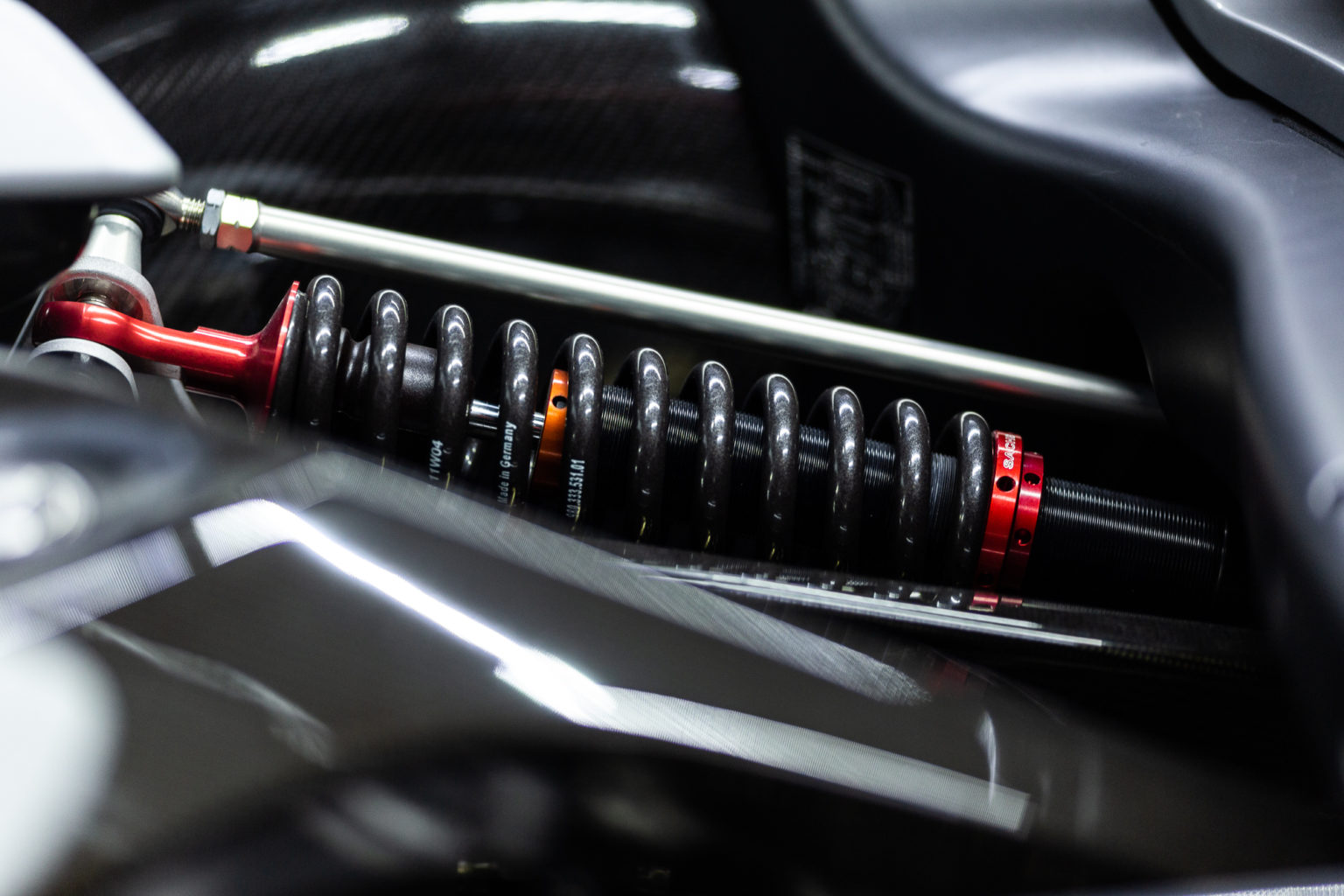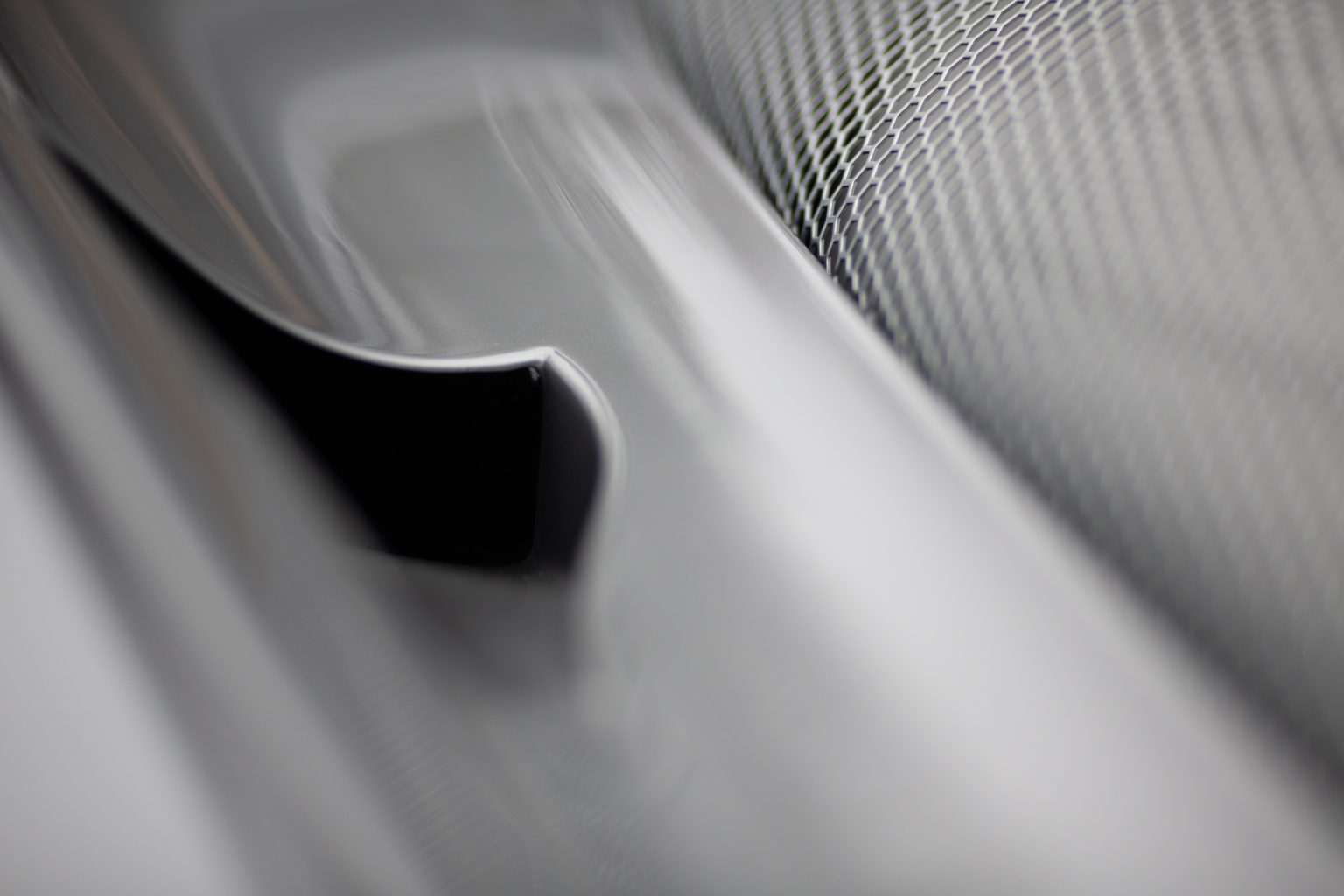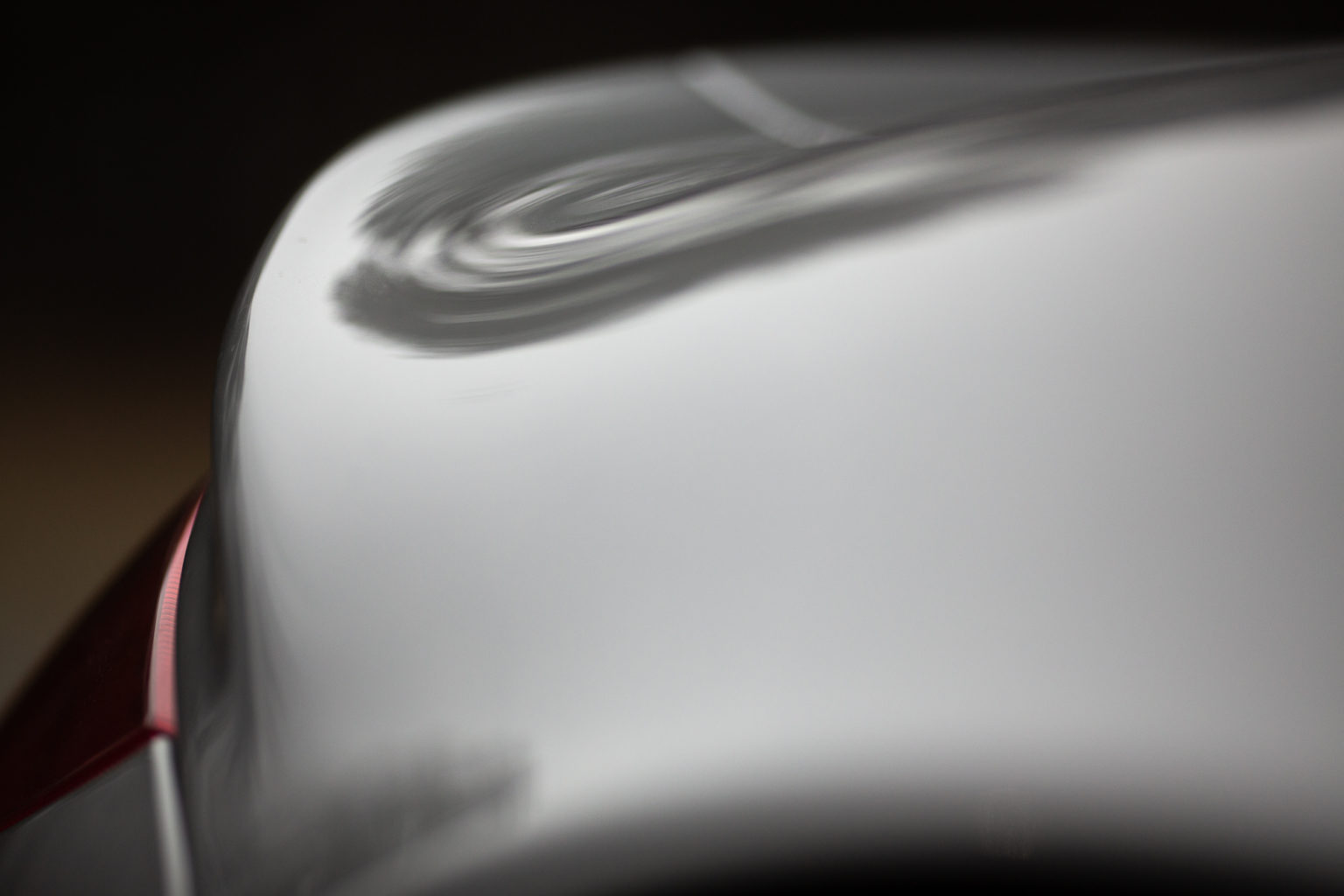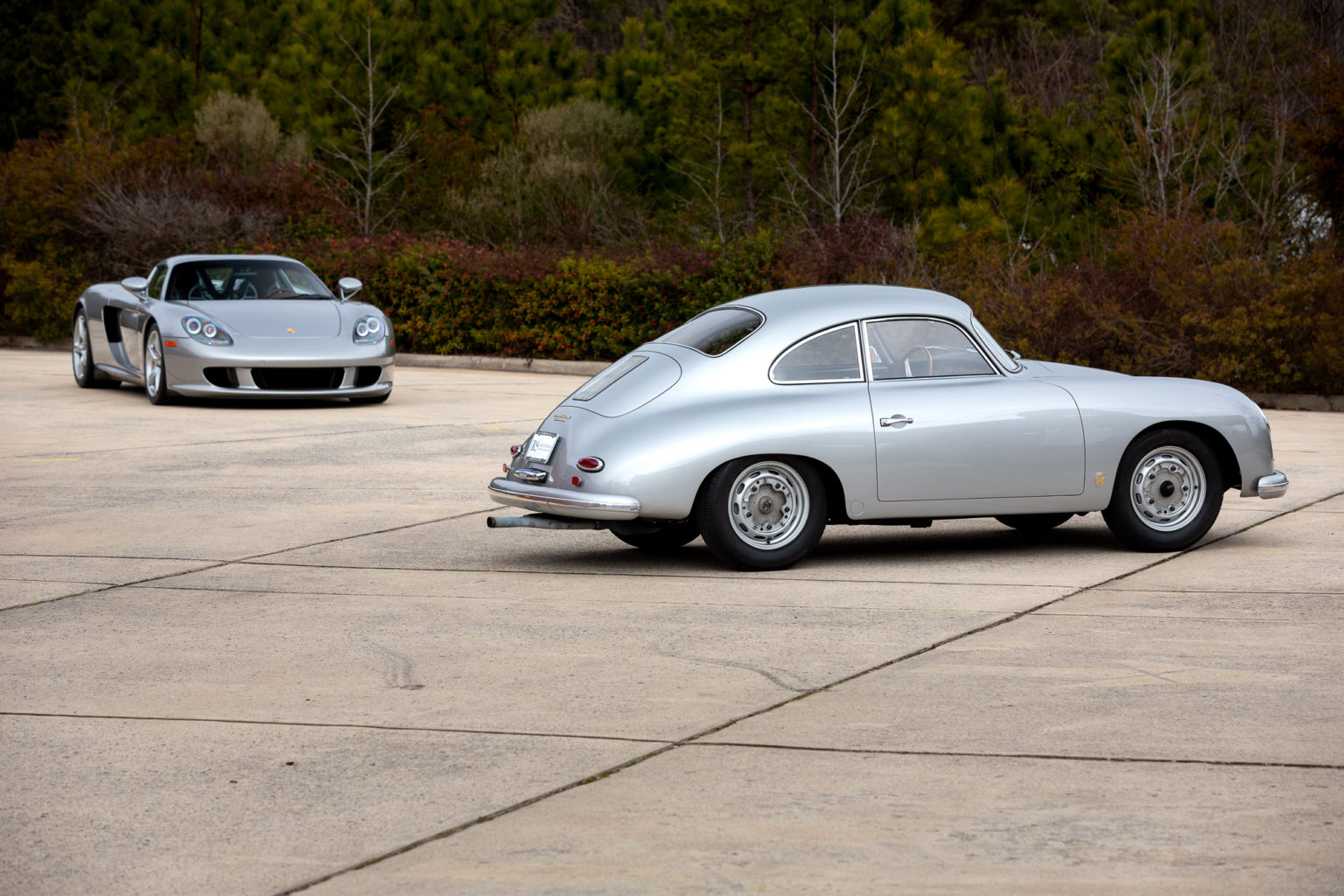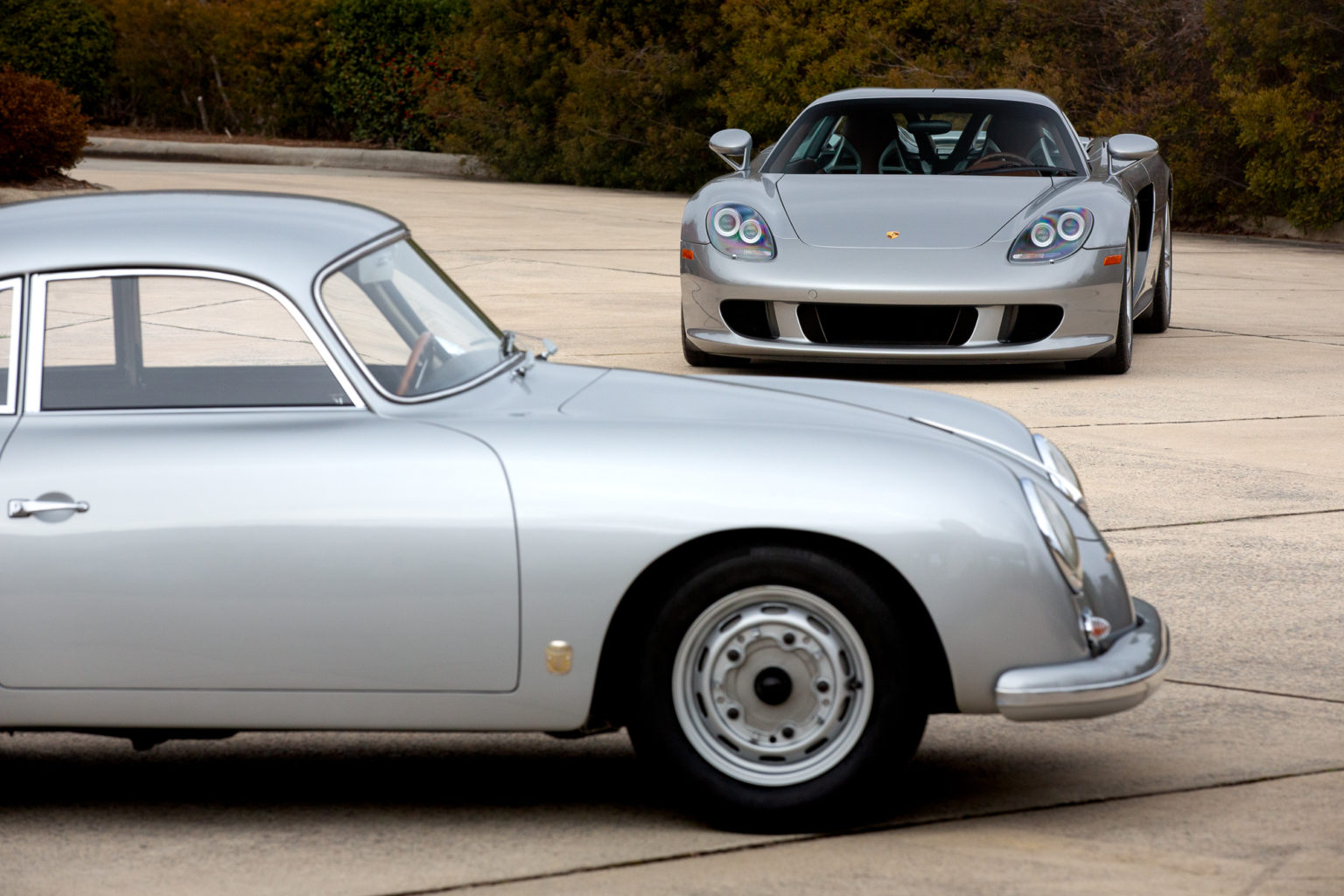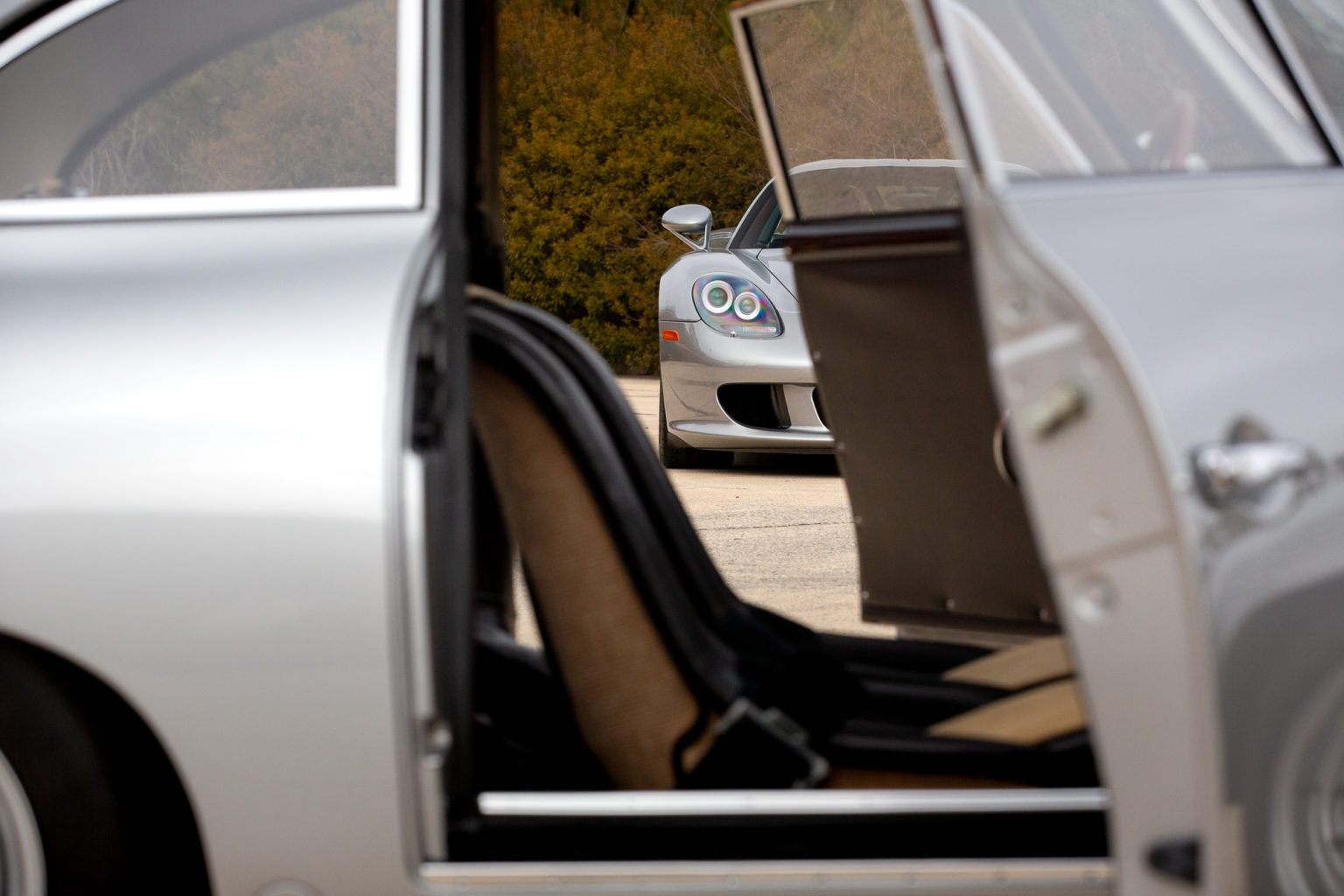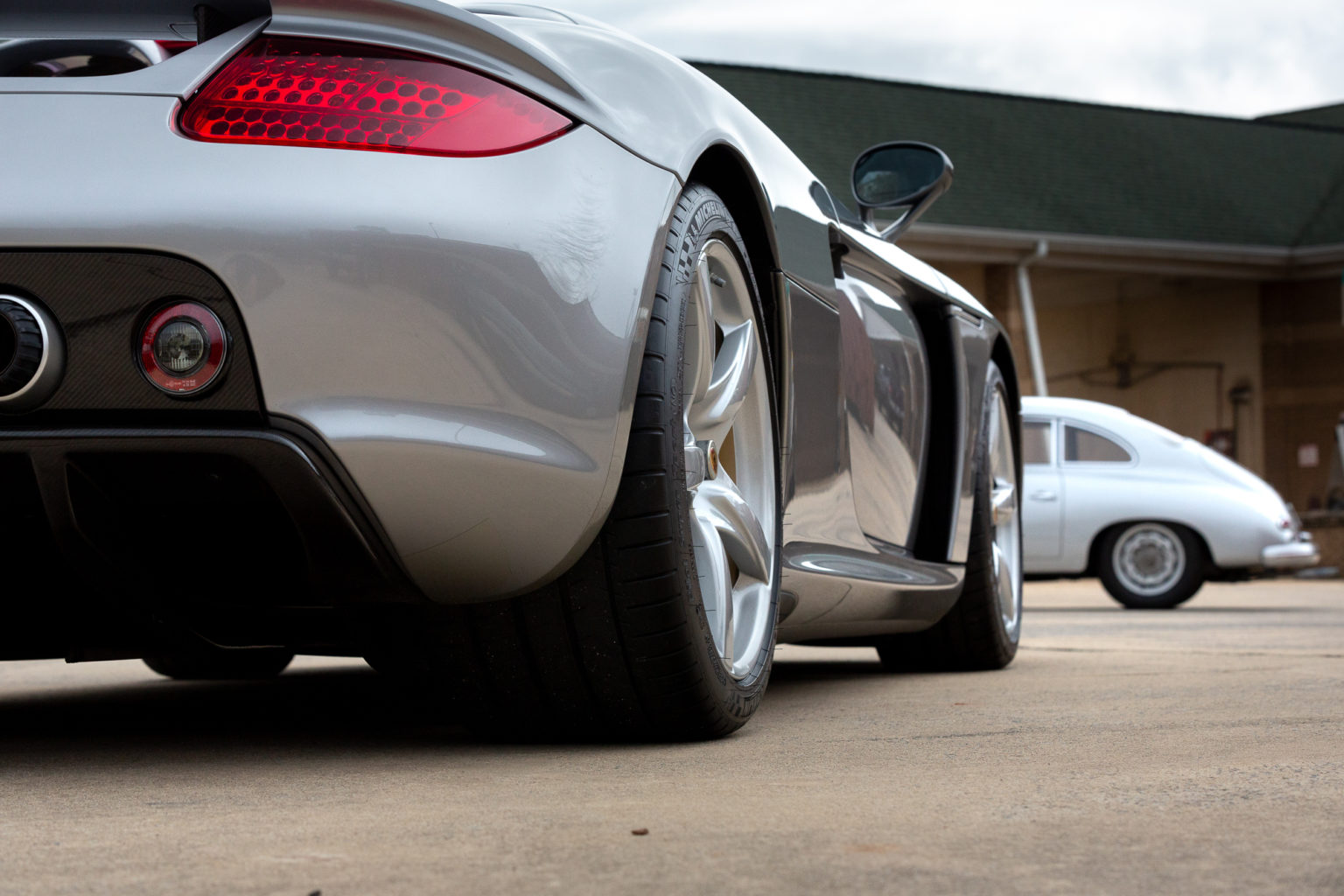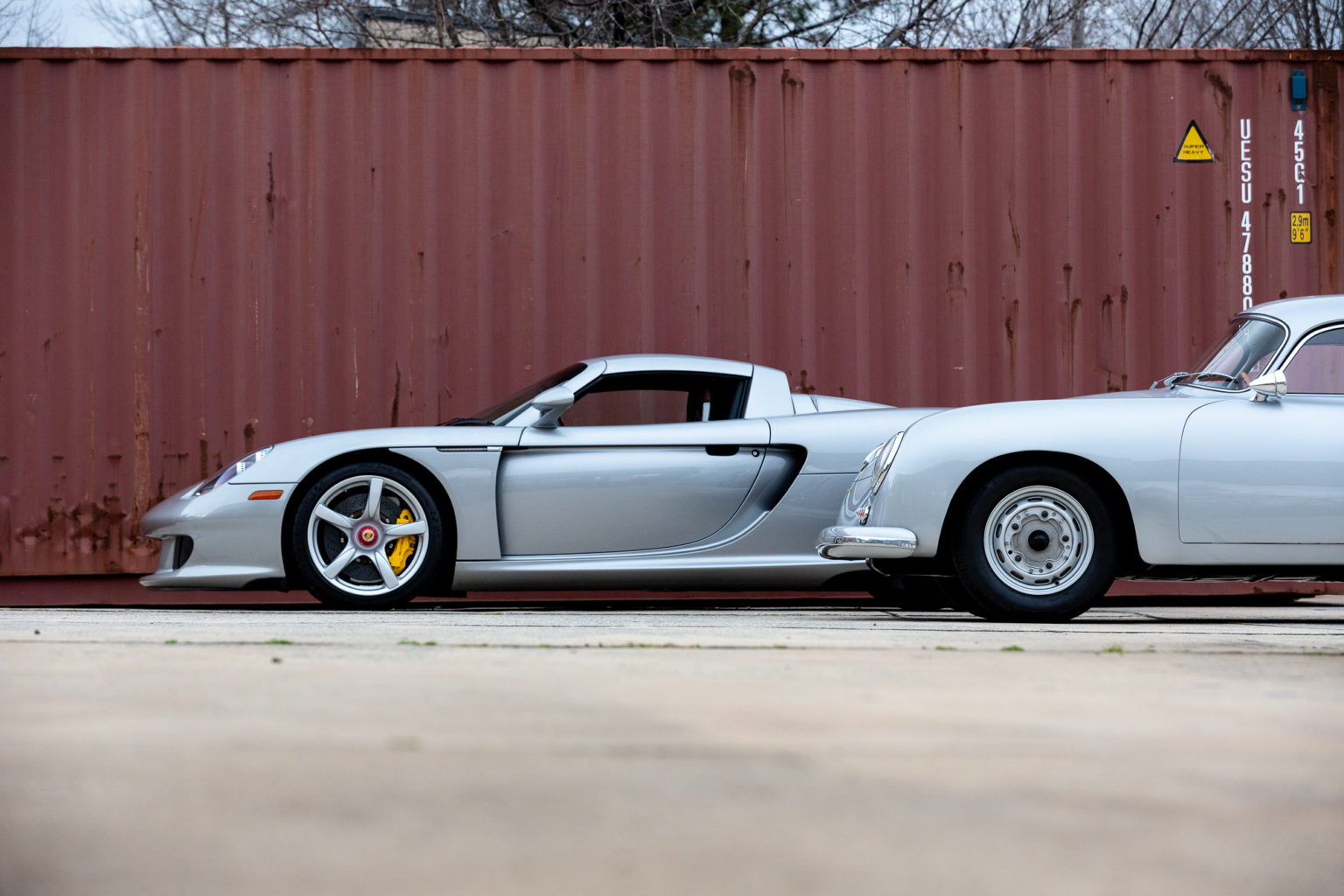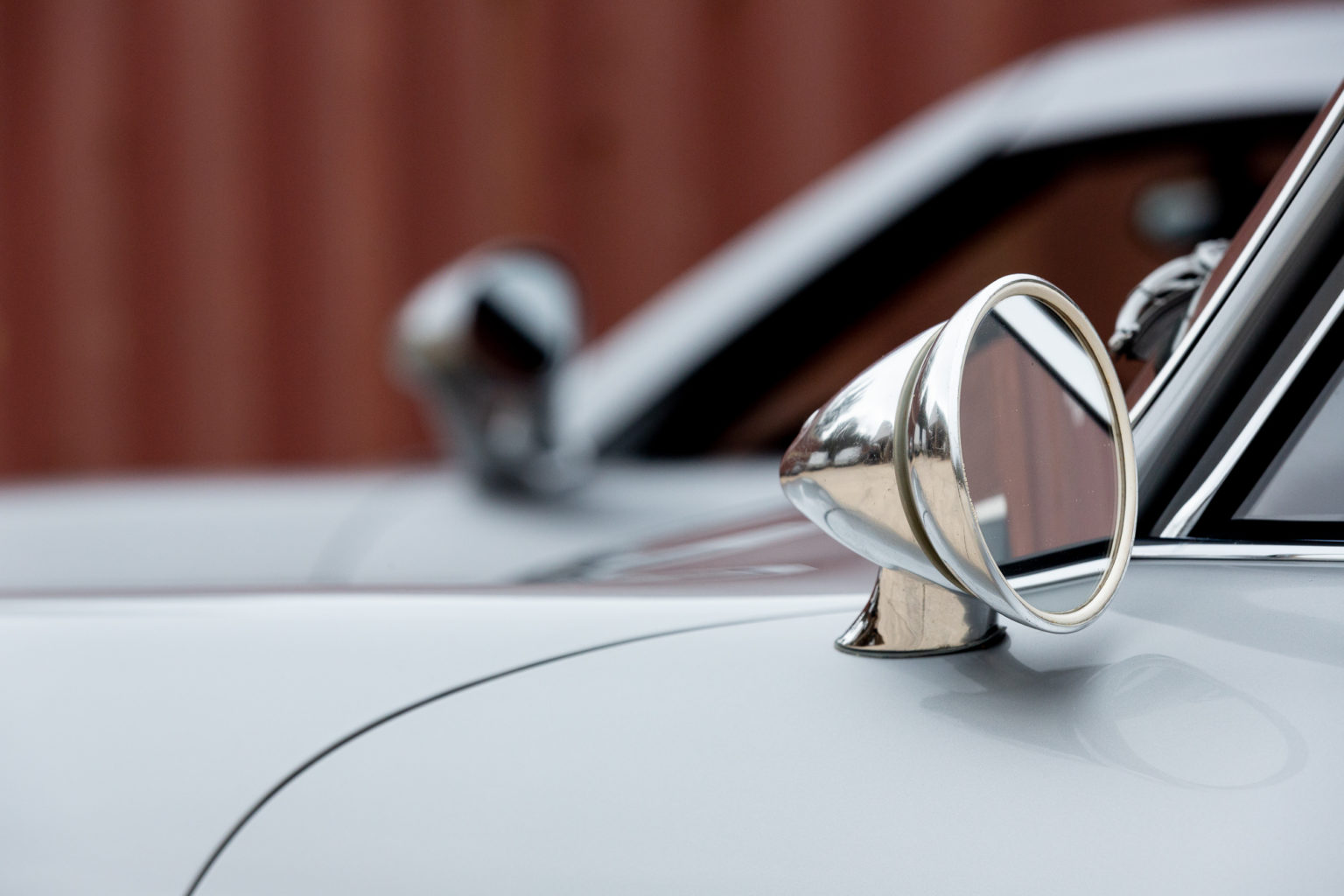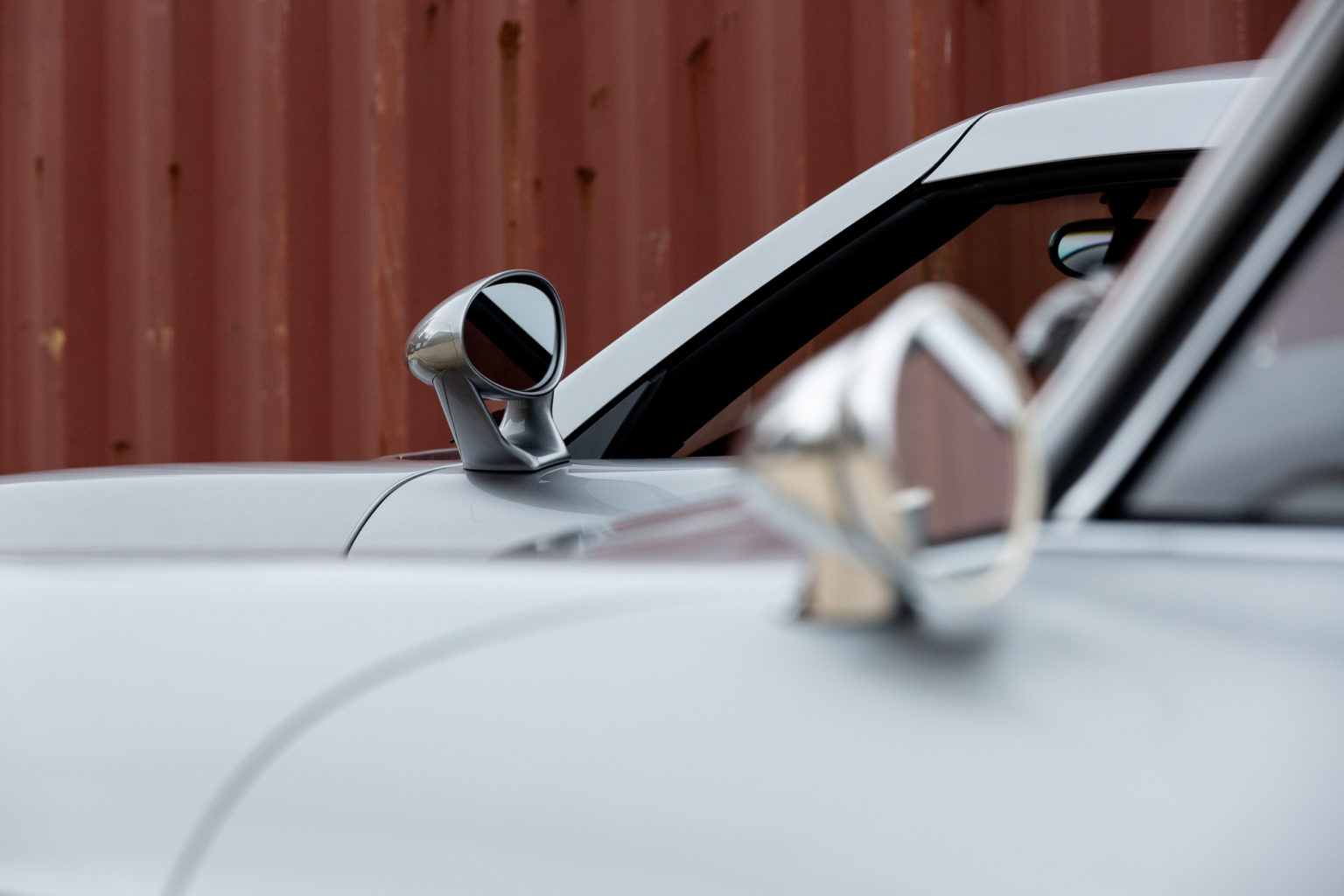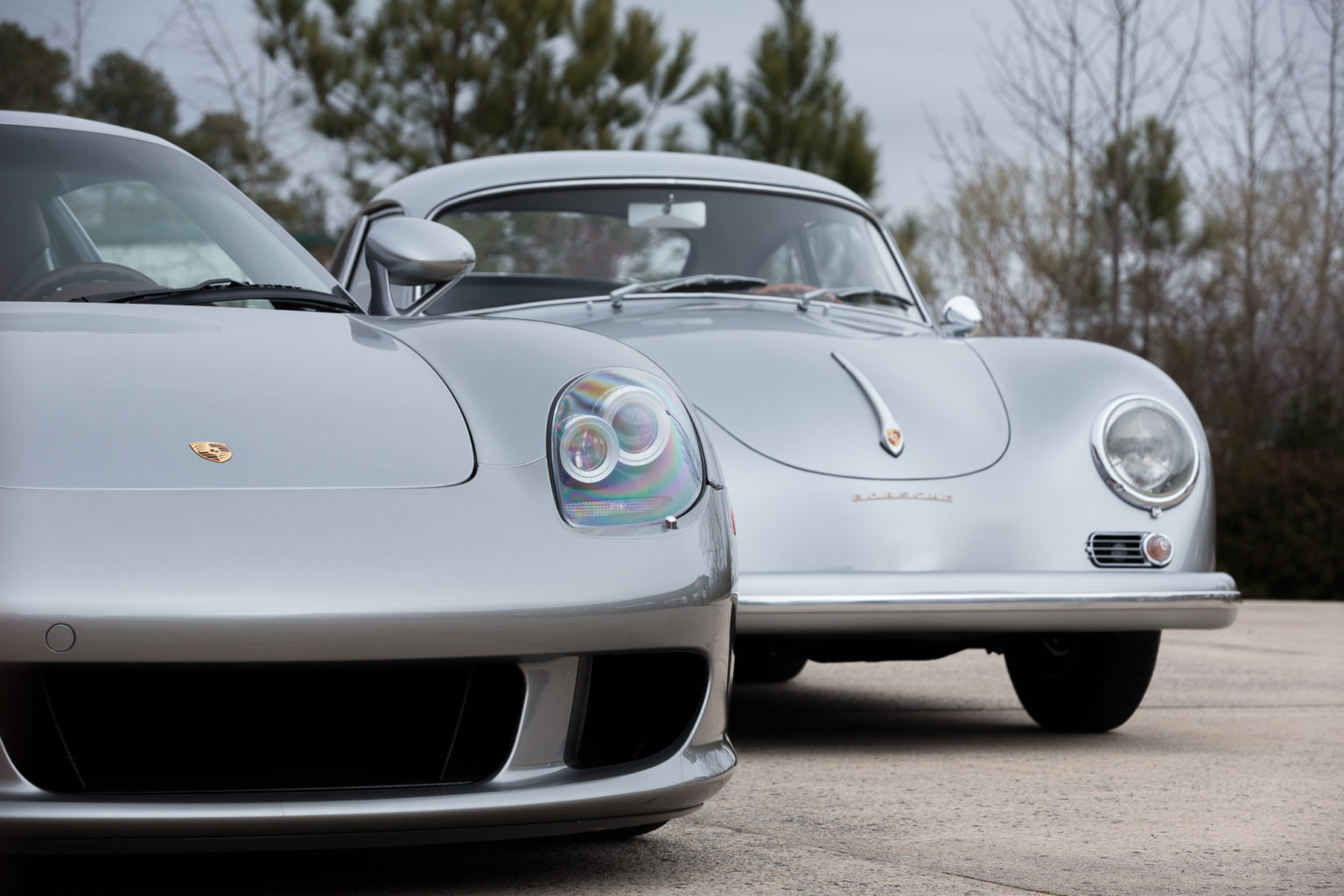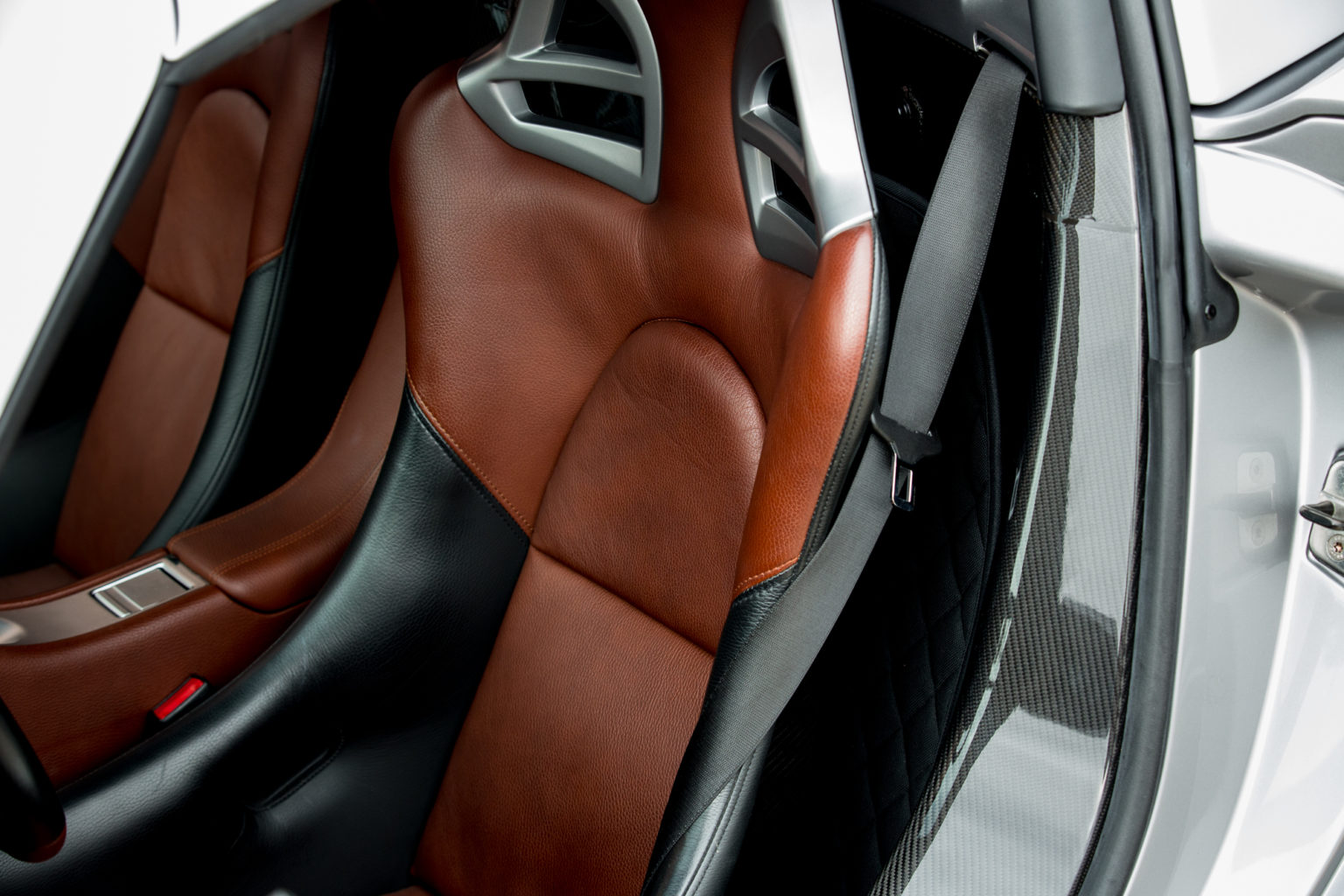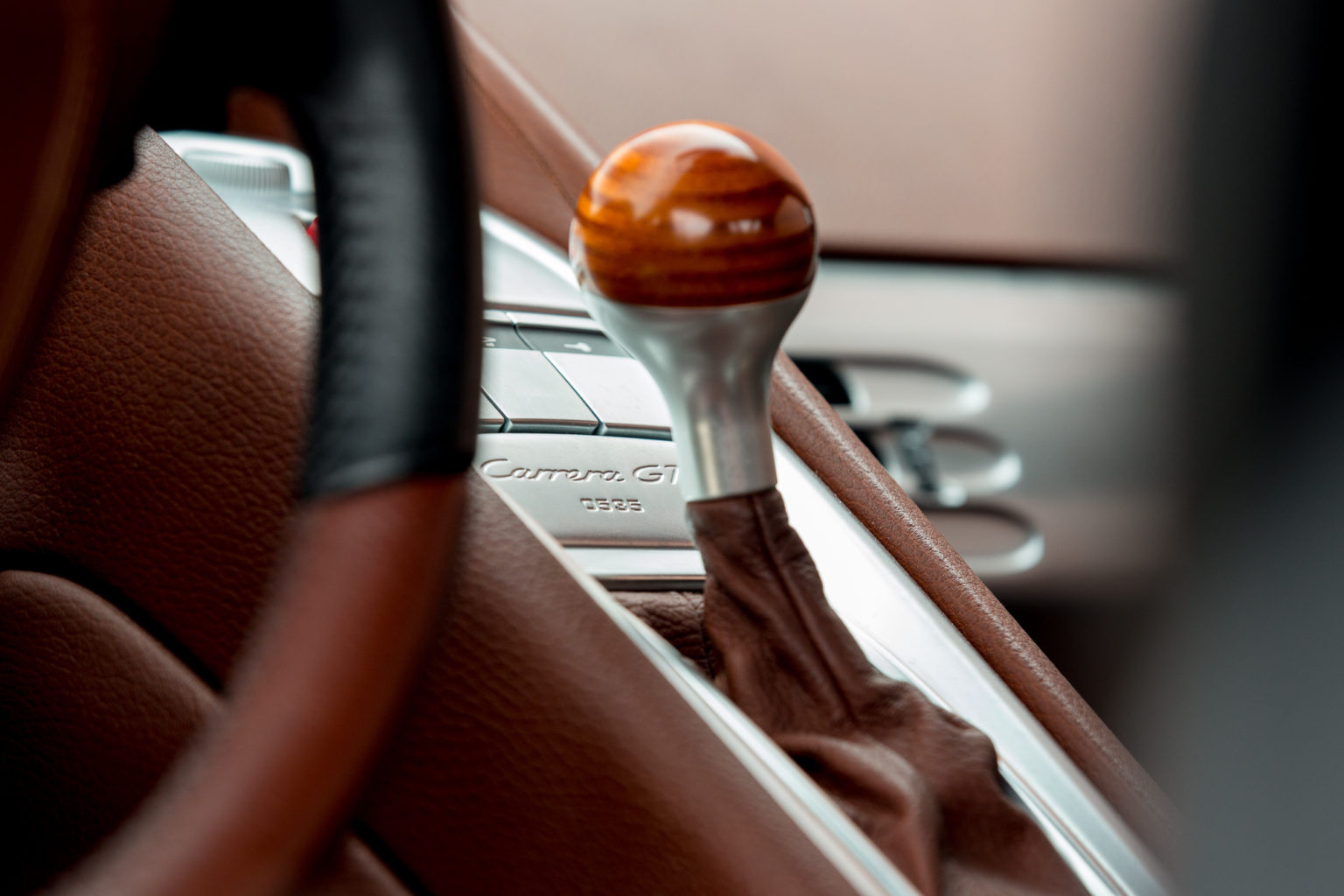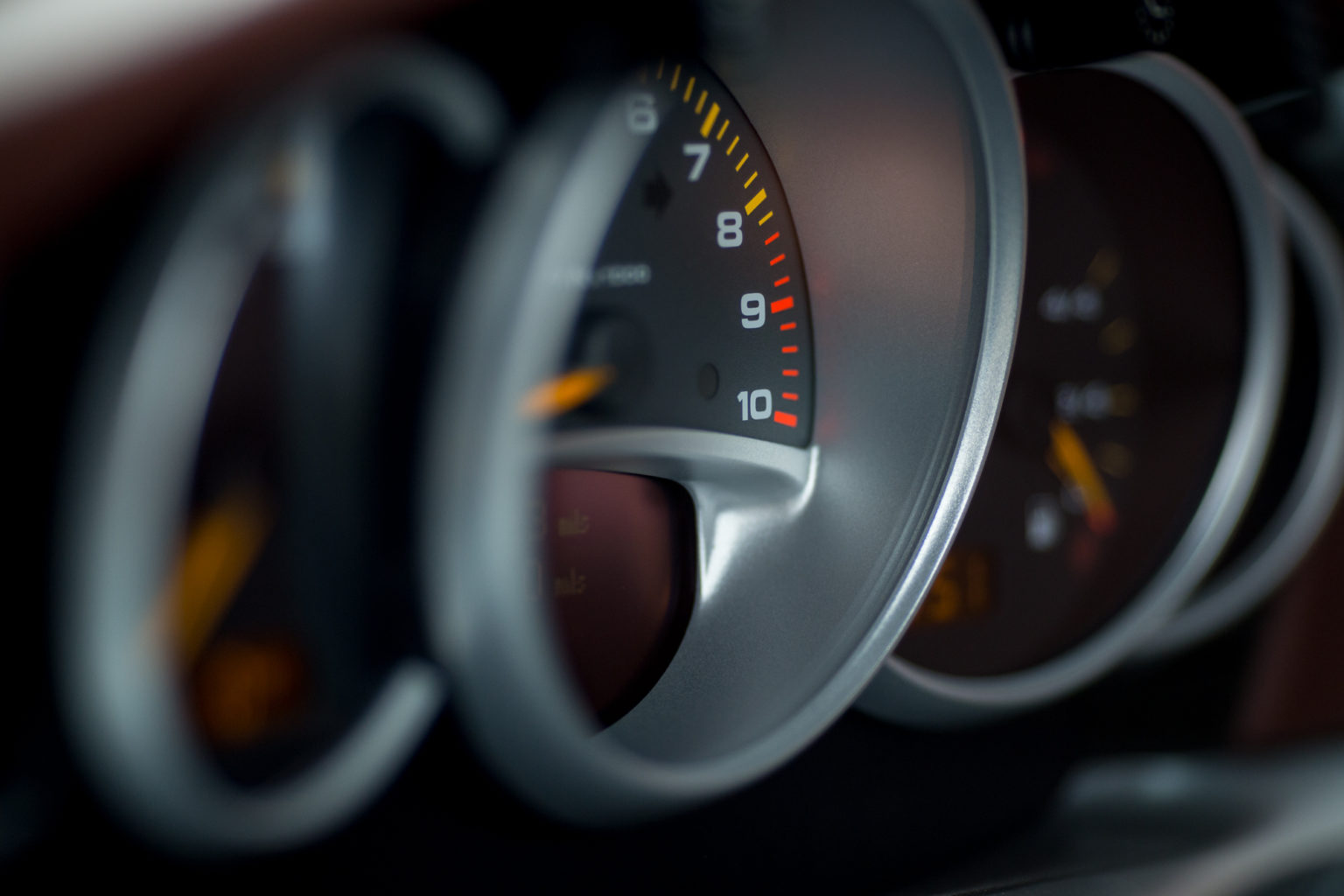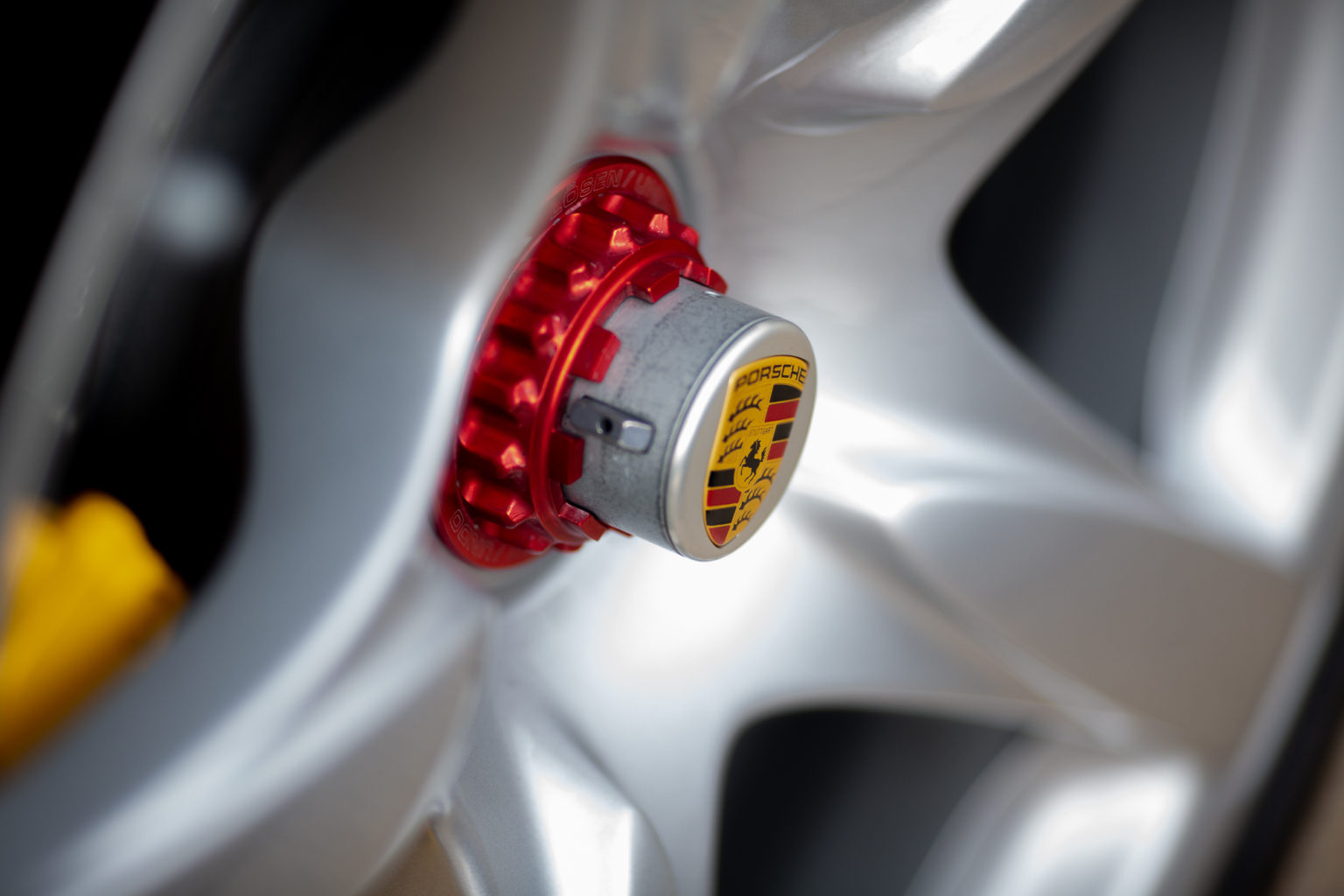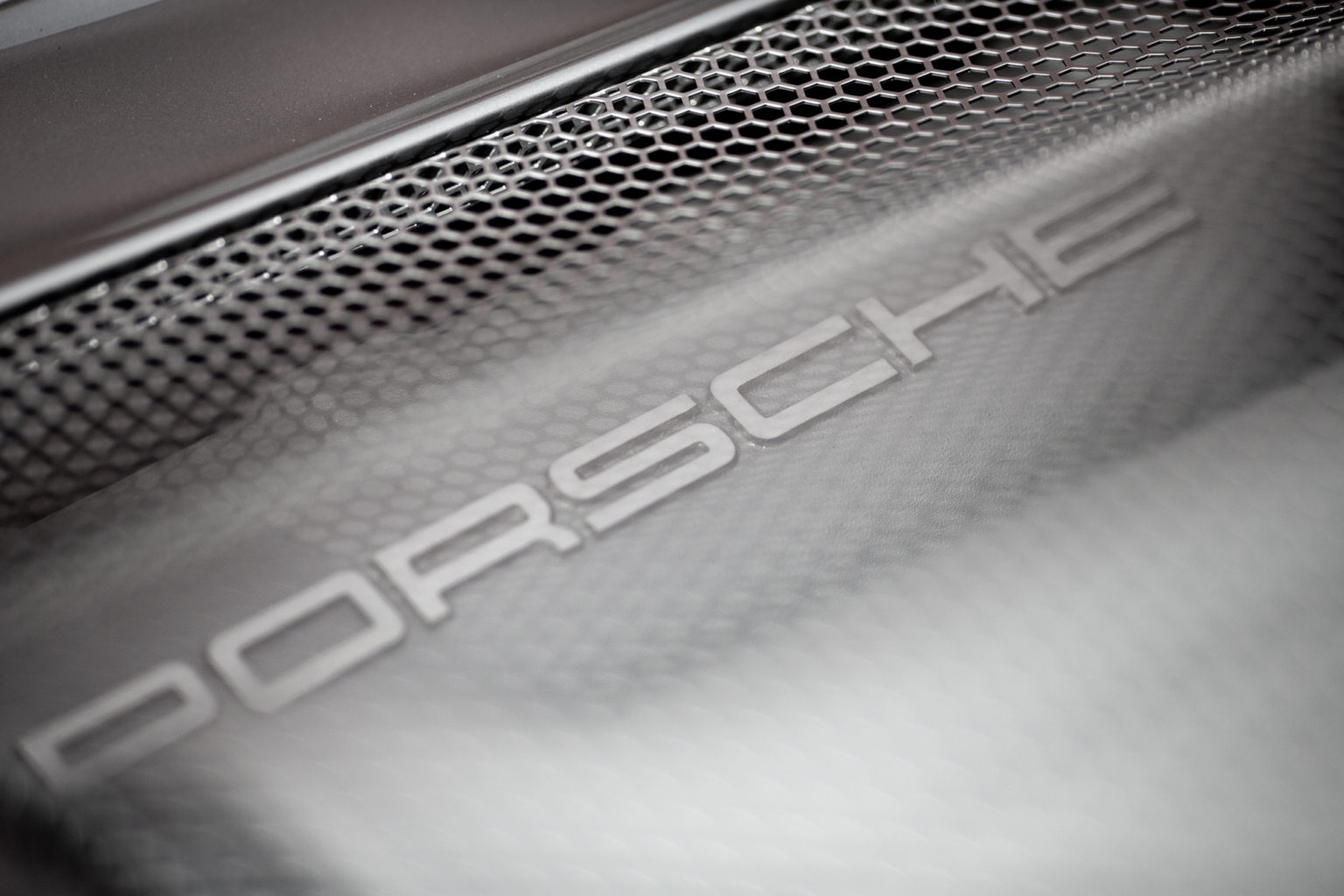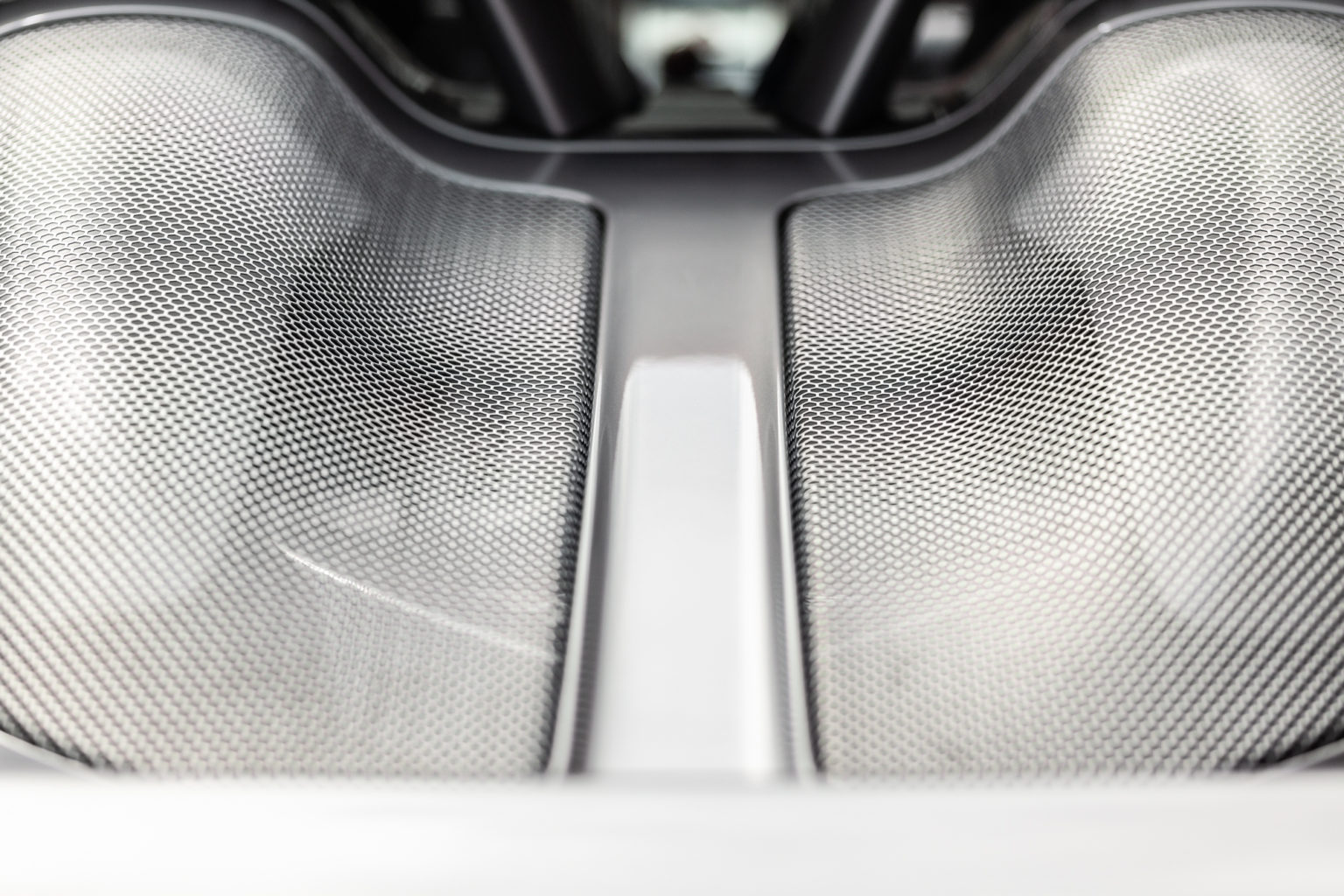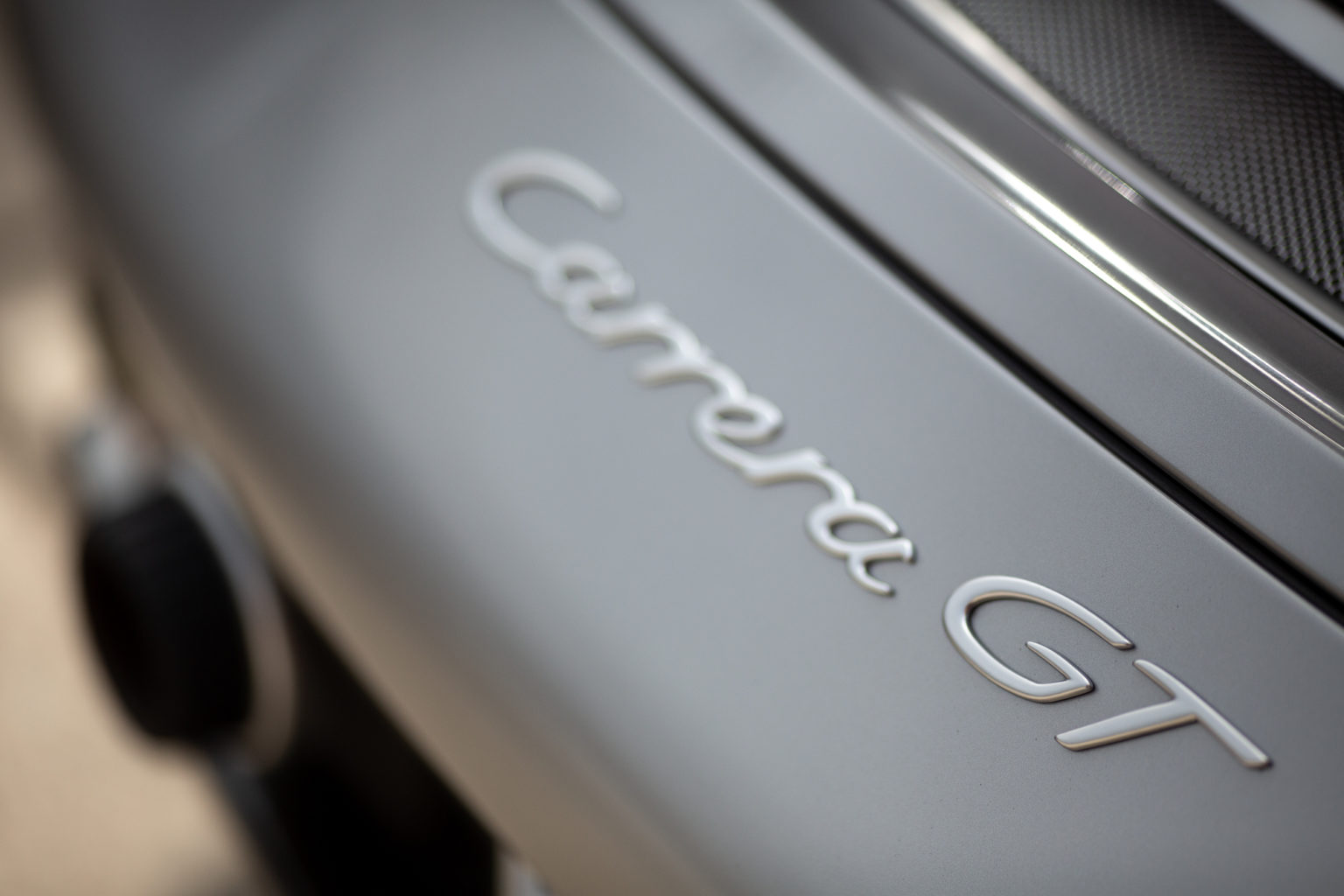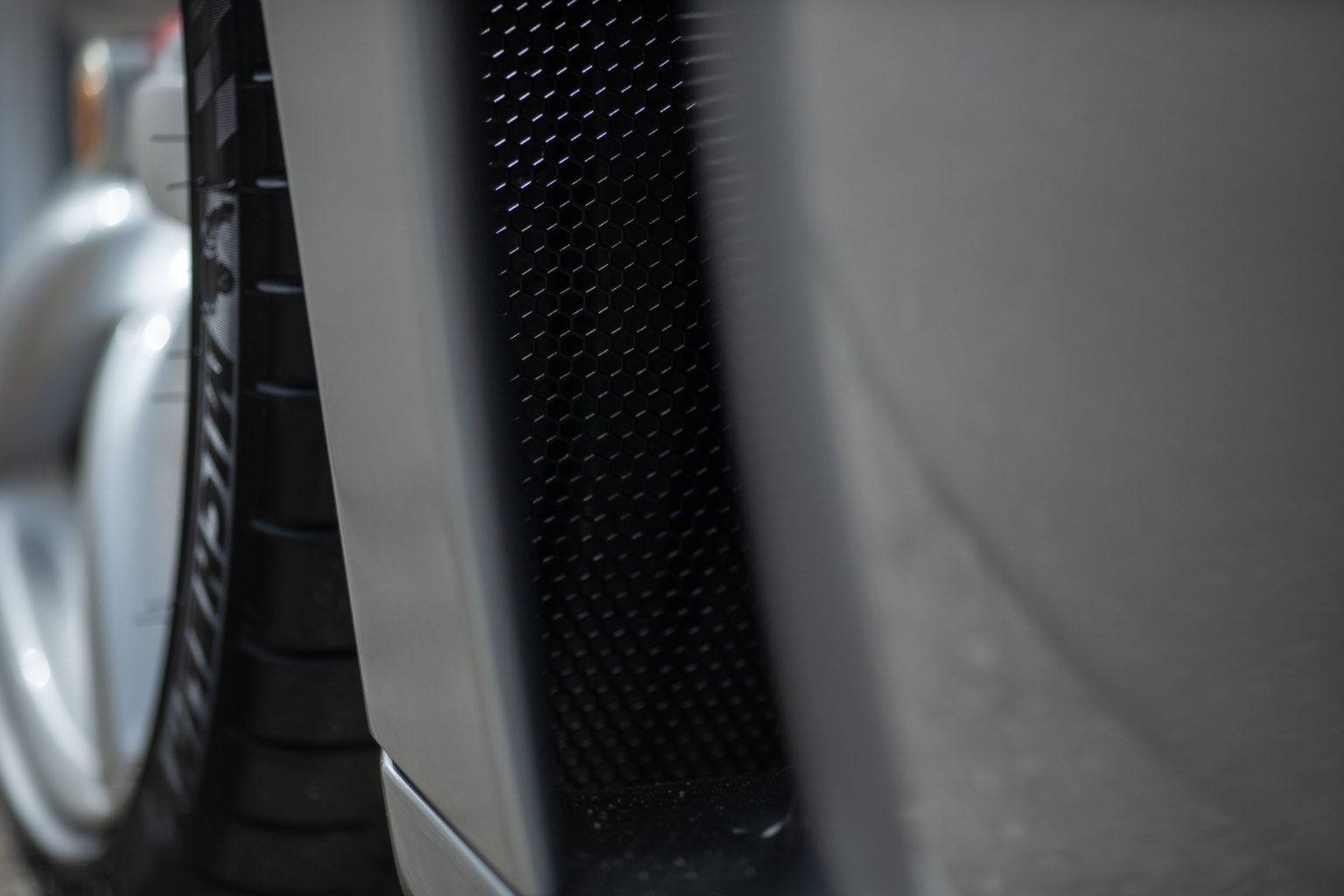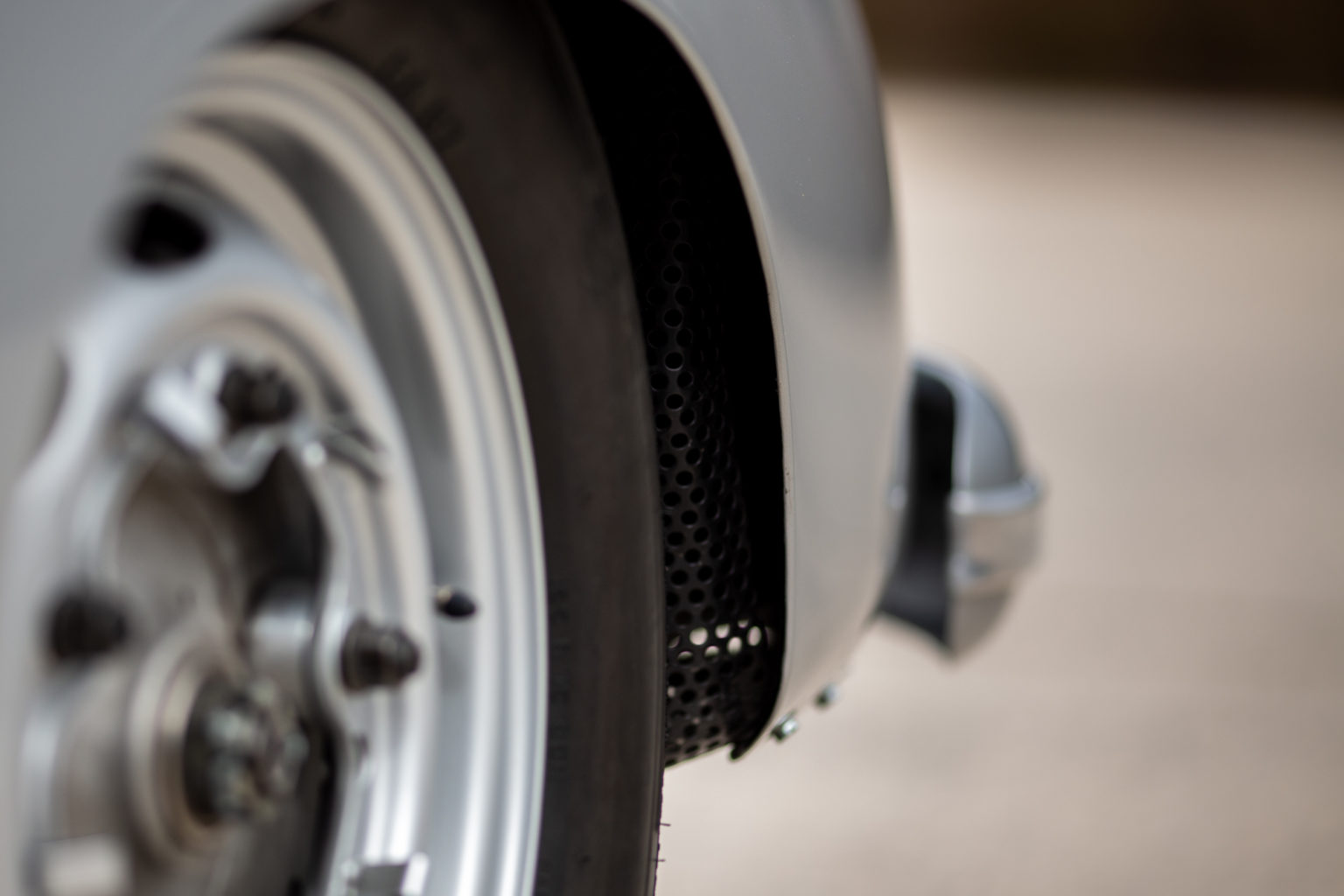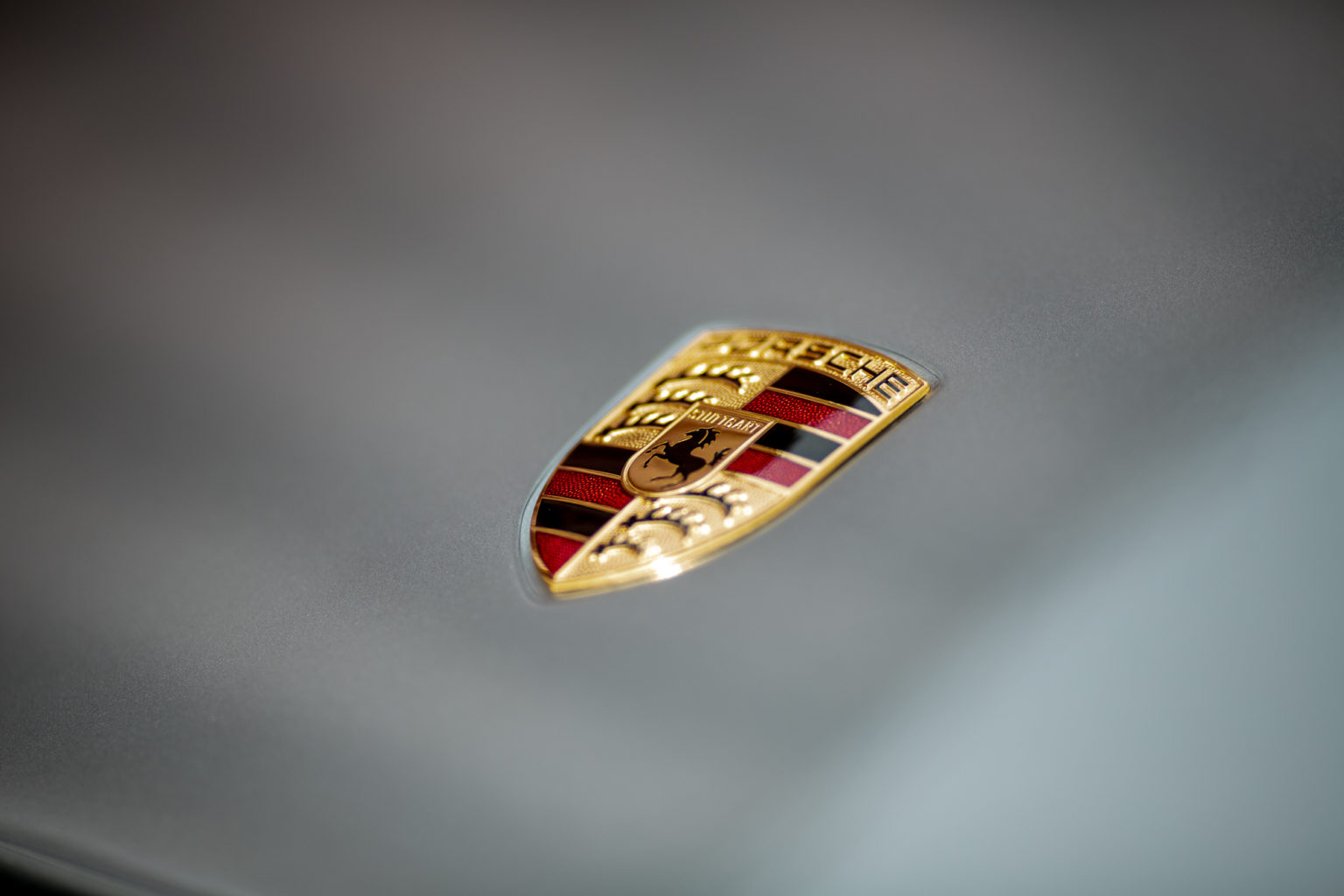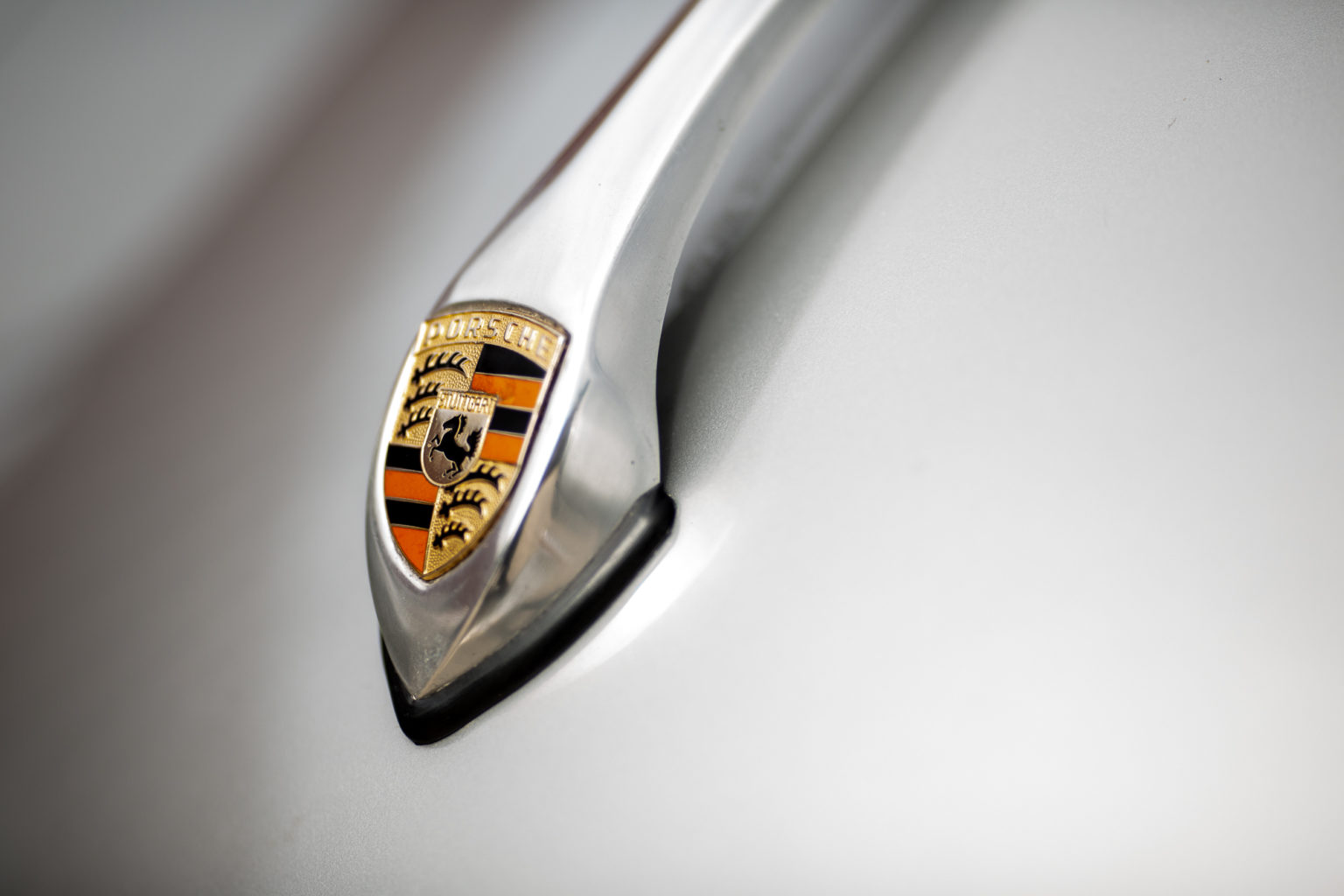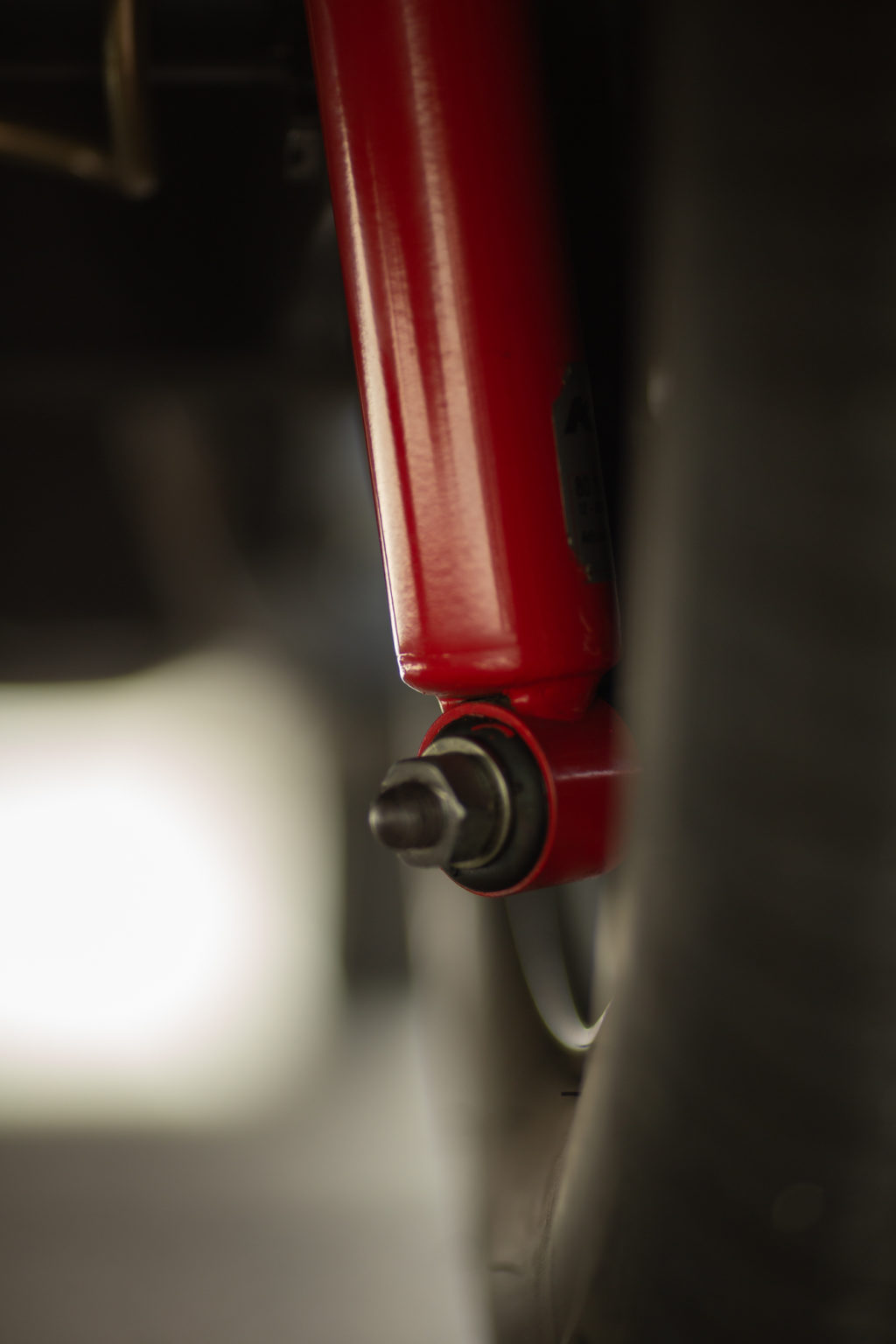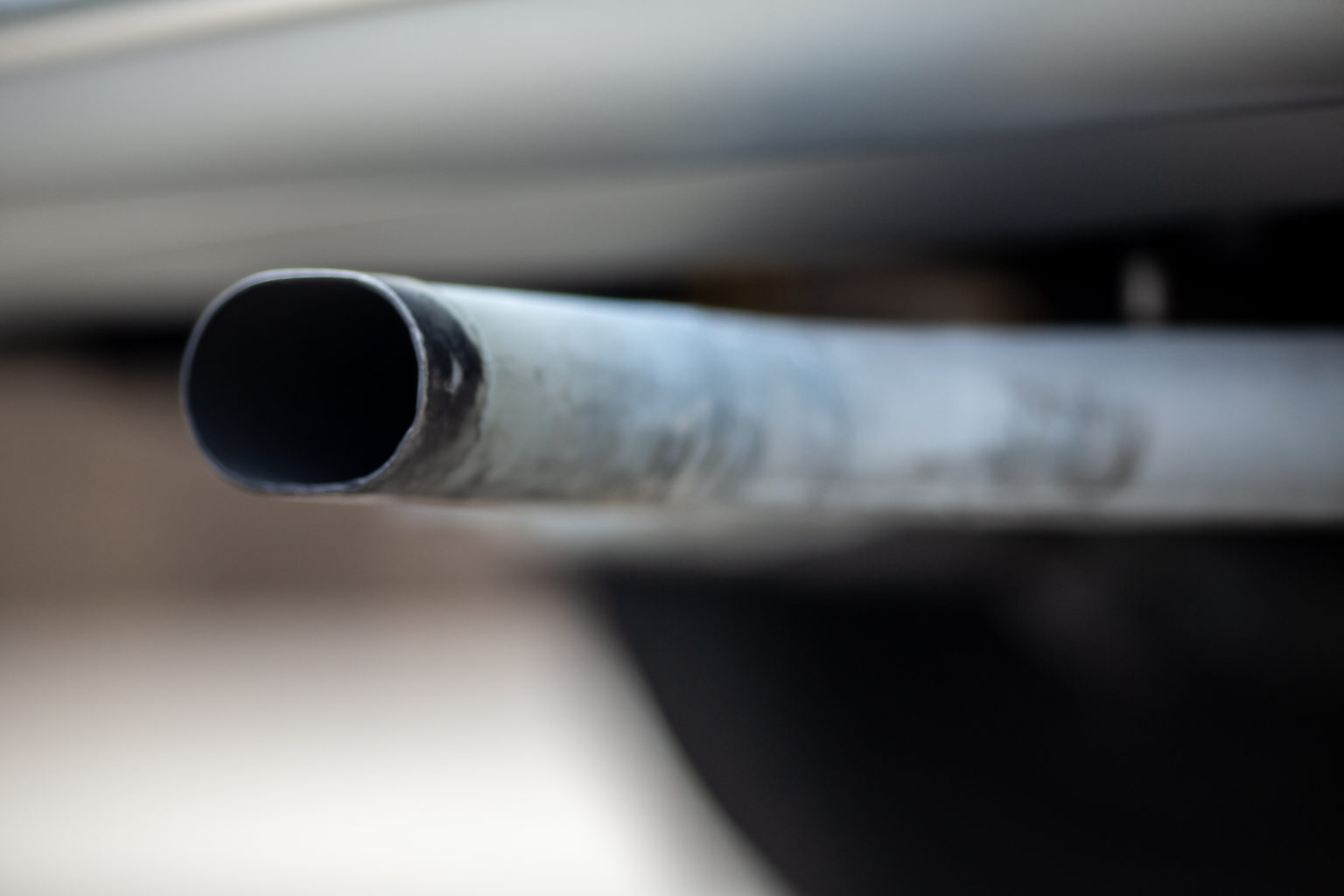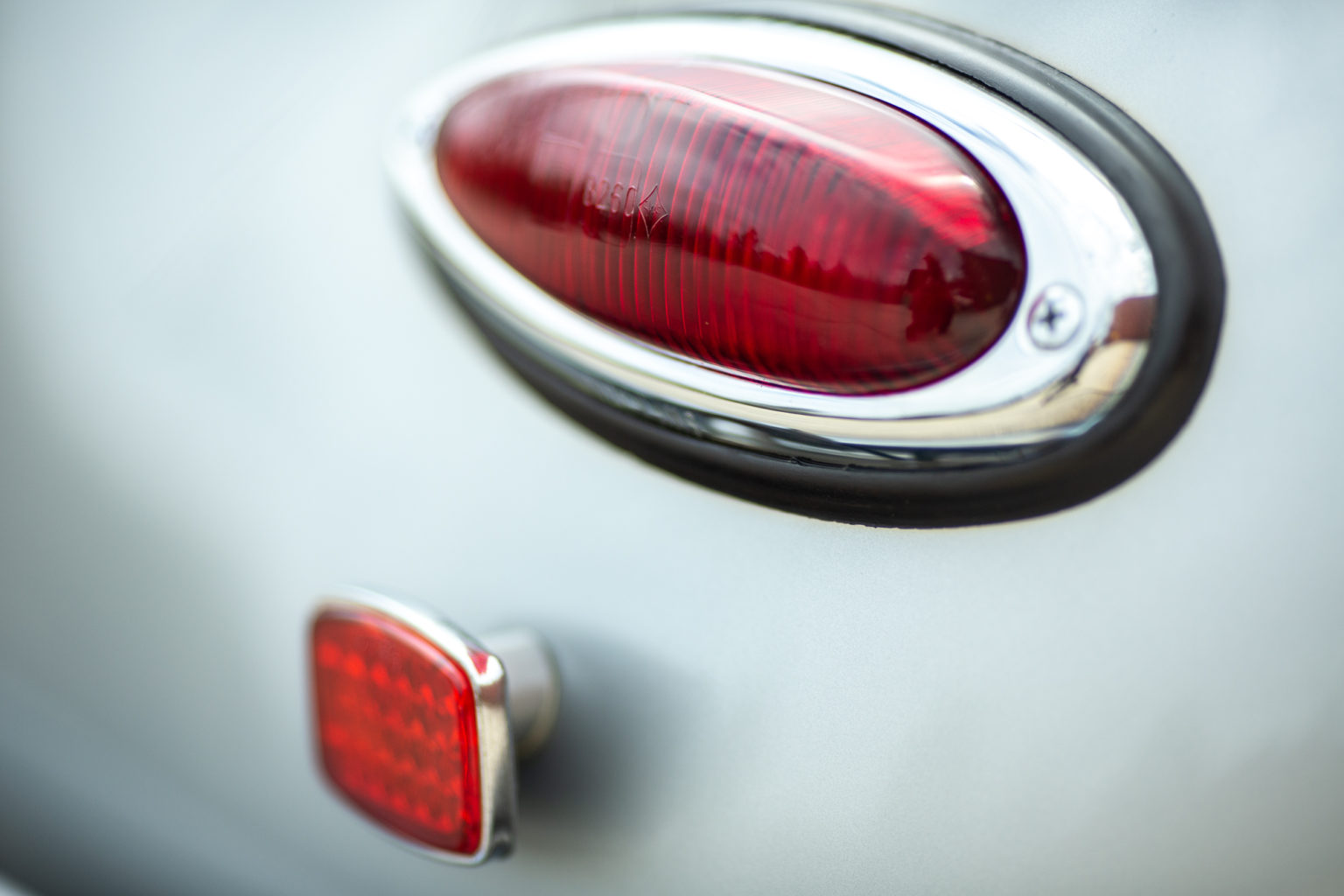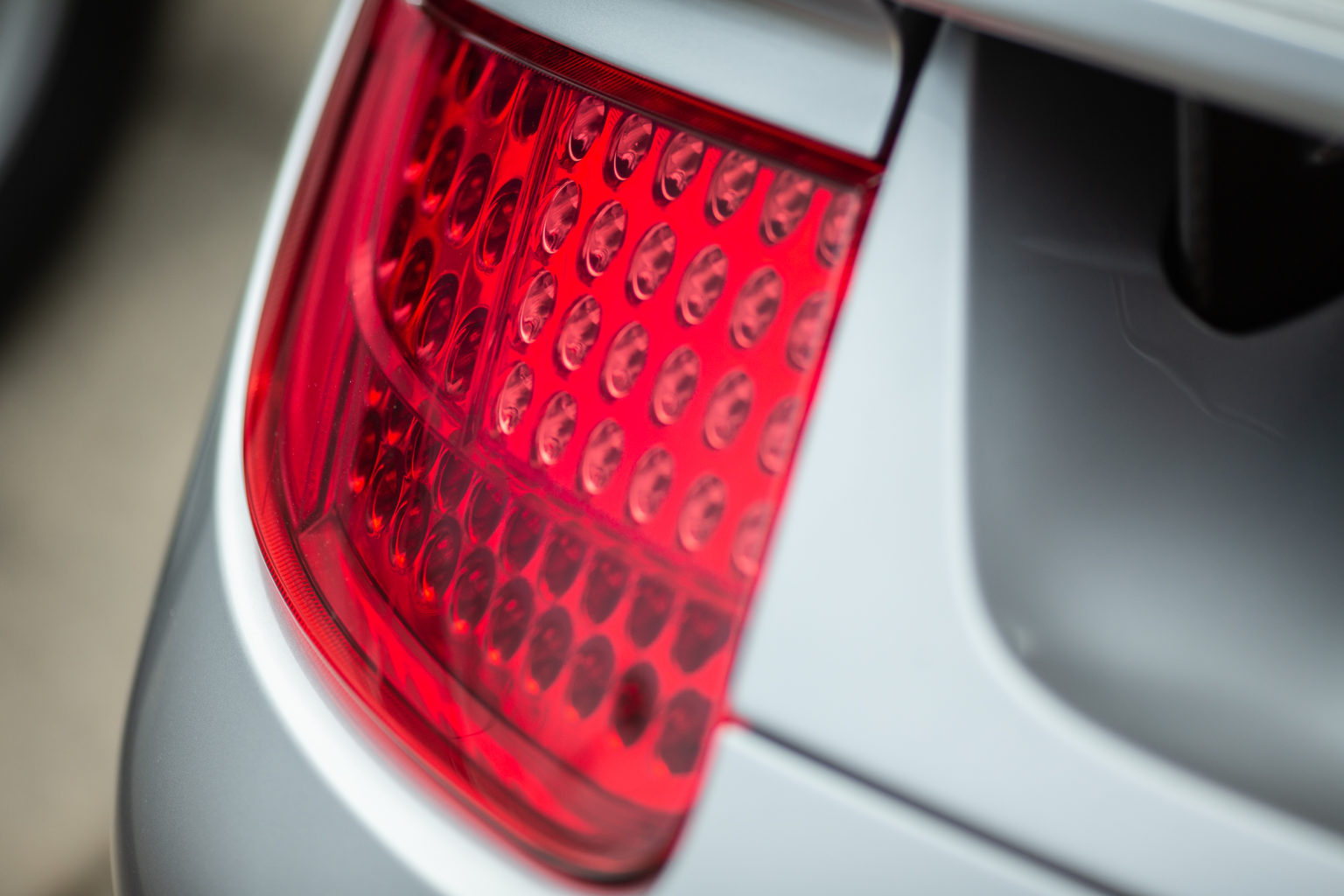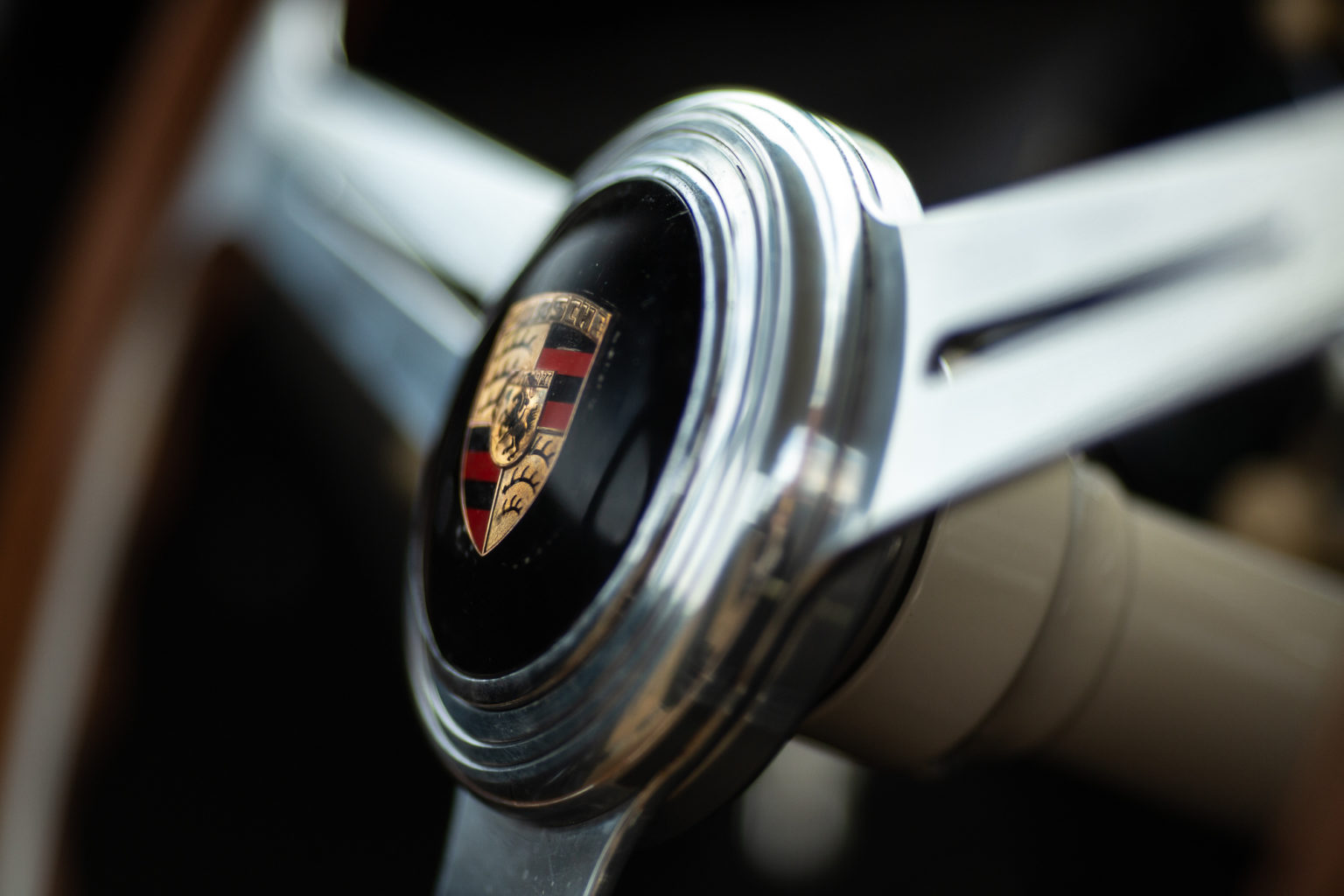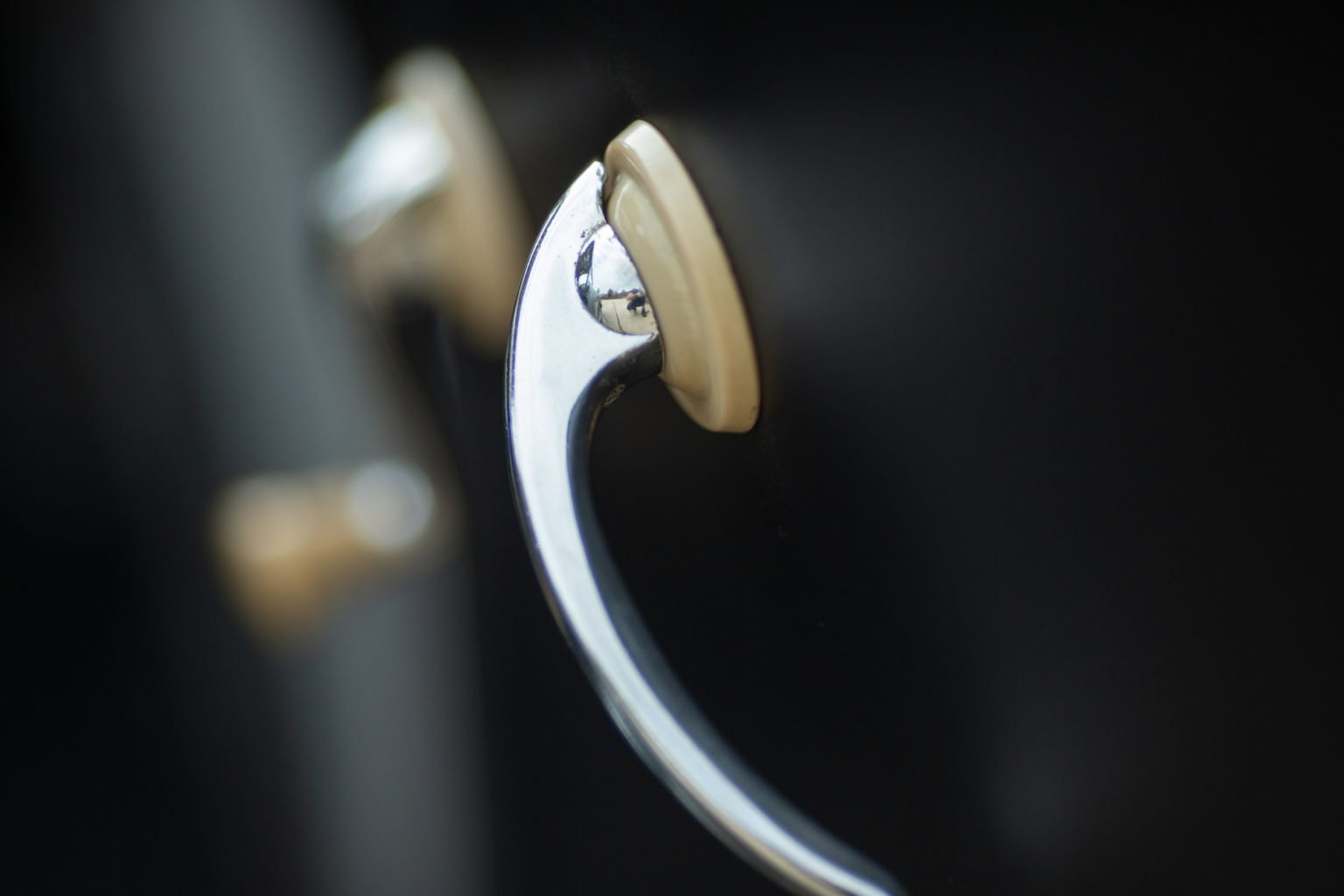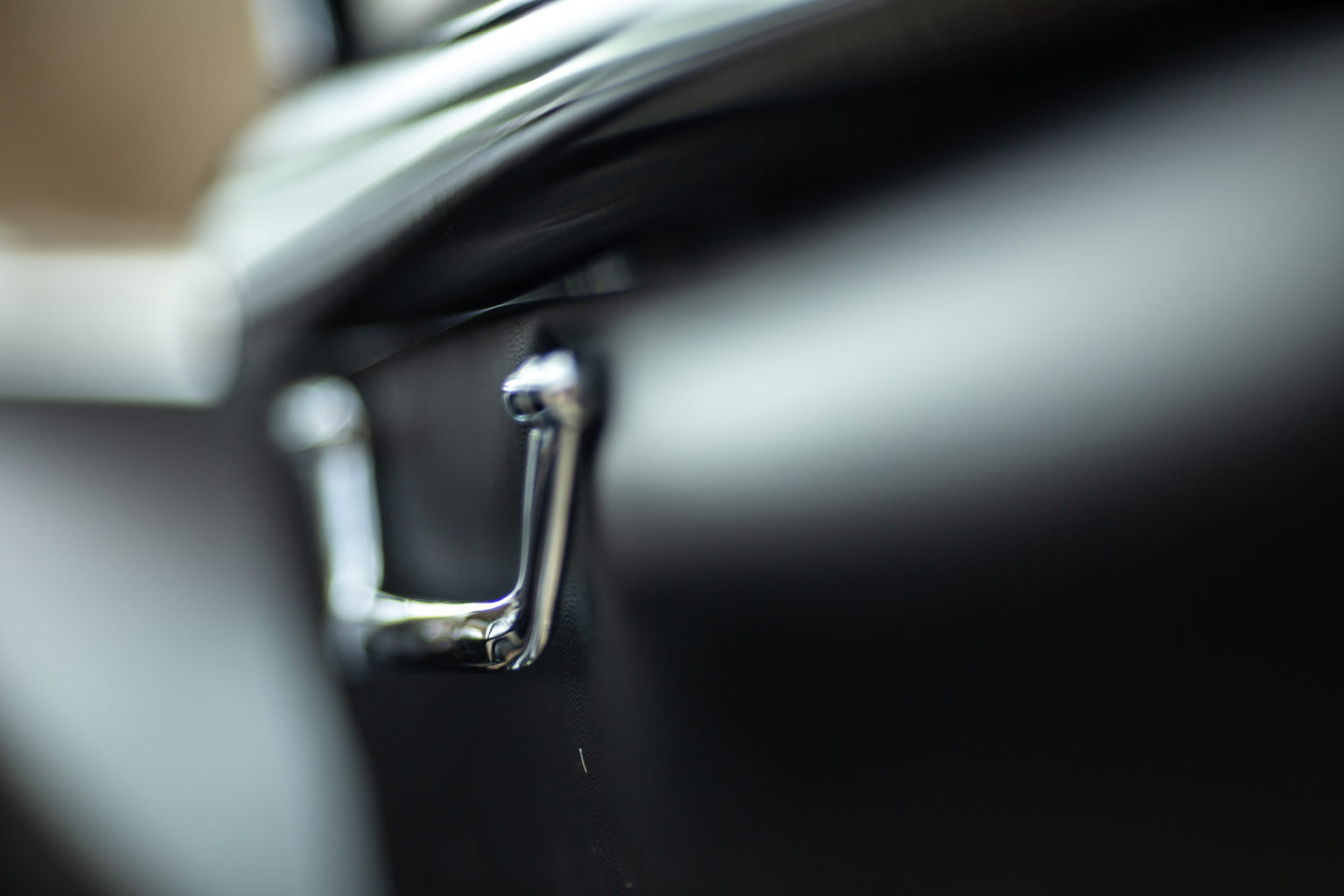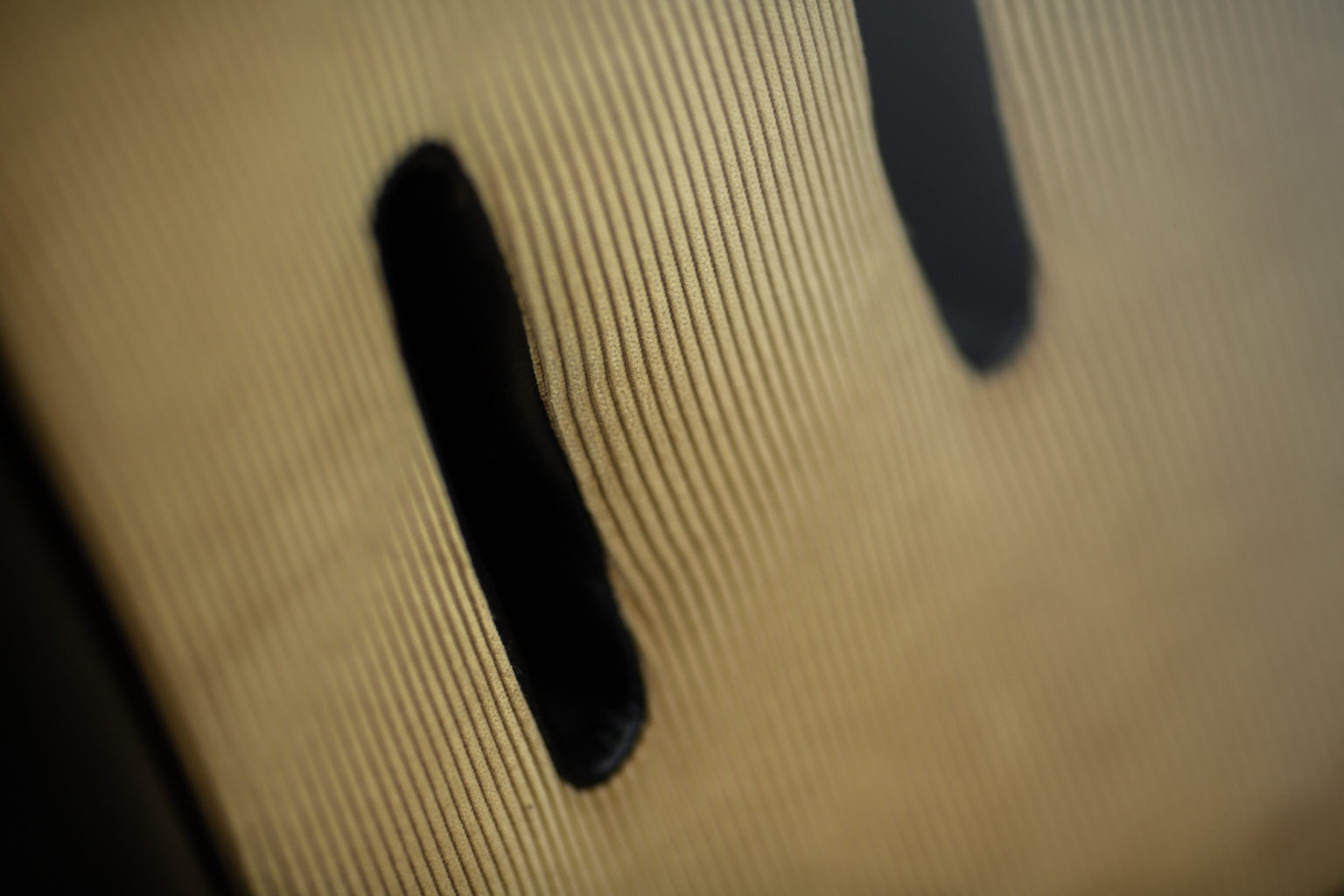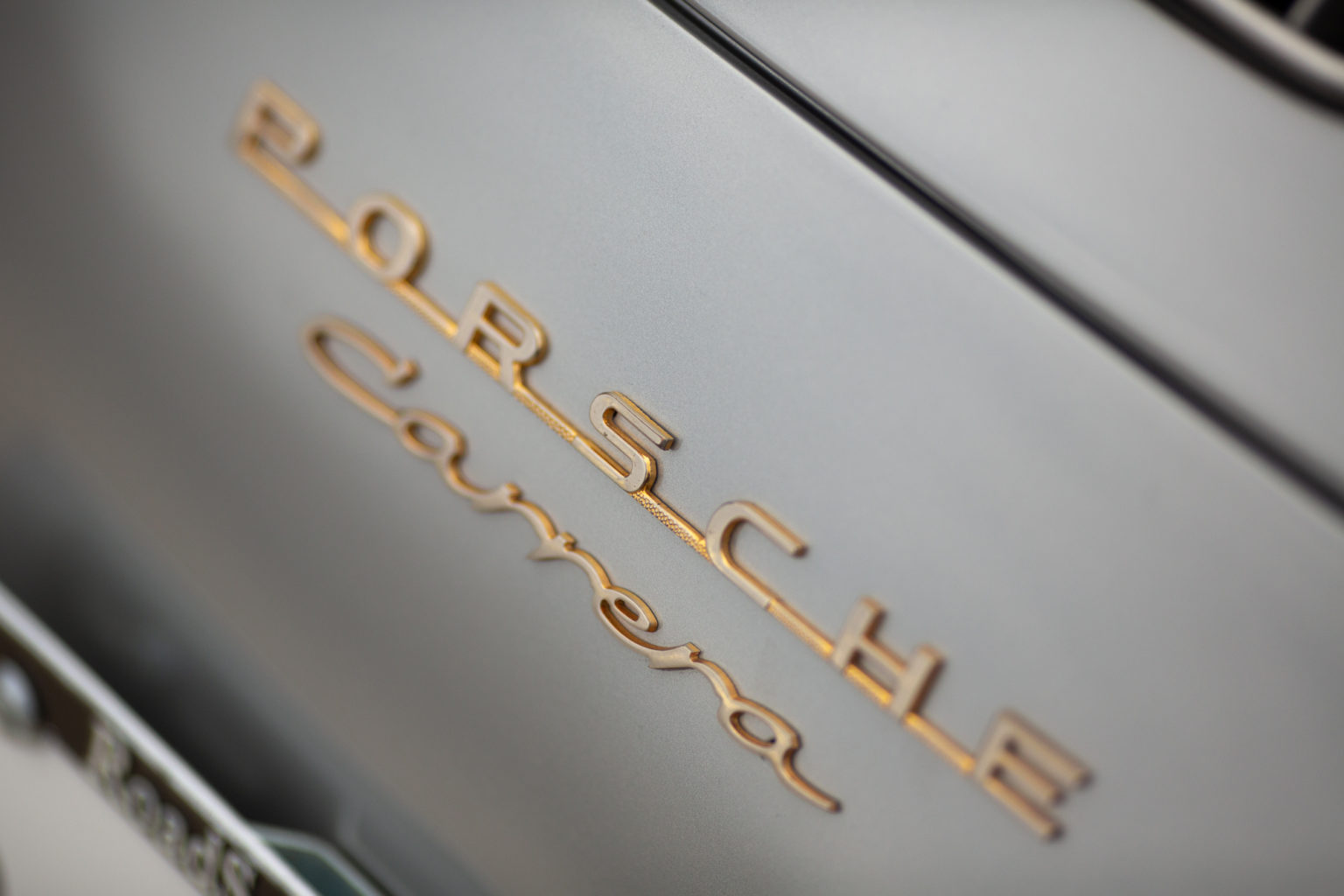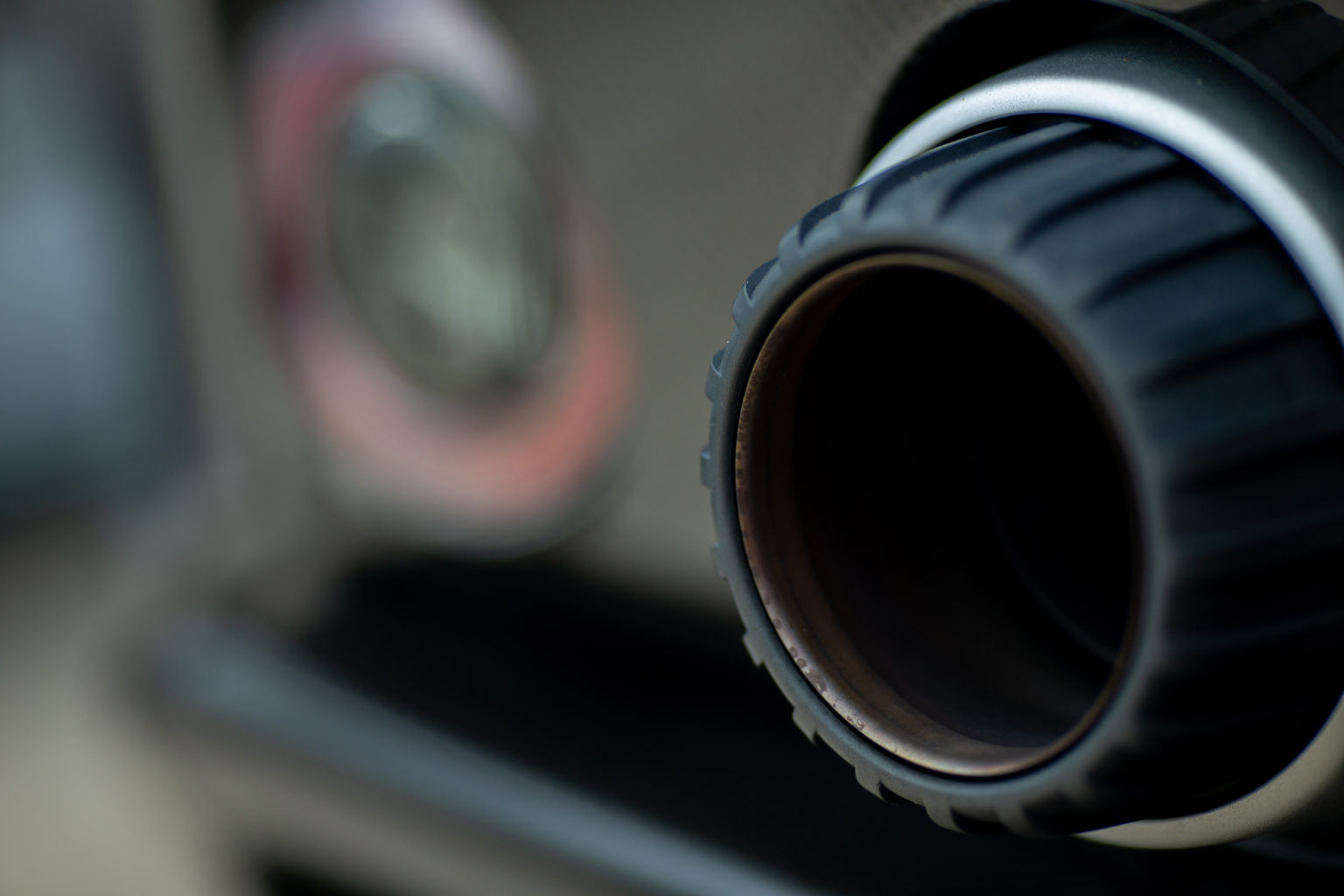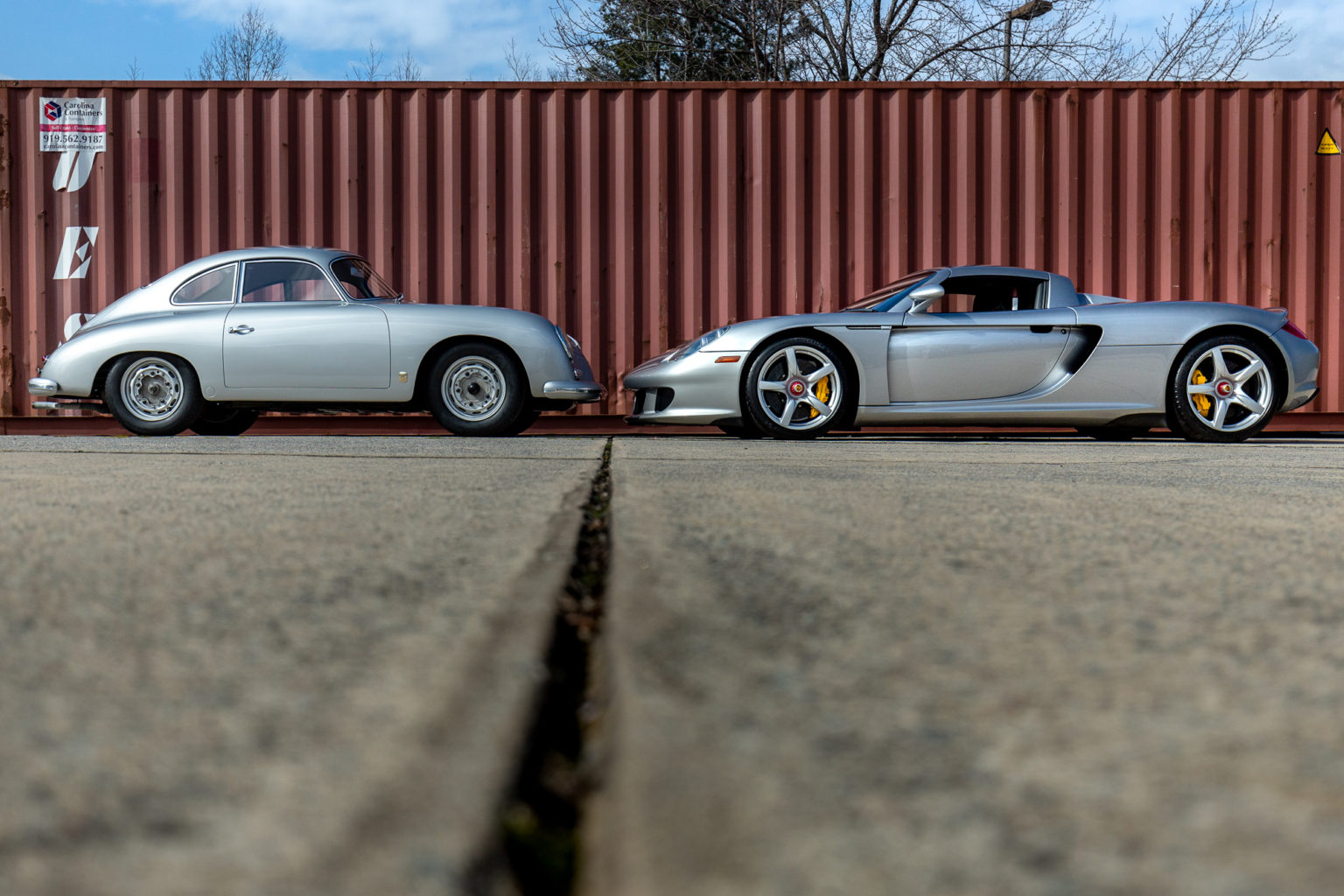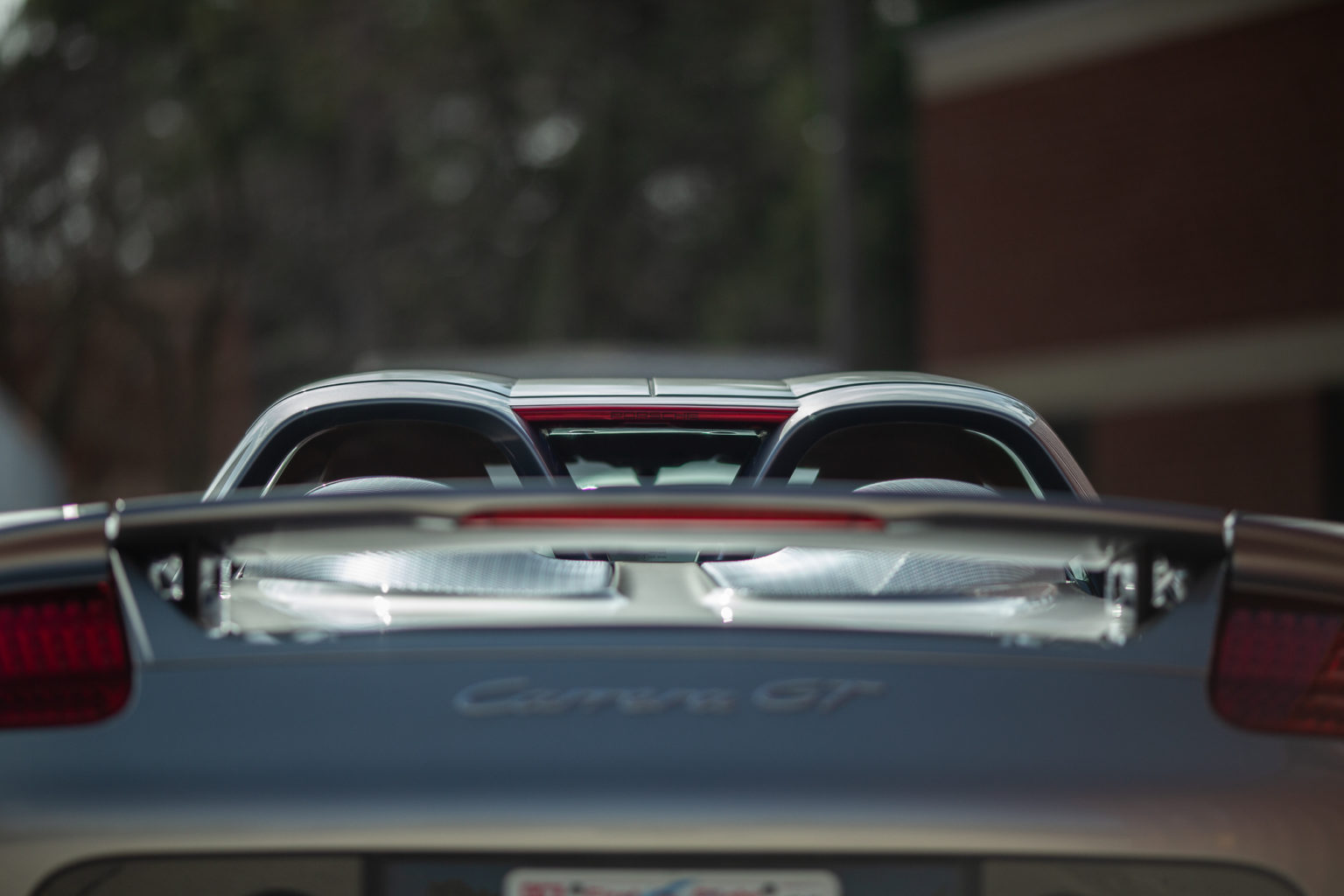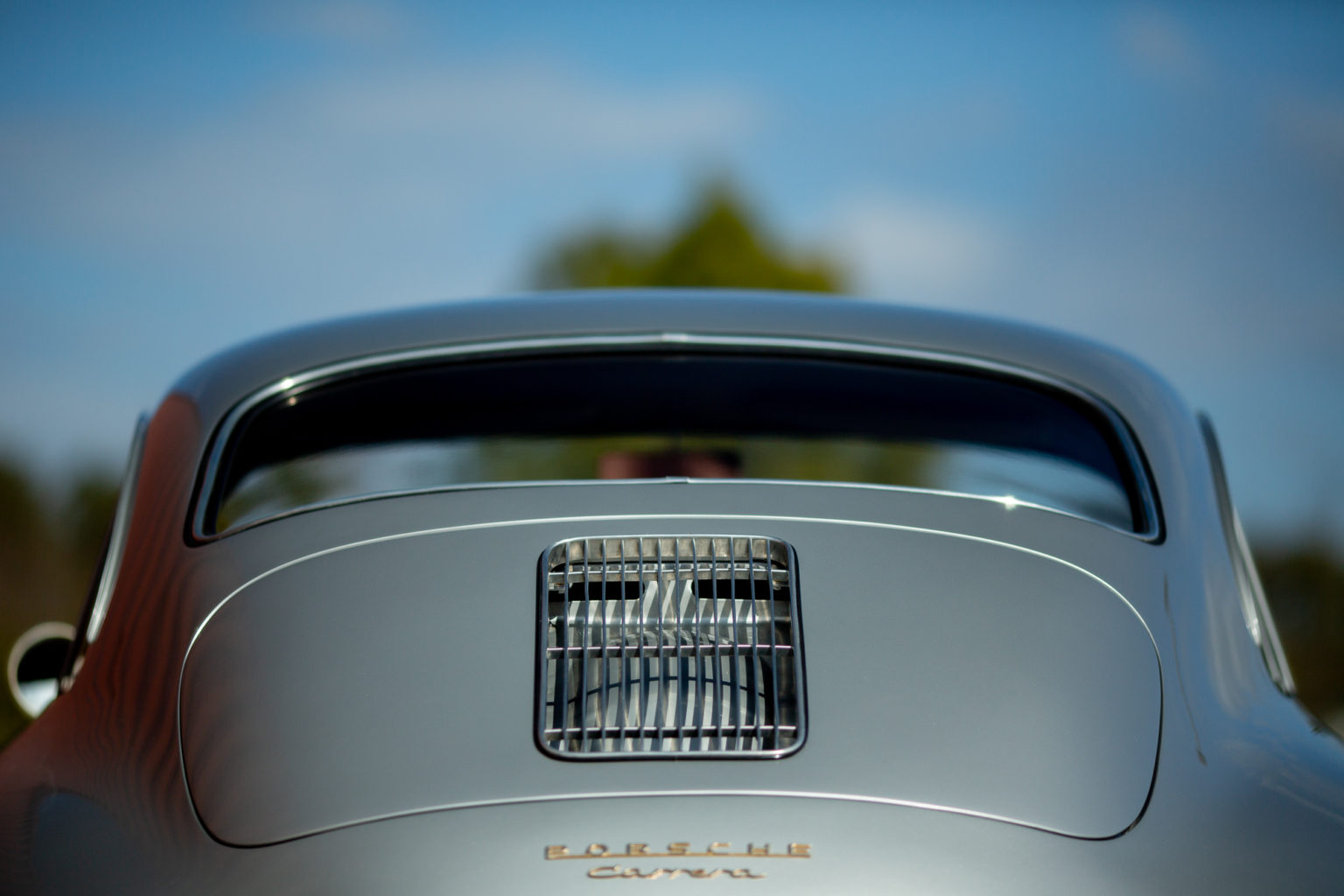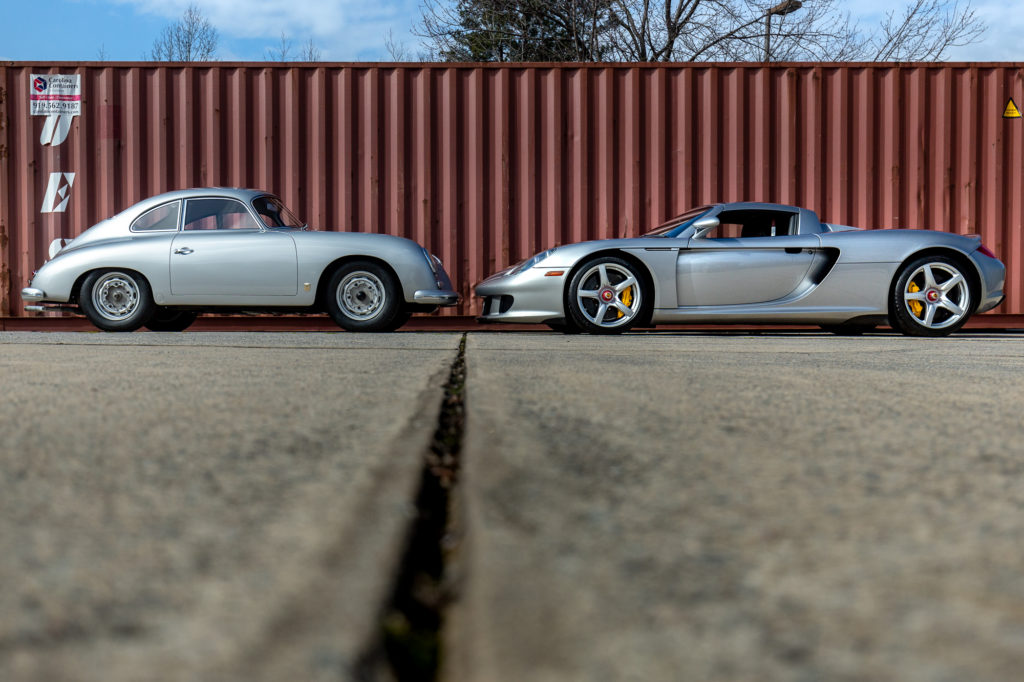
Side by side, the Carrera GT of 1957 and the Carrera GT of 2004 are a world apart. One, a steel-bodied production car stripped of any superfluous items that might hamper its competitive advantage, and the other an overt carbon fiber sculpture with luxurious trimmings and extraordinary performance capabilities but no intentions of competing in sanctioned competition. Nearly five decades separate the two, and Porsche underwent a consistent change in its processes, technology, and strategies, but has never faltered from its dedication to producing a sports car that is as memorable to drive as it is aesthetically pleasing. Where the two radically different vehicles find common ground is their visceral, experiential nature through their superb power to weight ratios and handling, and the competition engines that are at the core of their performance. When compared to their contemporaries, there’s no argument that the Carrera GTs are in a league of their own.
The 356A 1500 Carrera GT featured a detuned version of the Ernst Fuhrmann designed, alloy-cased, dry-sumped, dual overhead camshaft engine with roller bearing crankshaft that powered a complex system of bevel gears that operated the valve train. It was the same engine that led the mighty 550 Spyder to numerous victories against more powerful competitors and proved itself in the grueling Carrera Panamericana race in 1953-1955. It’s a complex marvel of engineering akin to the automotive version of the inner workings of a Swiss-made watch movement. Dual-throat Solex carburetors and a sports exhaust bring overall power output to 125 horsepower- for the time making for double what the Porsche’s pushrod engines were capable of at the time.
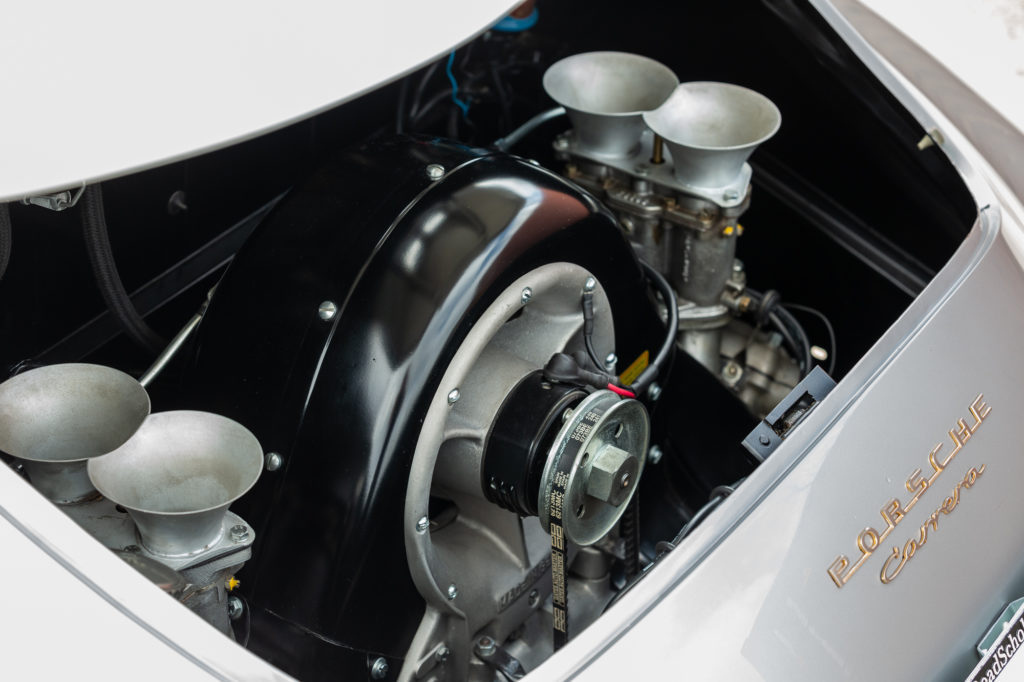
The 5.7 liter V10 in the 980 Carrera GT’s development can be traced back to 1992, when Porsche had developed a 3.5 liter engine with the Footwork F1 team for Formula One racing. Porsche’s engineers began development of a replacement for the 911 GT1 for motorsport use in 1995, and revisited the shelved F1 engine as the basis of the engine for the Le Mans Prototype car, internally dubbed the 9R3. Porsche’s focus had shifted toward development of the Cayenne, and as a result further development of the Porsche LMP 2000 was abruptly cancelled in 1998, but the modified version of the 3.5L V-10 engine that was being developed was not shelved for long. That glorious naturally aspirated, dry-sumped, 68º V-10 that had originally been built up to 5.5 liter specification for the LMP 2000 car was chosen to be at the heart of Porsche’s new supercar- the Carrera GT. Displacement was increased to 5.5 liters, a number that grew to 5.7 liters in production to offset the fact that the Carrera GT was 10% heavier than anticipated, so in order to keep the intended power to weight ratio, the engine block height was increased by 7mm to accommodate an additional piston ring and the bore diameter increased by 2mm. The production engine produced 604 horsepower and 435 ft-lb of torque with a redline of 8,400 rpms.
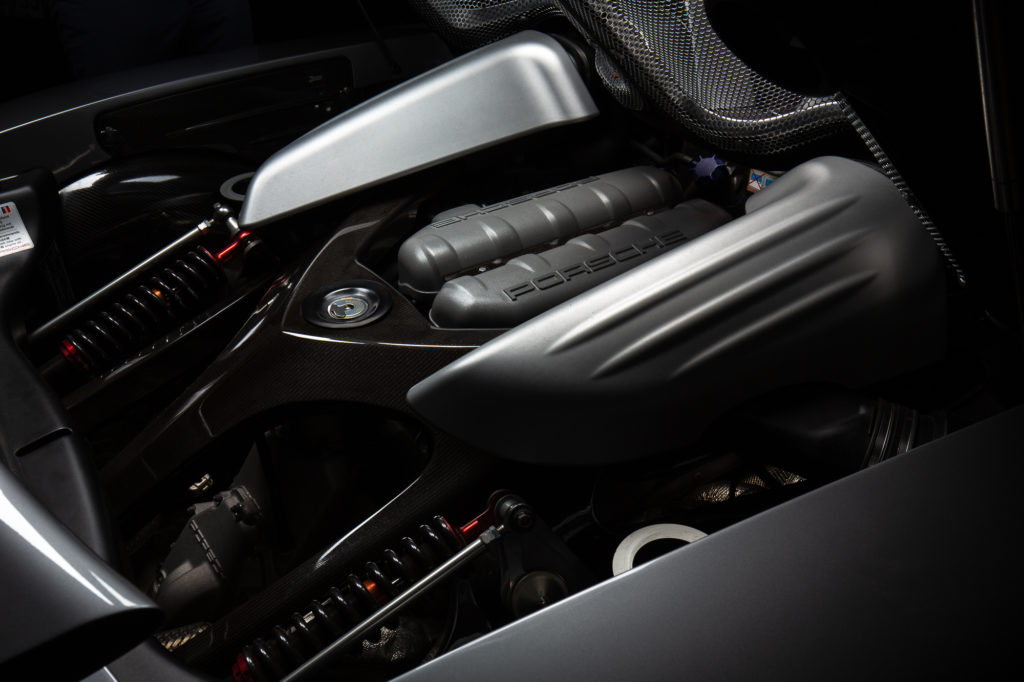
Since the 356A Carrera GT was intended for competition, weight reduction was paramount to optimize its power to weight ratio. The Carrera GT’s lightened body shell monocoque was supplied by Reutter Karosserie. Sound deadening and undercoating were omitted entirely, and in place of carpeting, a “plastic” interior was fitted utilizing vinyl and a rear bench with no backrest. Speedster bucket seats took the place of the bulkier sprung and padded seats found in other 356 models. The front-mounted gasoline heater was omitted entirely, and Plexiglas side windows took the place of glass, operated by either a pull strap to raise and lower or a with a crank mechanism behind a plain door card. The front braking system was borrowed from the mighty 550RS that featured 60mm front brakes with thicker brake linings and ducts for cooling, and modified rear torsion bars to provide one degree of negative camber.
The 980 Carrera GT pays homage to the most successful GT and racing cars of Porsche’s competition legacy, and was built from the ground up on a carbon fiber monocoque made by the ATR company in Italy with high-strength steel tubes in the A-pillars, and its rolling chassis incorporates the chassis and engine frame as structural elements, setting a new record for torsional stiffness for open cars. It was the first car in the world to use carbon fiber reinforced plastic to carry all of the vehicle’s mechanical units and electrical components. Rotating mass was significantly reduced by the use of center-locking magnesium wheels and carbon-ceramic brakes which were approximately half the weight of similarly sized cast-iron discs. The sweeping center console, door panels, and body panels were all fashioned from carbon fiber, as well as the composite carbon and kevlar fixed bucket seats. Atop the center console, featherweight magnesium galvanized trim panel houses the switches and buttons. It was the epitome of modern-day extreme weight-saving measures, the days of stripping the car to its essentials were traded in with well-engineered, lightweight composite materials that allowed the retention of a Becker Porsche online Pro radio with integrated phone and navigation system, generous leather appointments throughout the interior, and the comfort of climate control was retained while still maintaining weight to power ratio of 5.03 pounds per horsepower.

